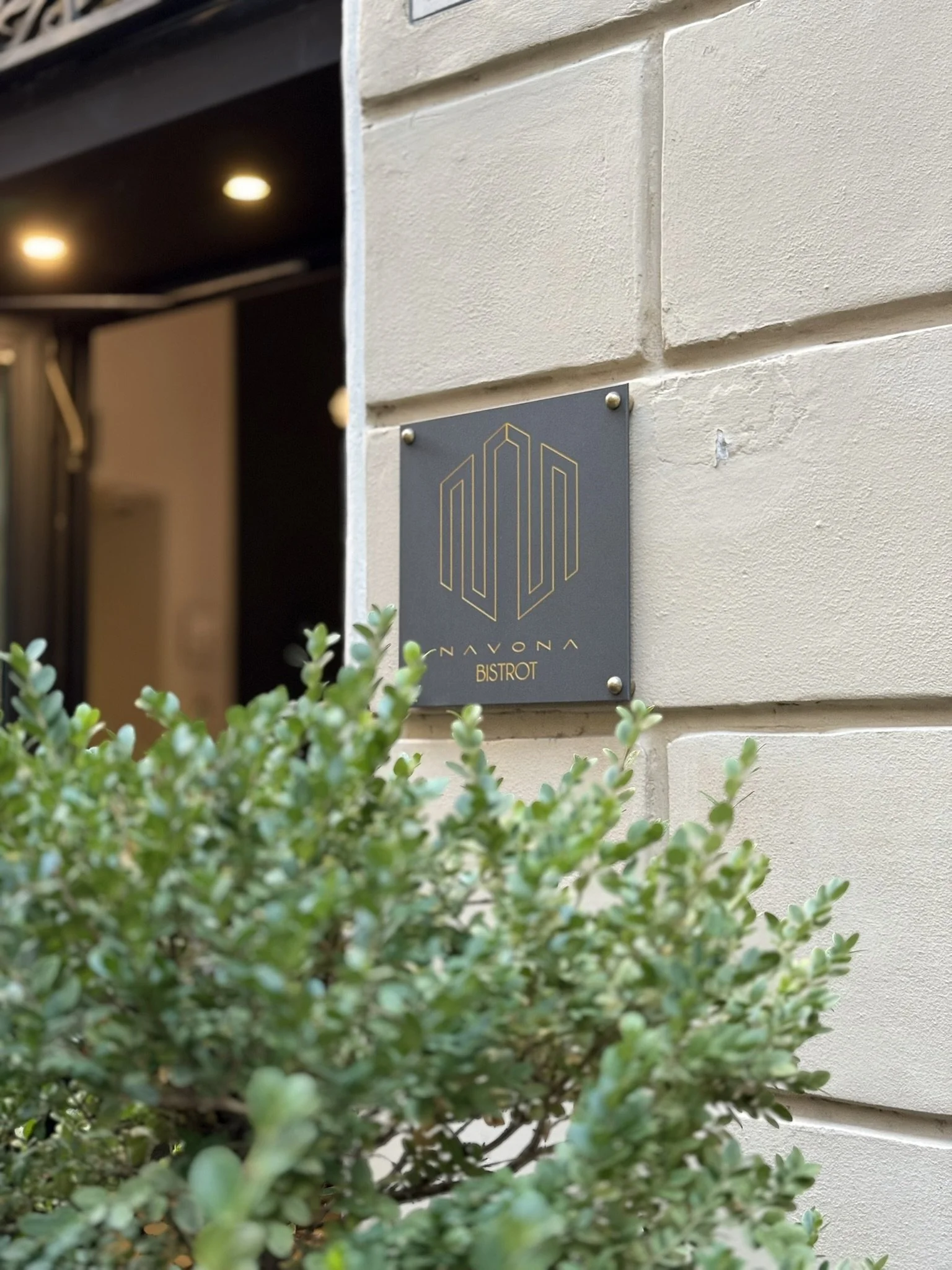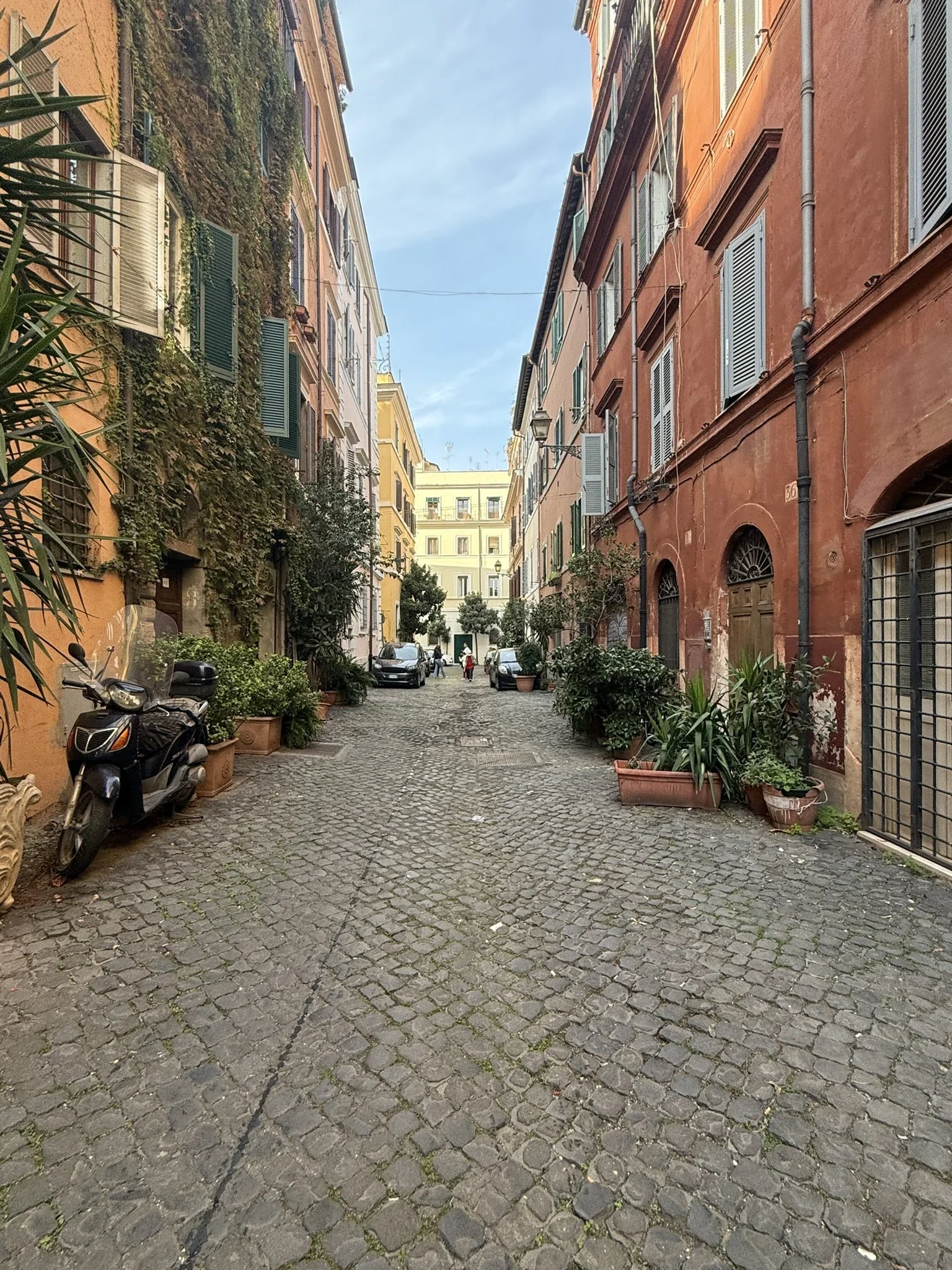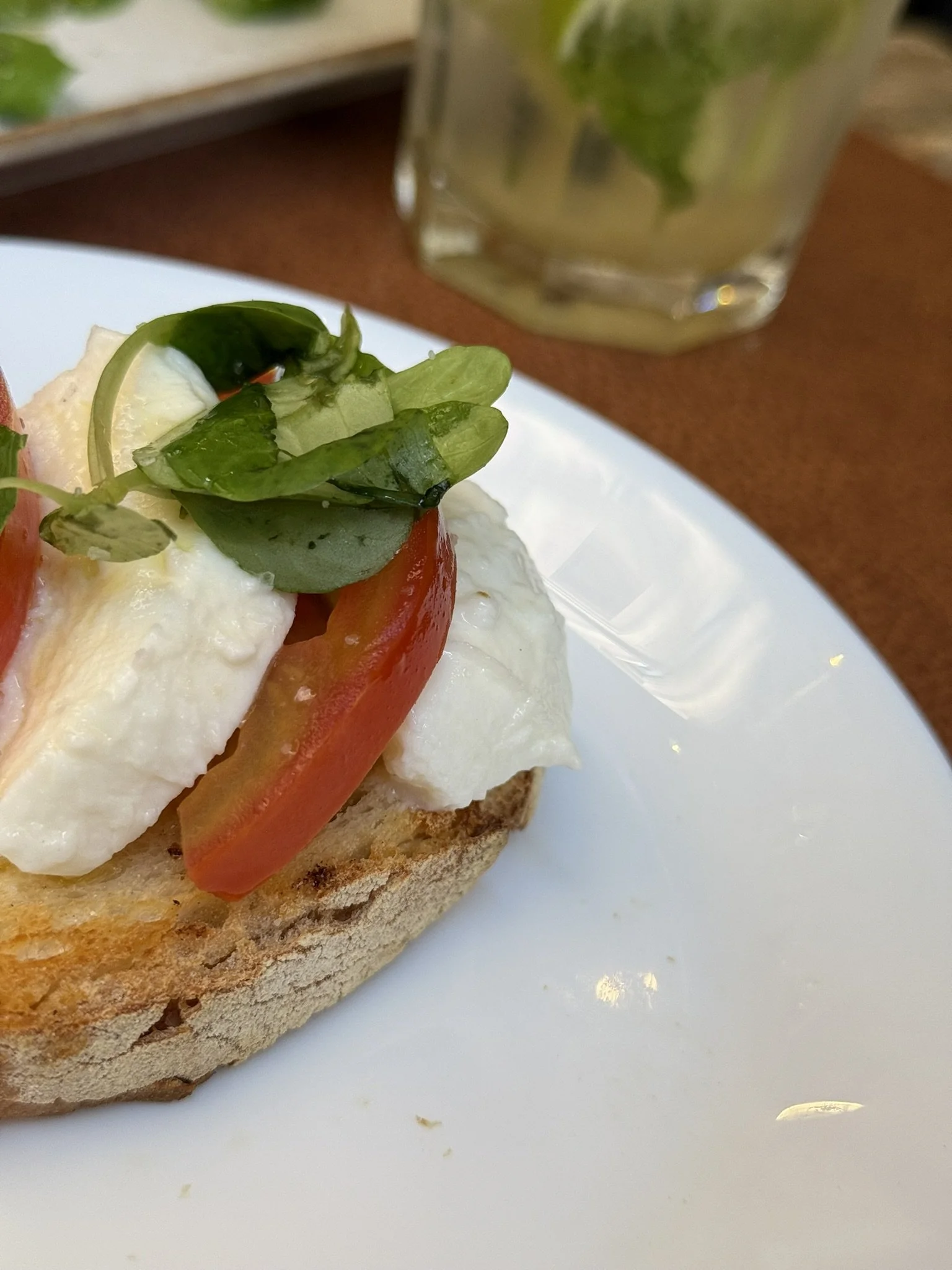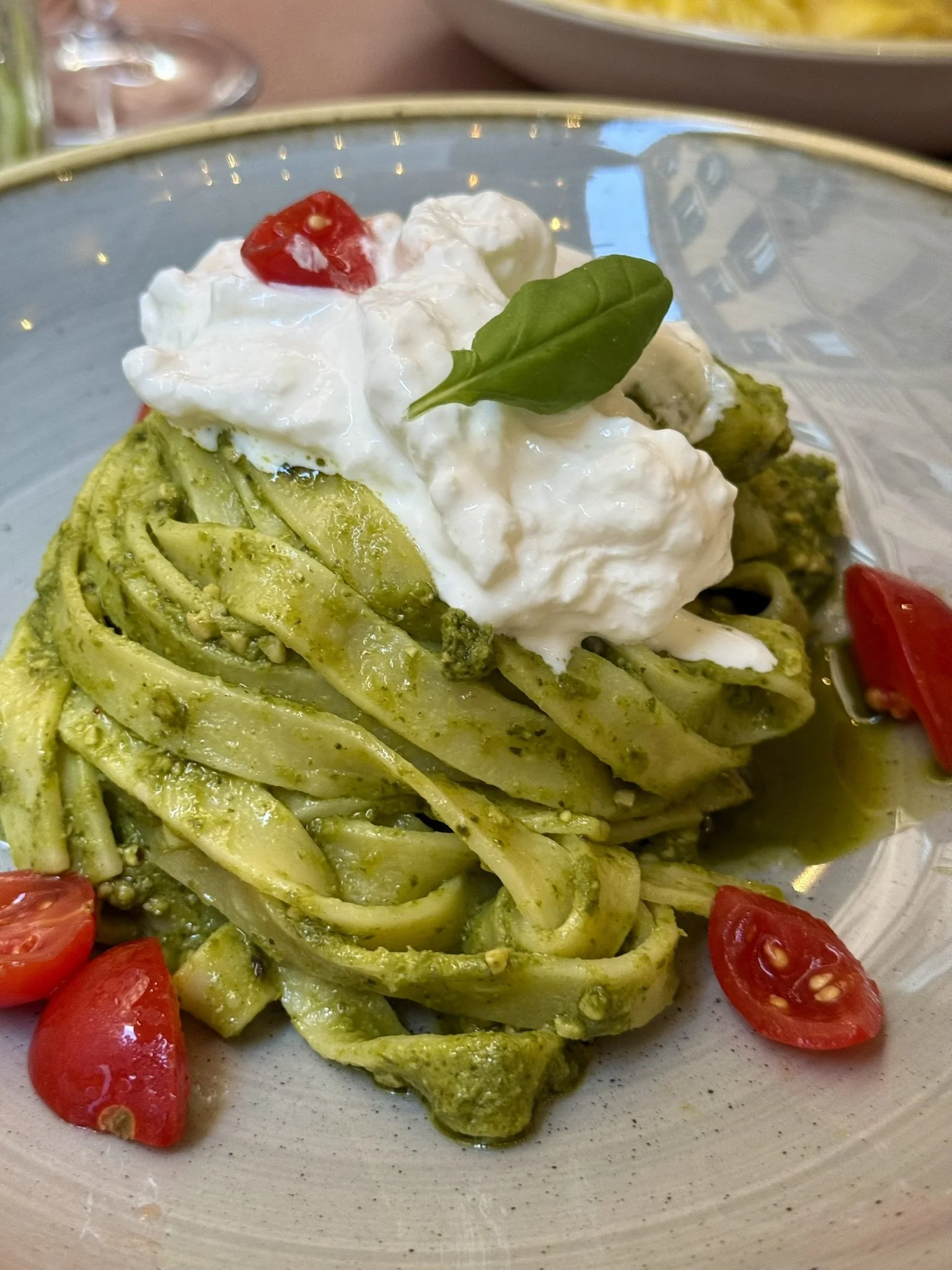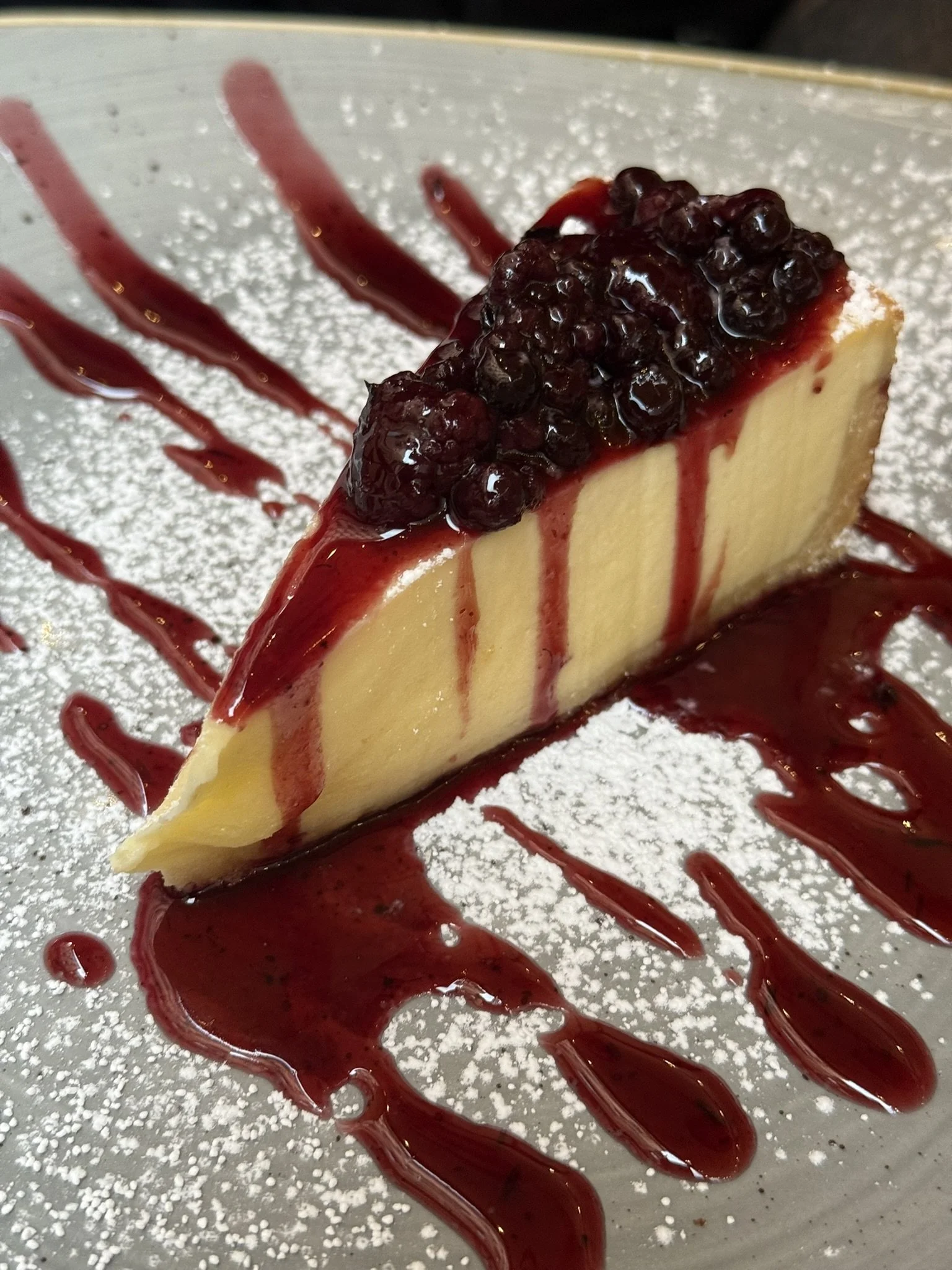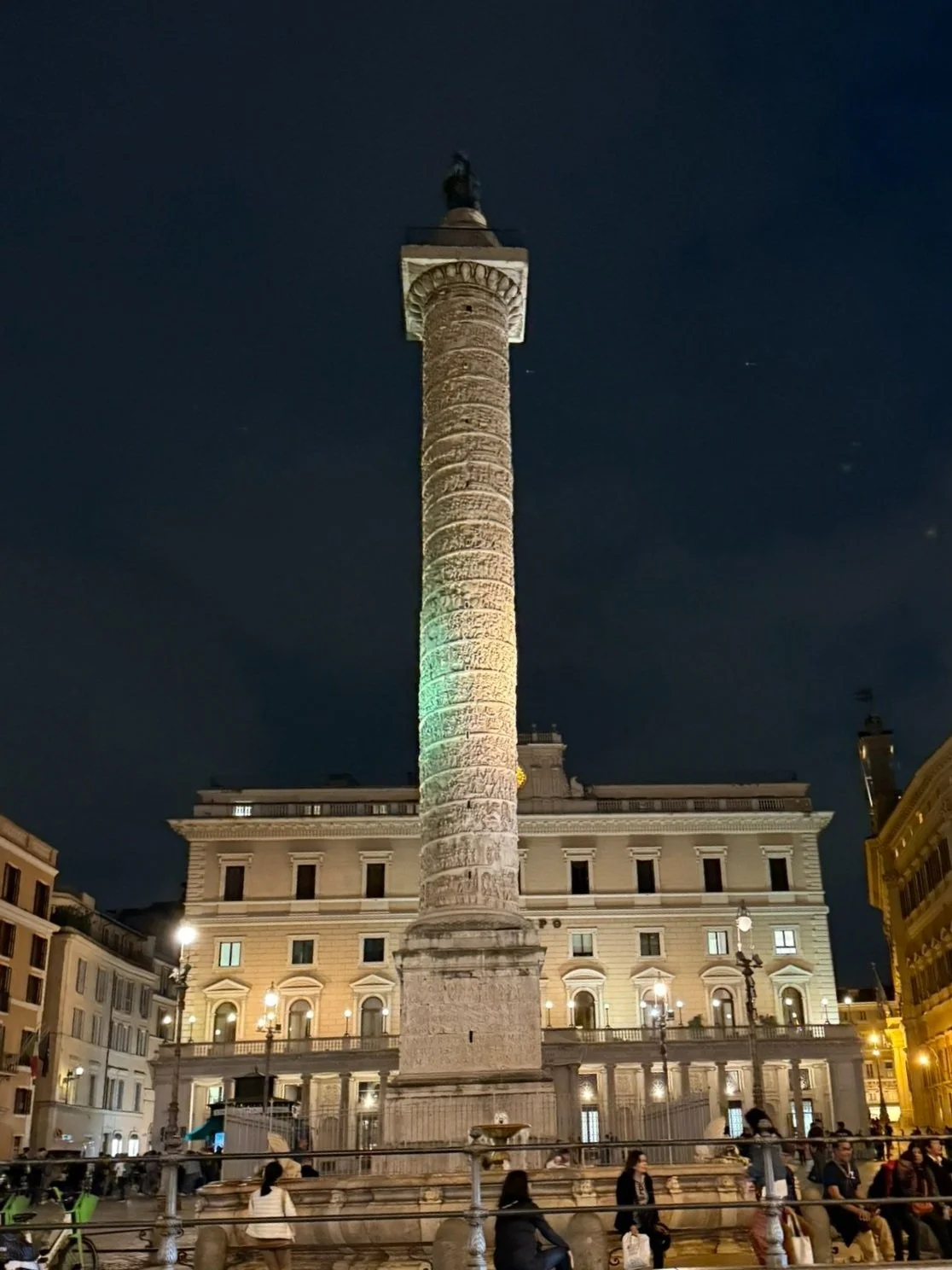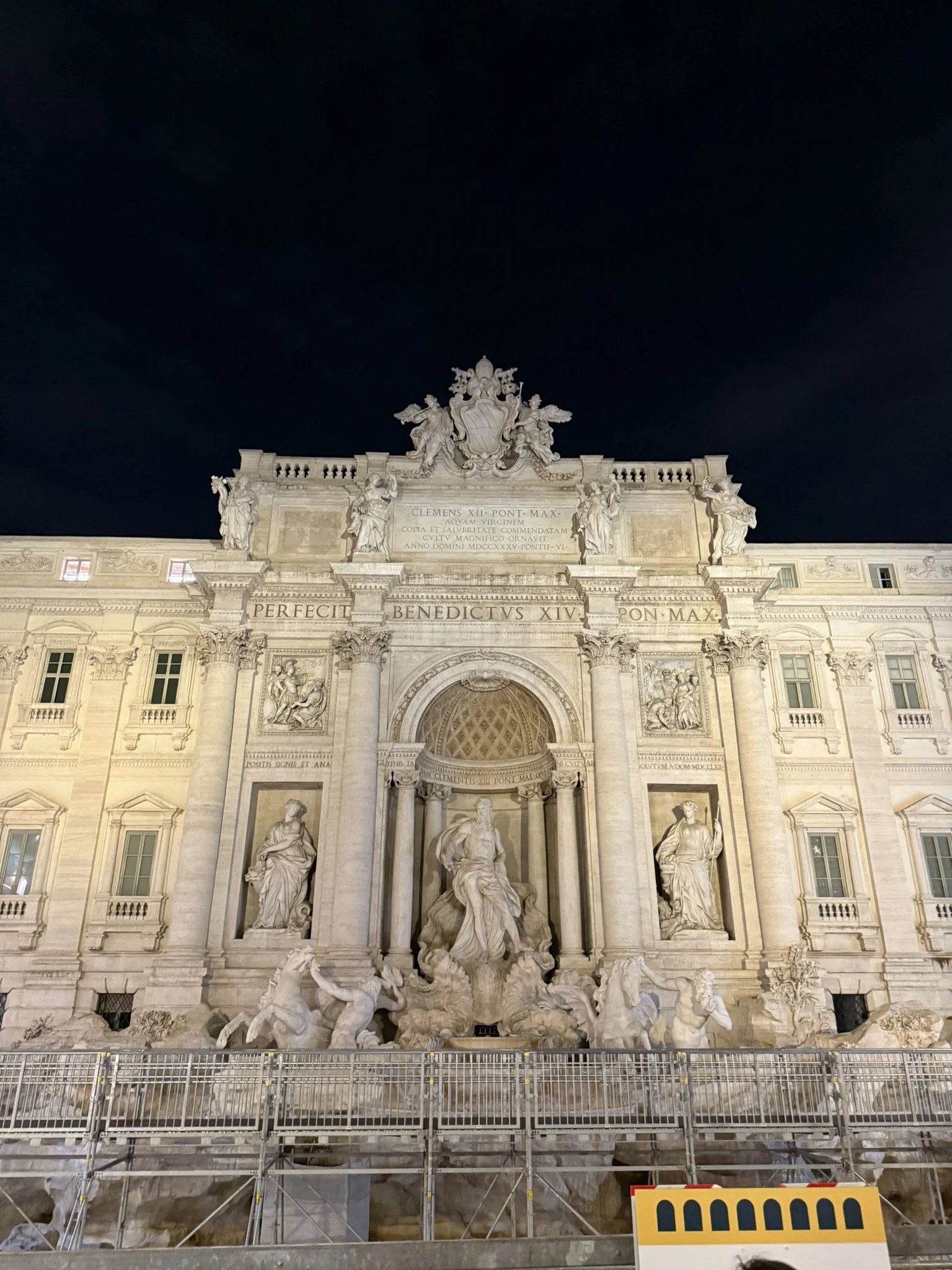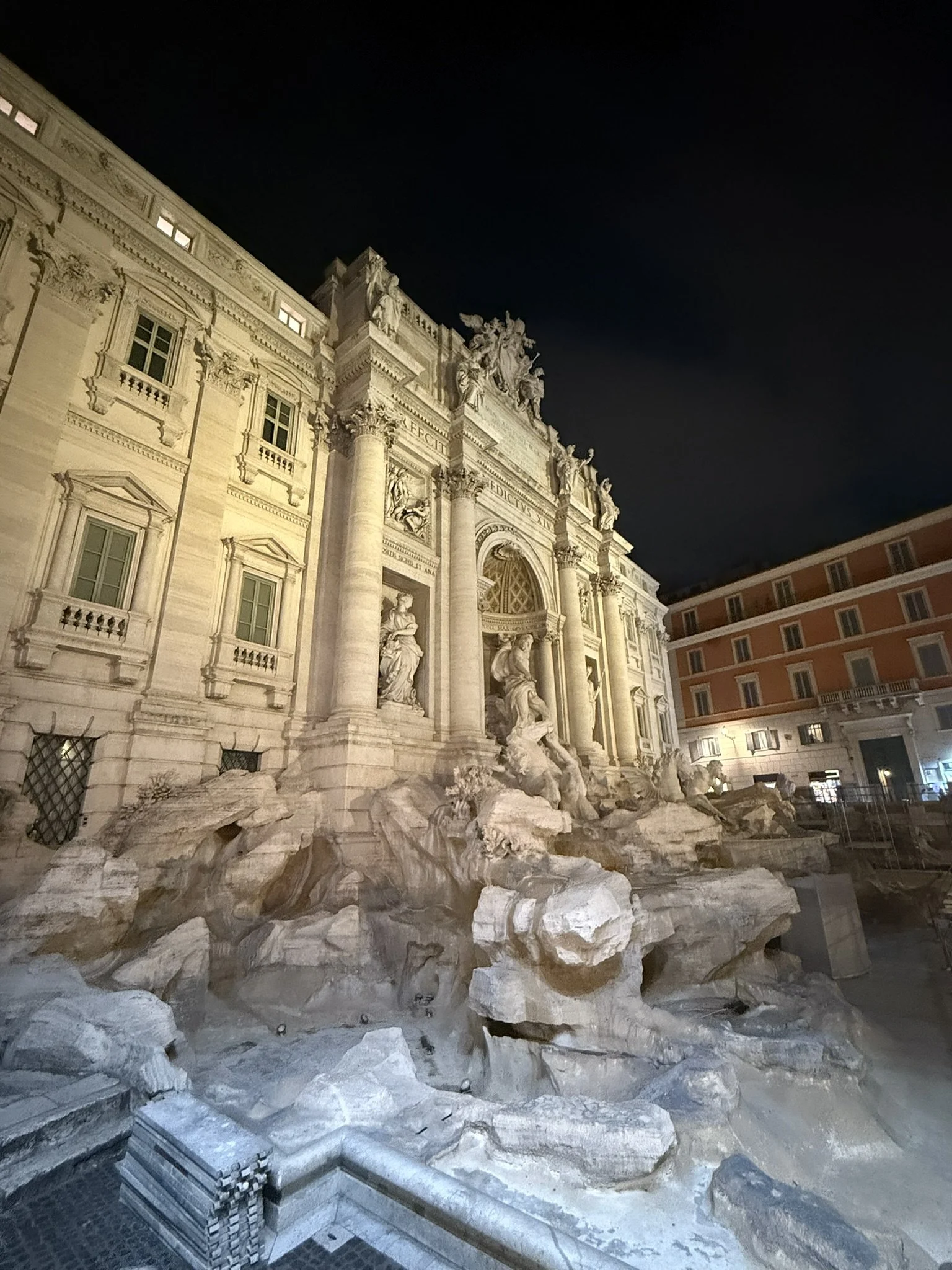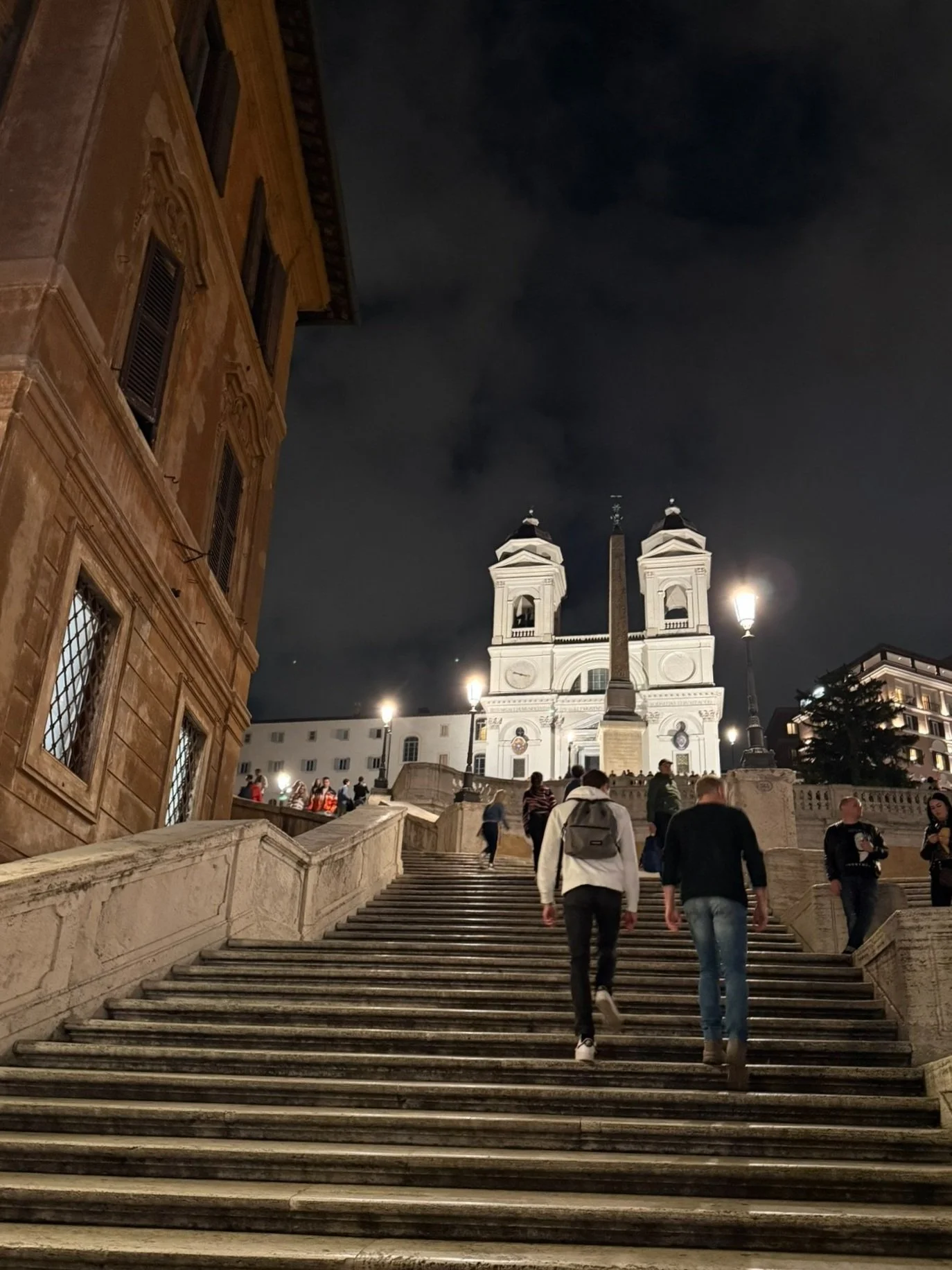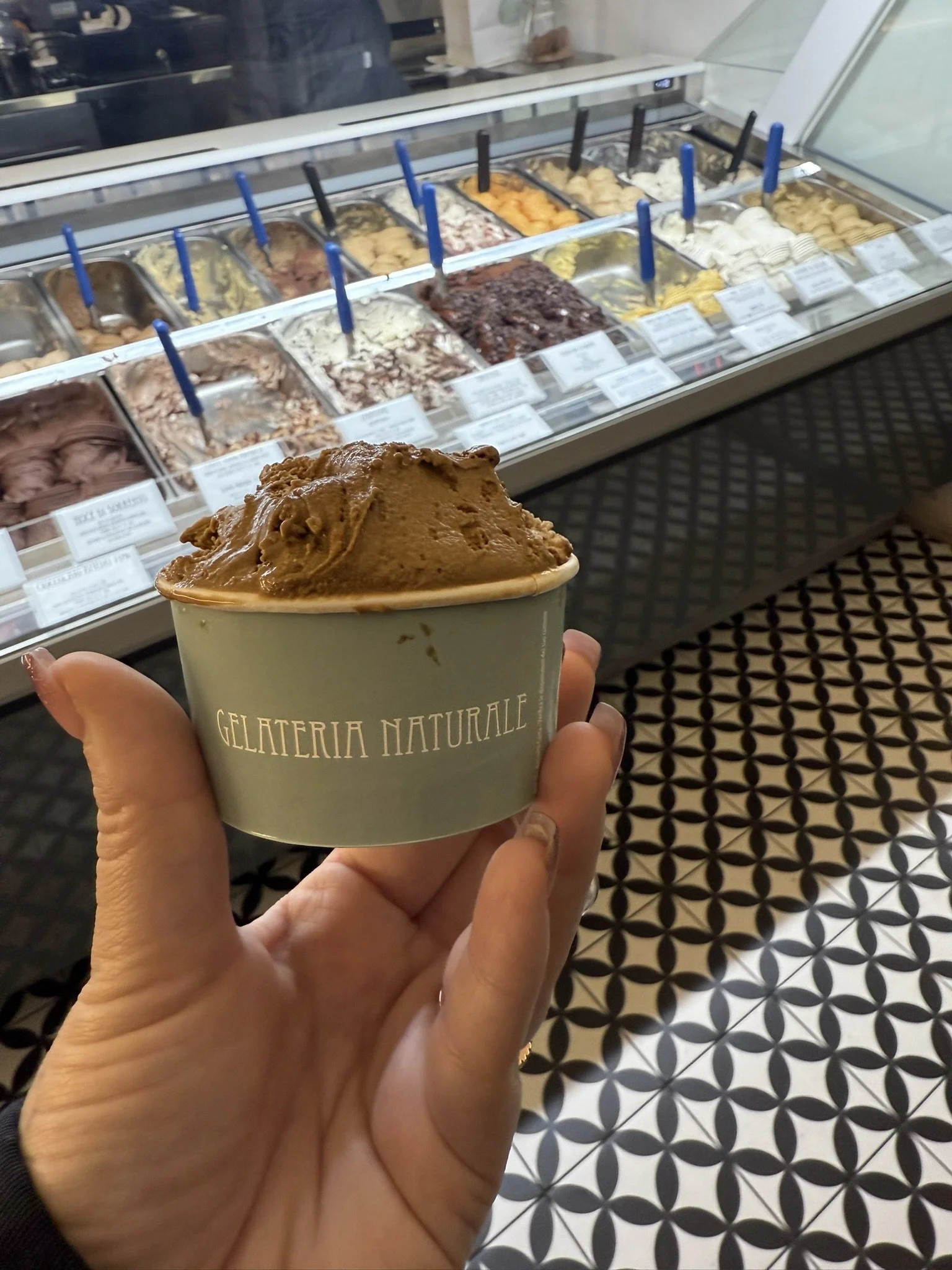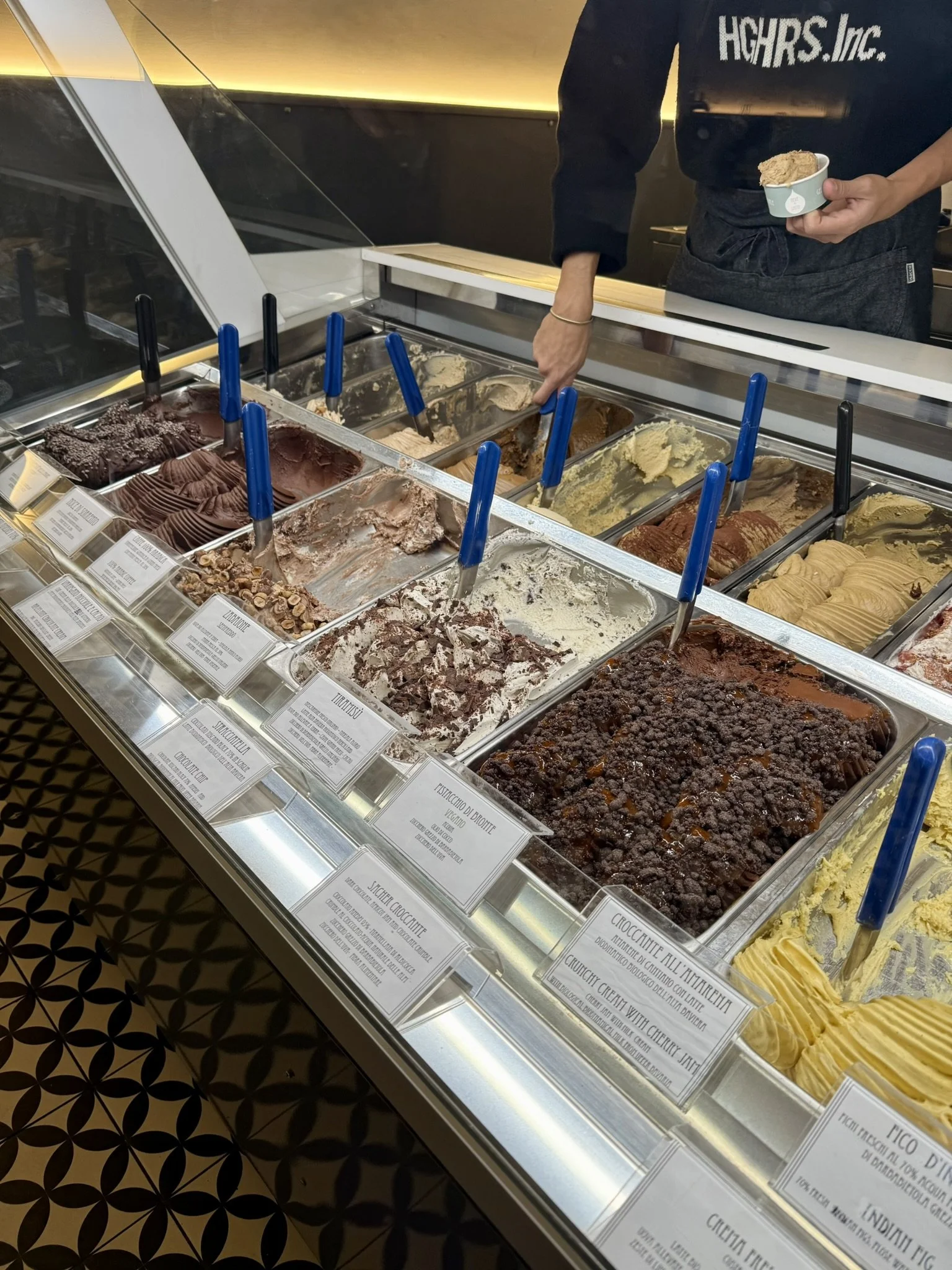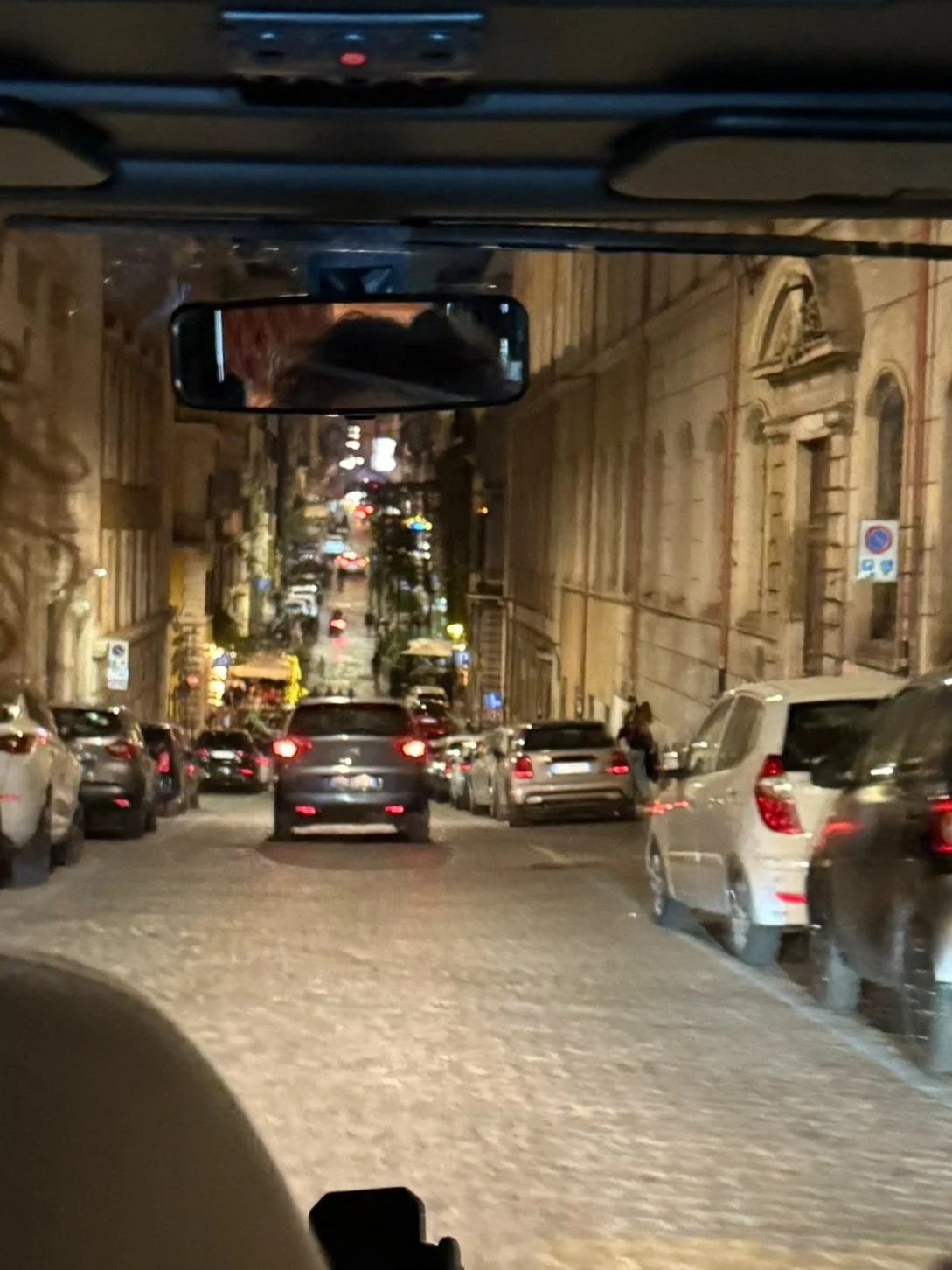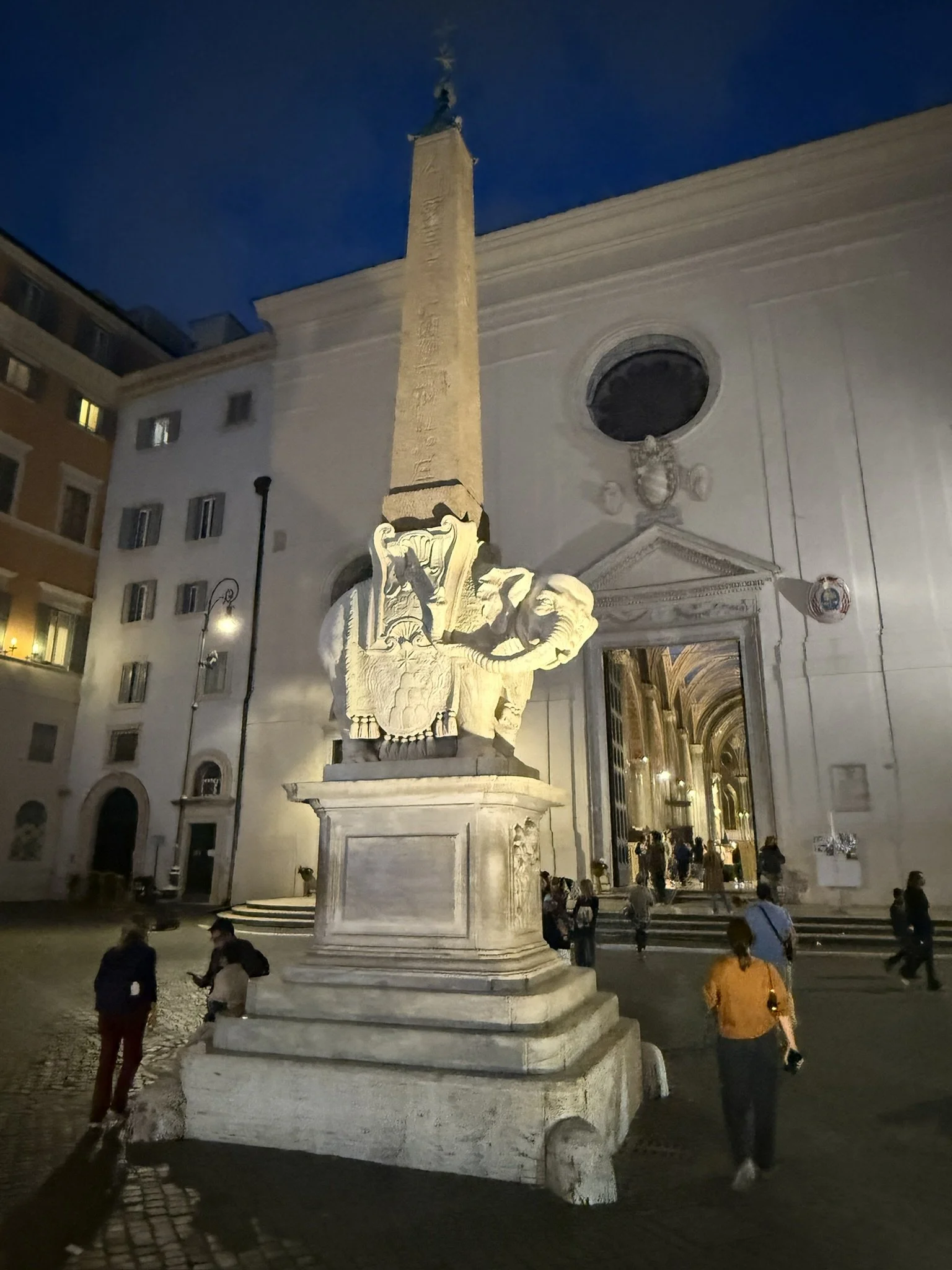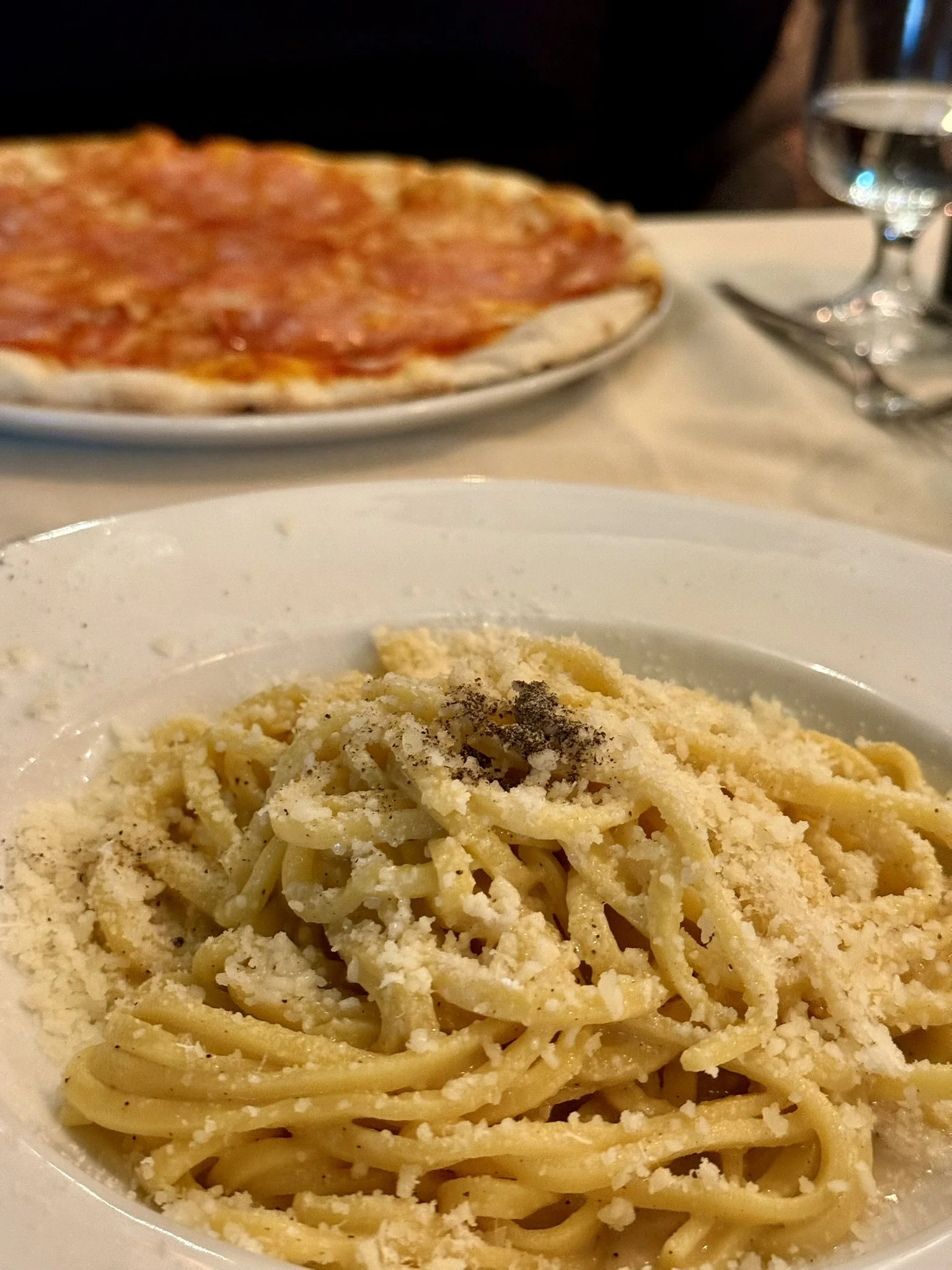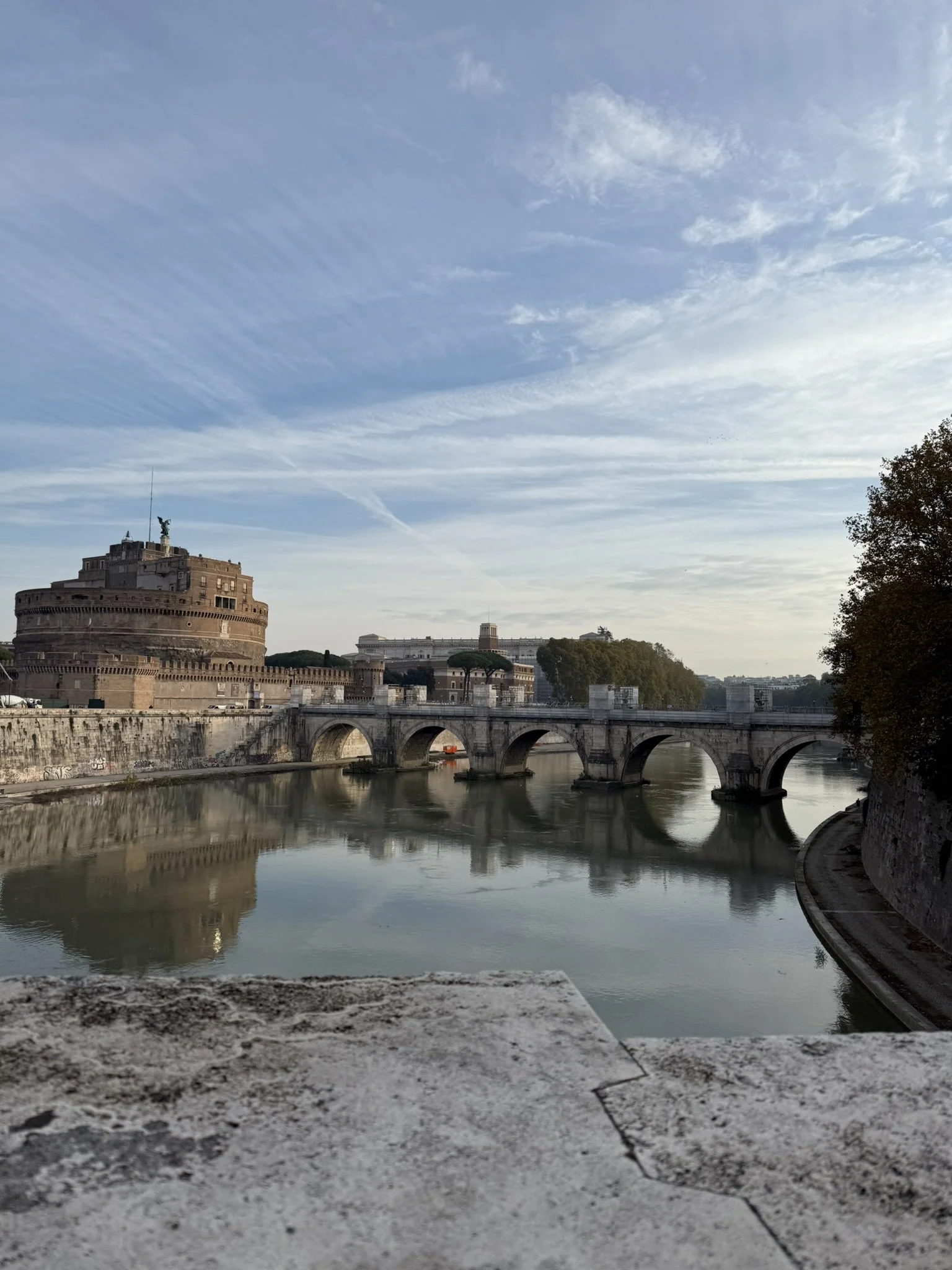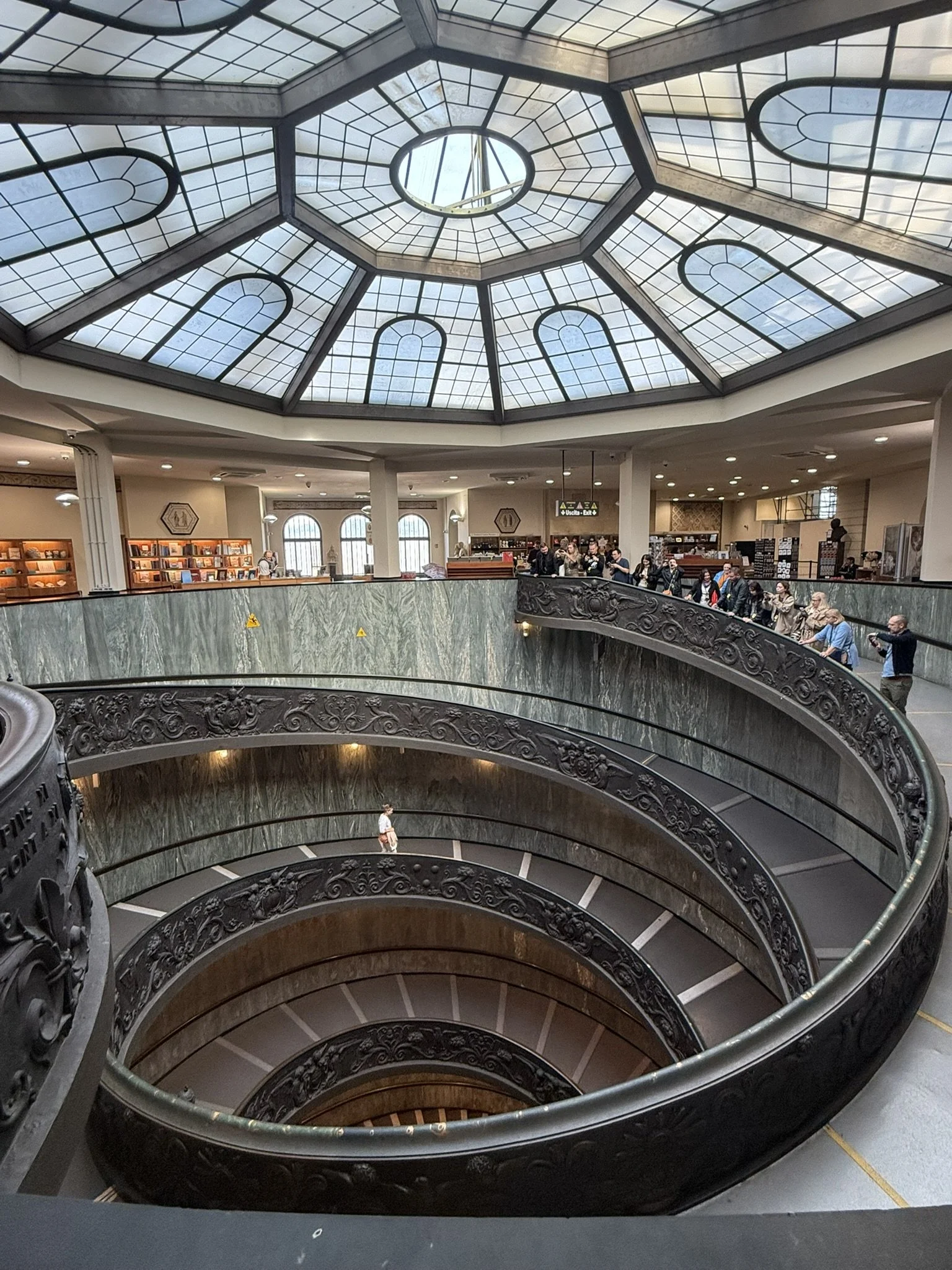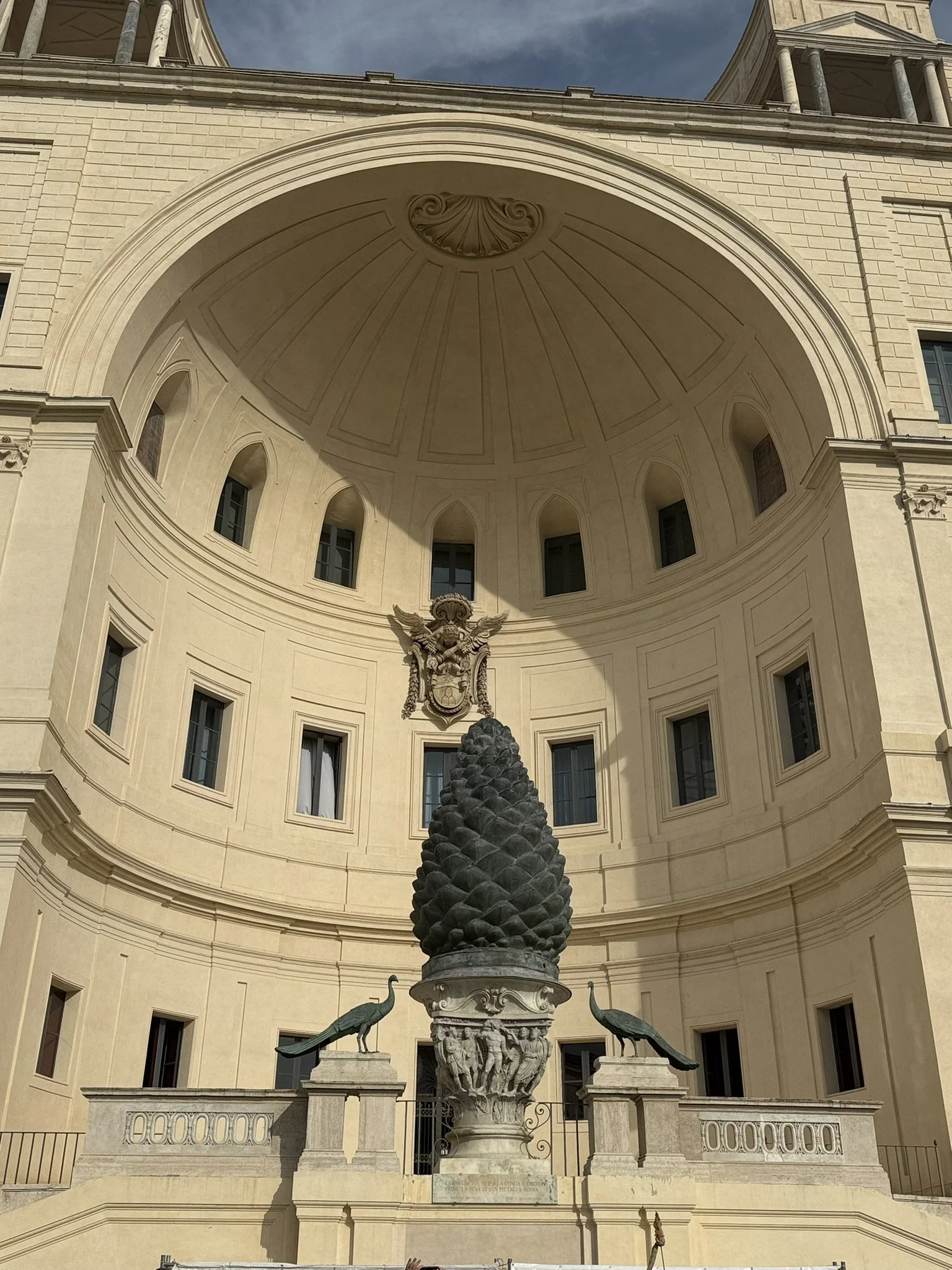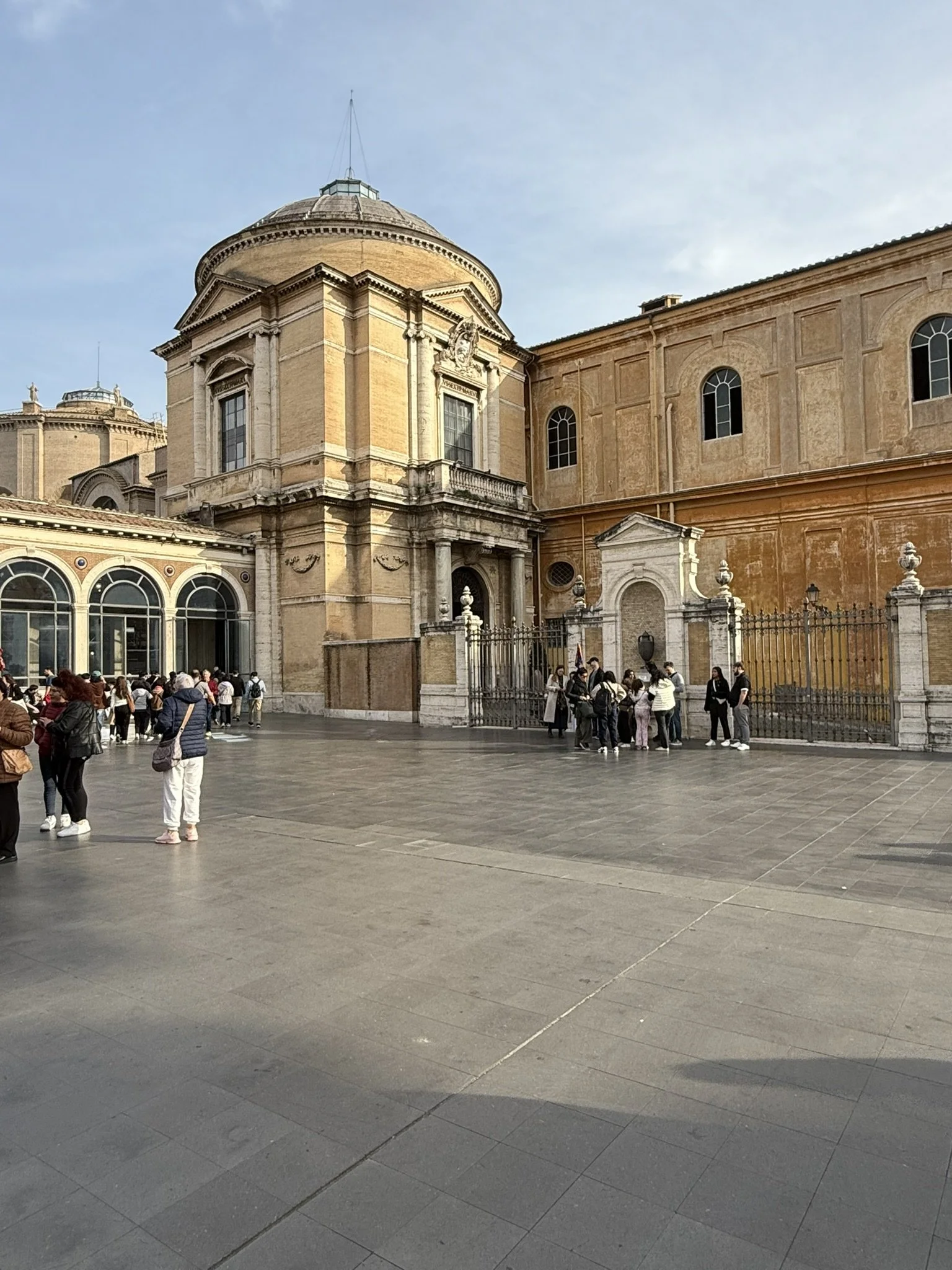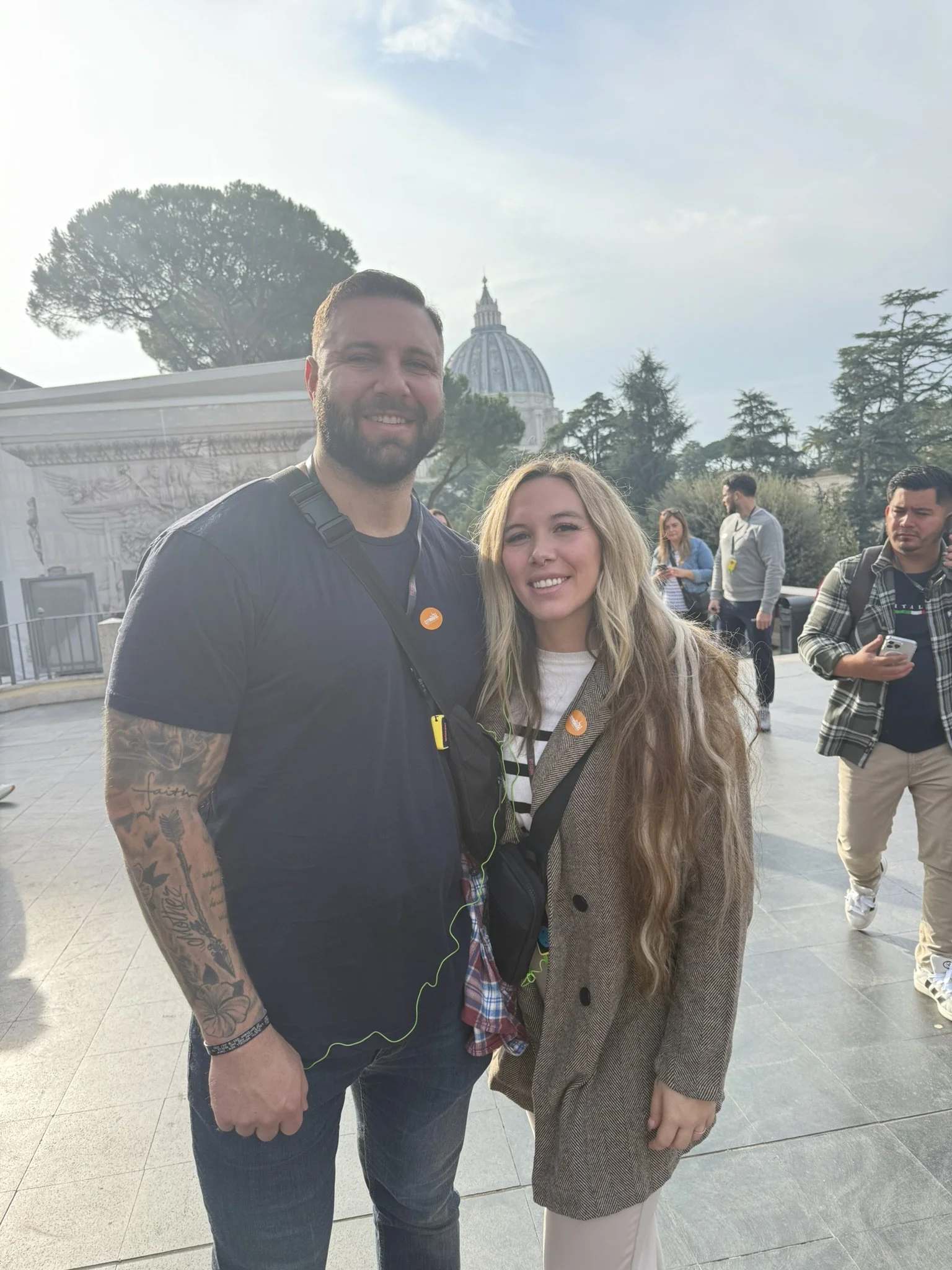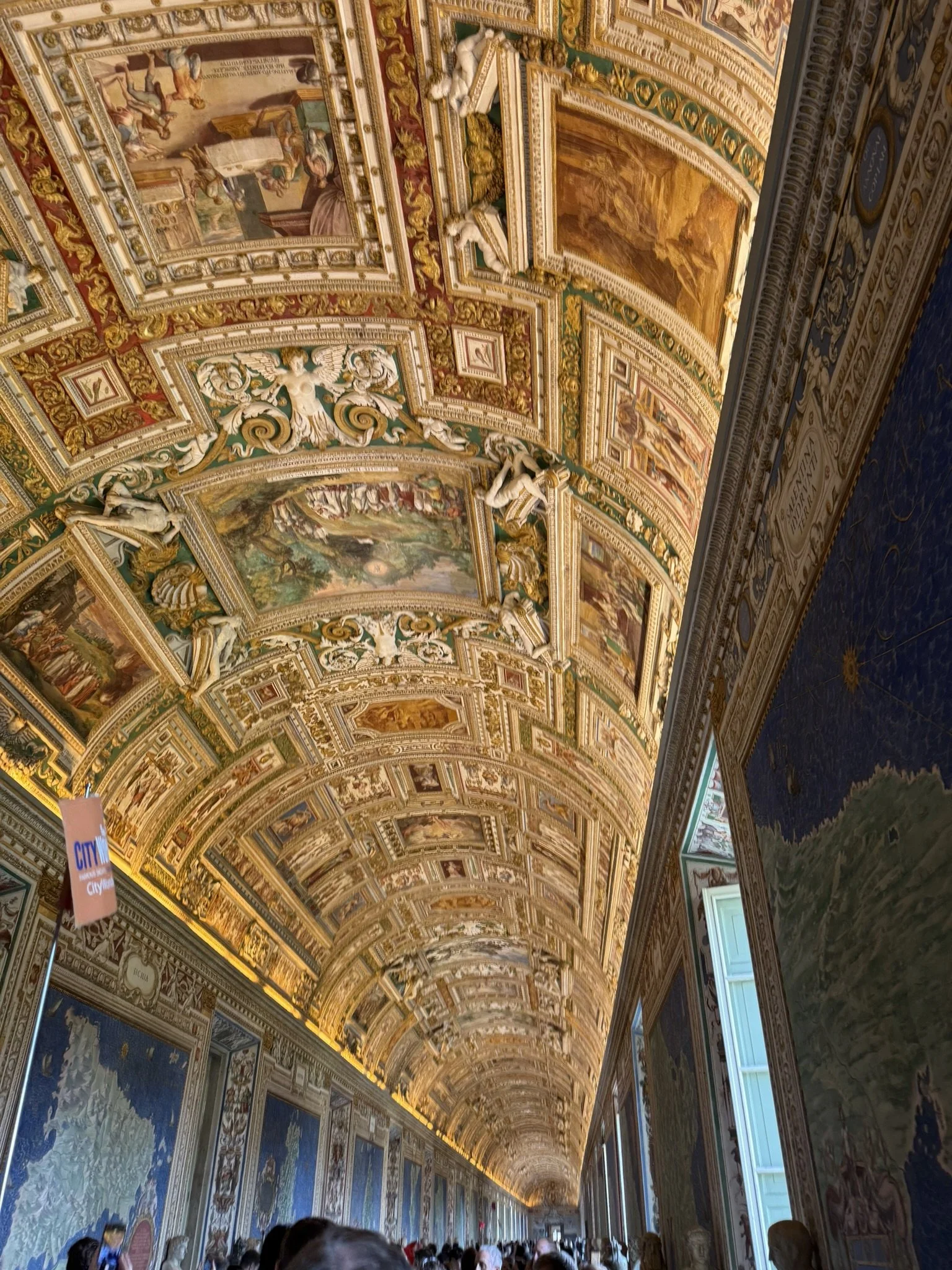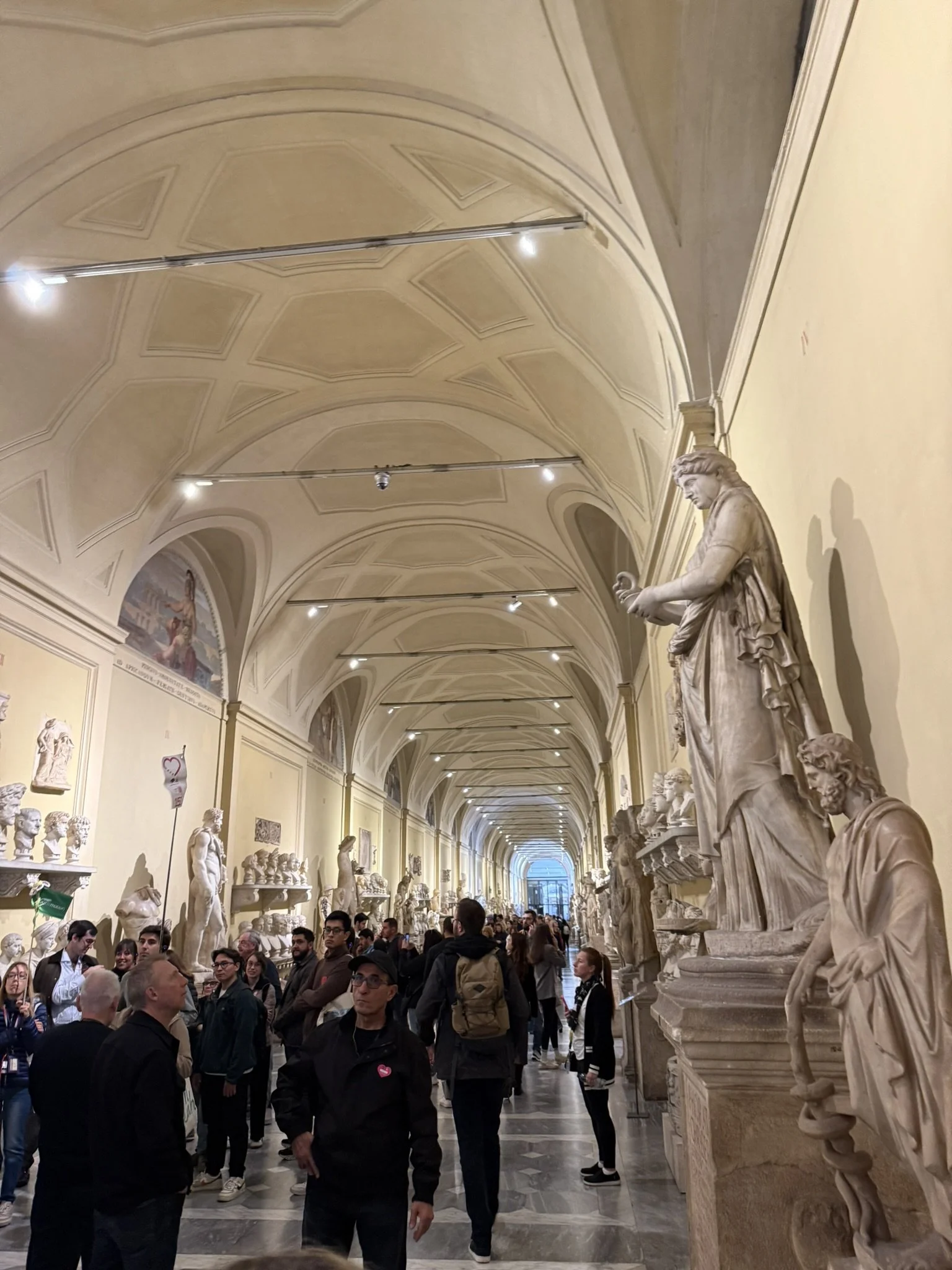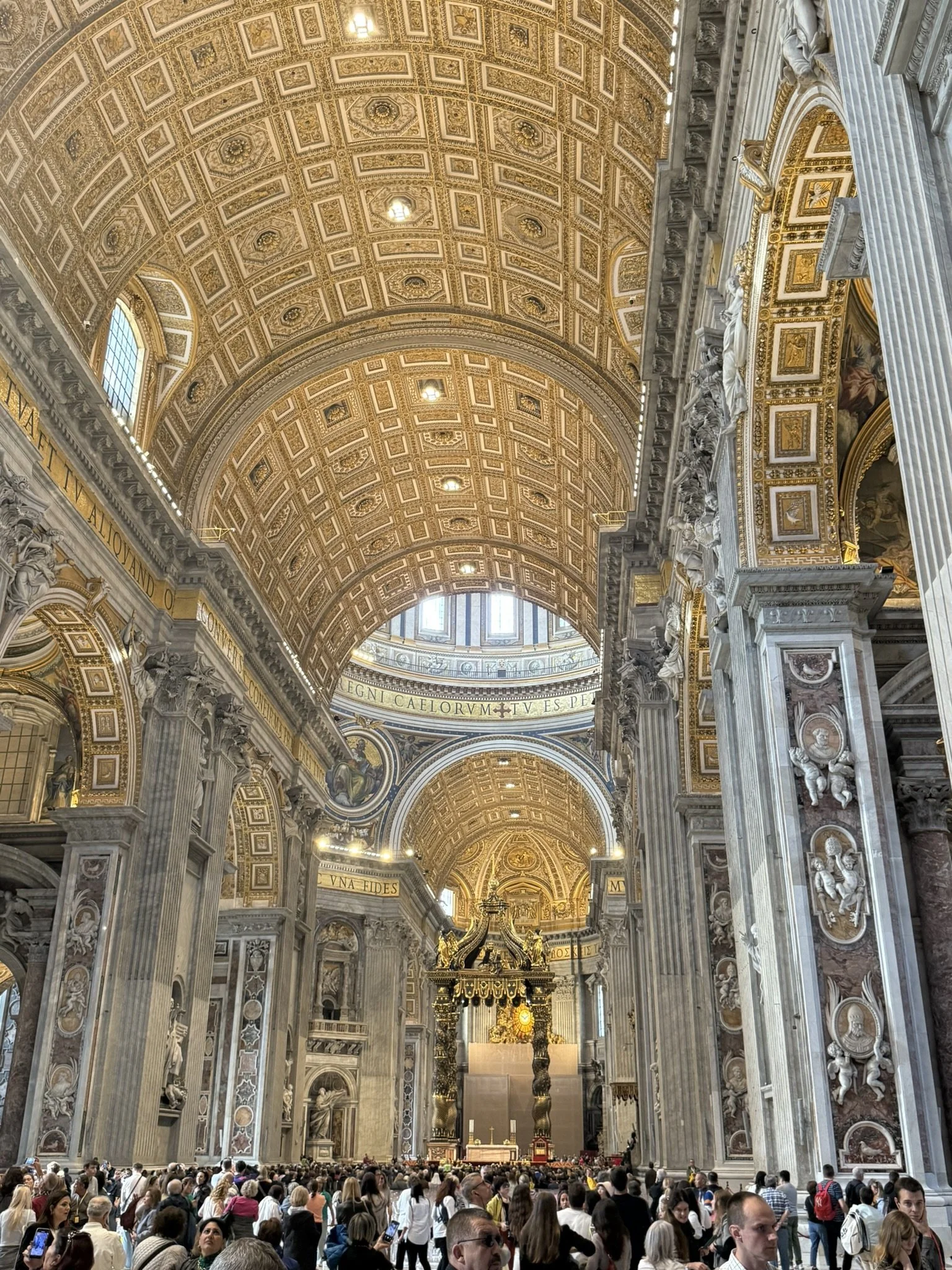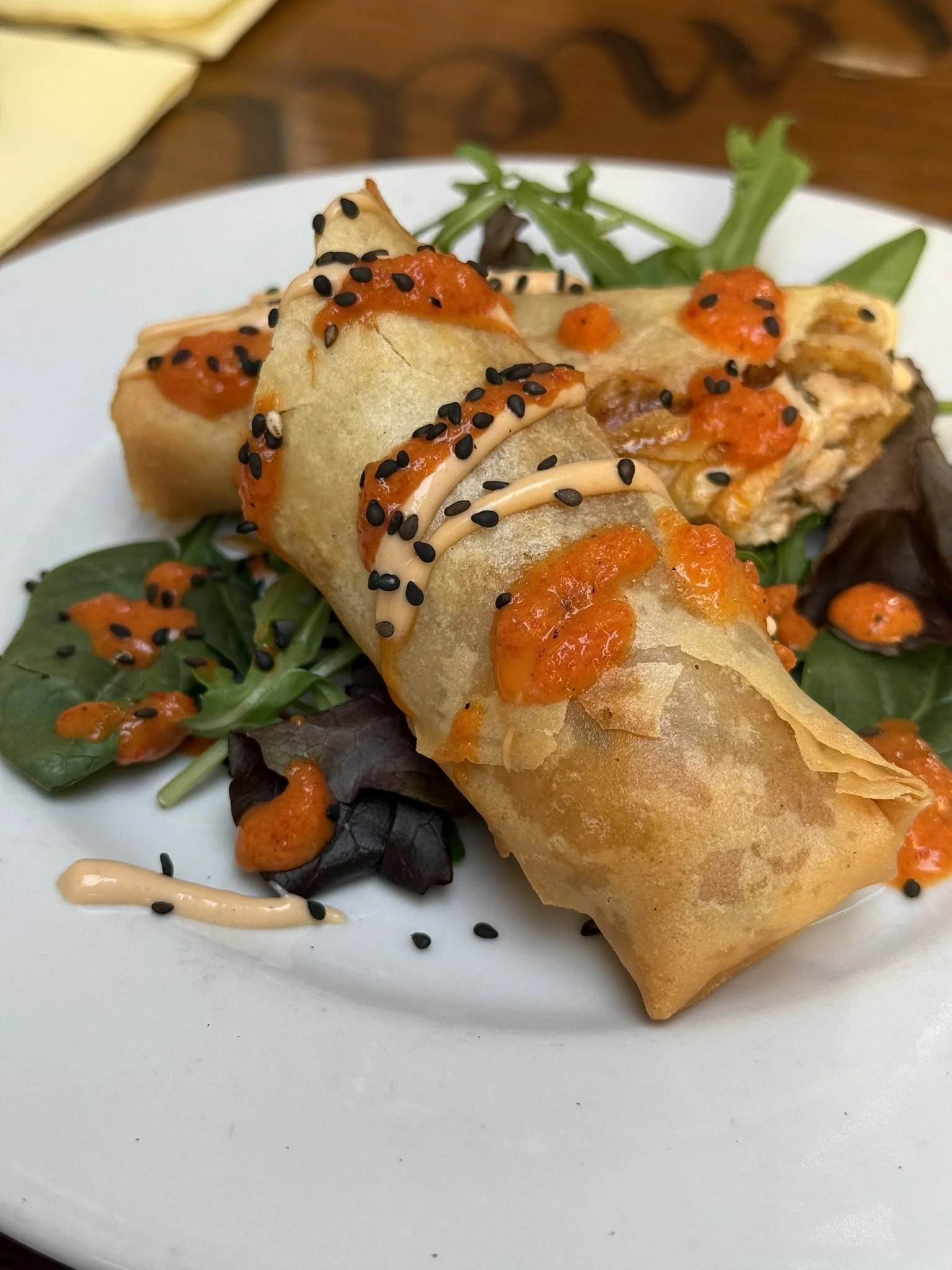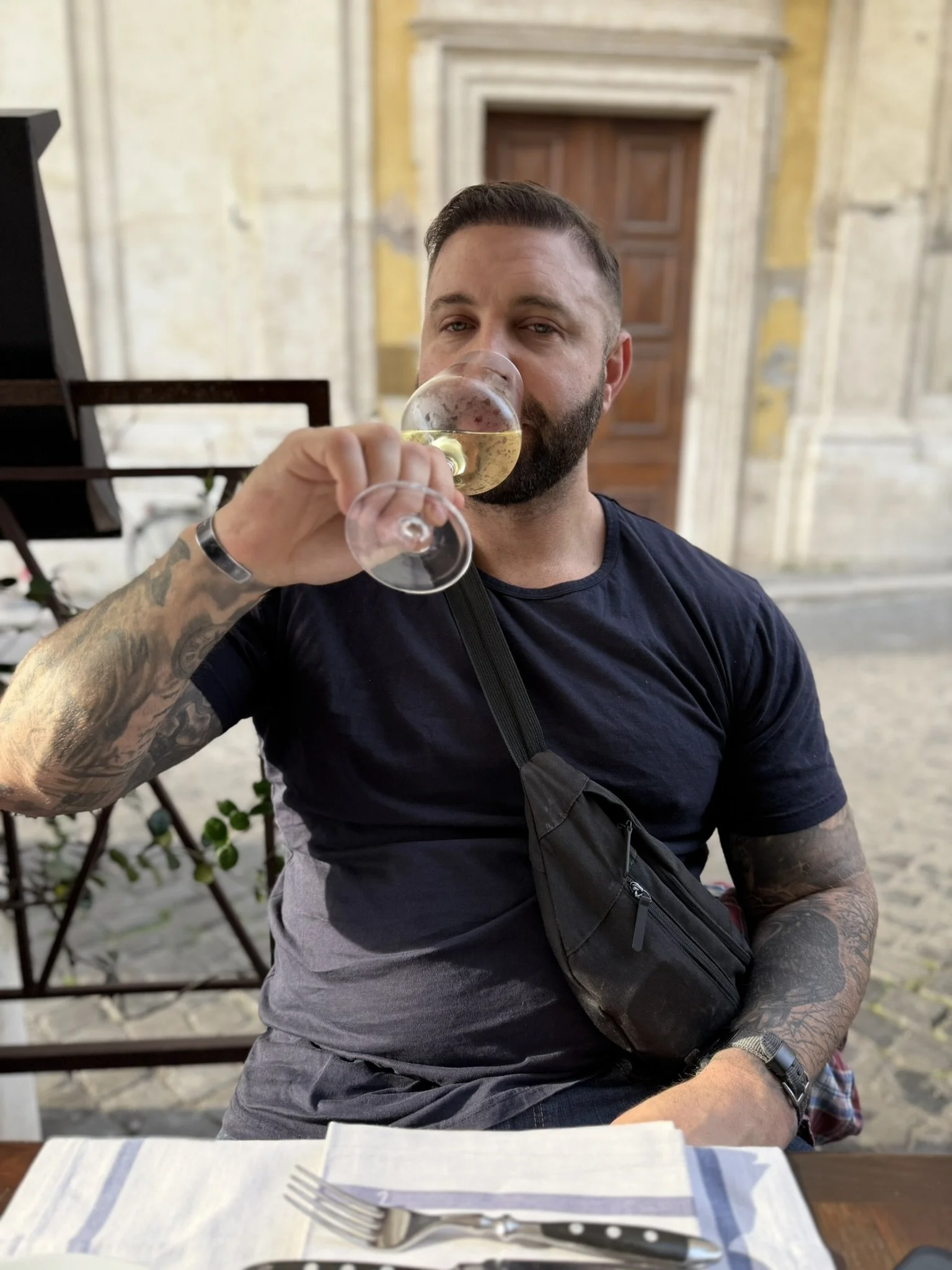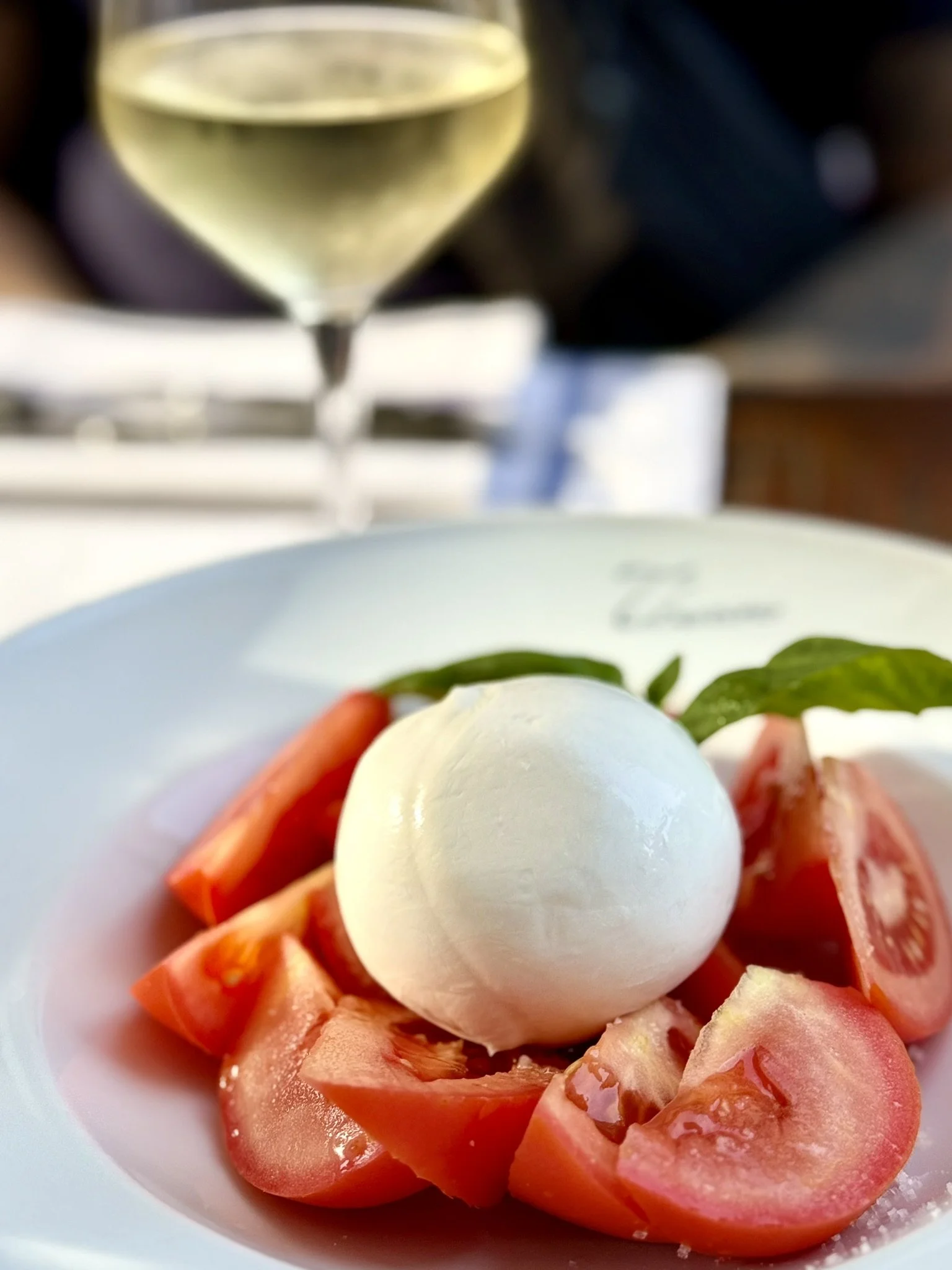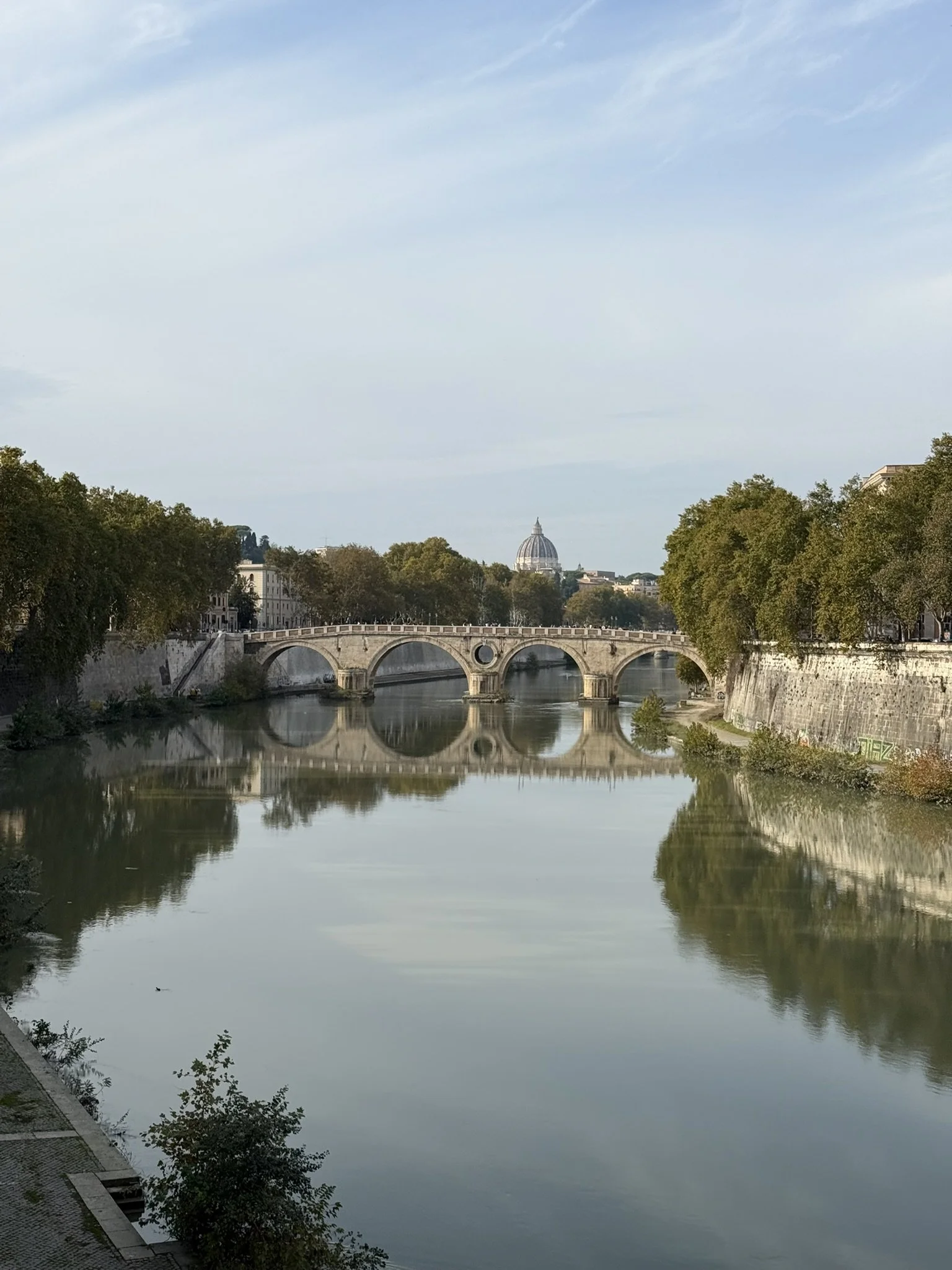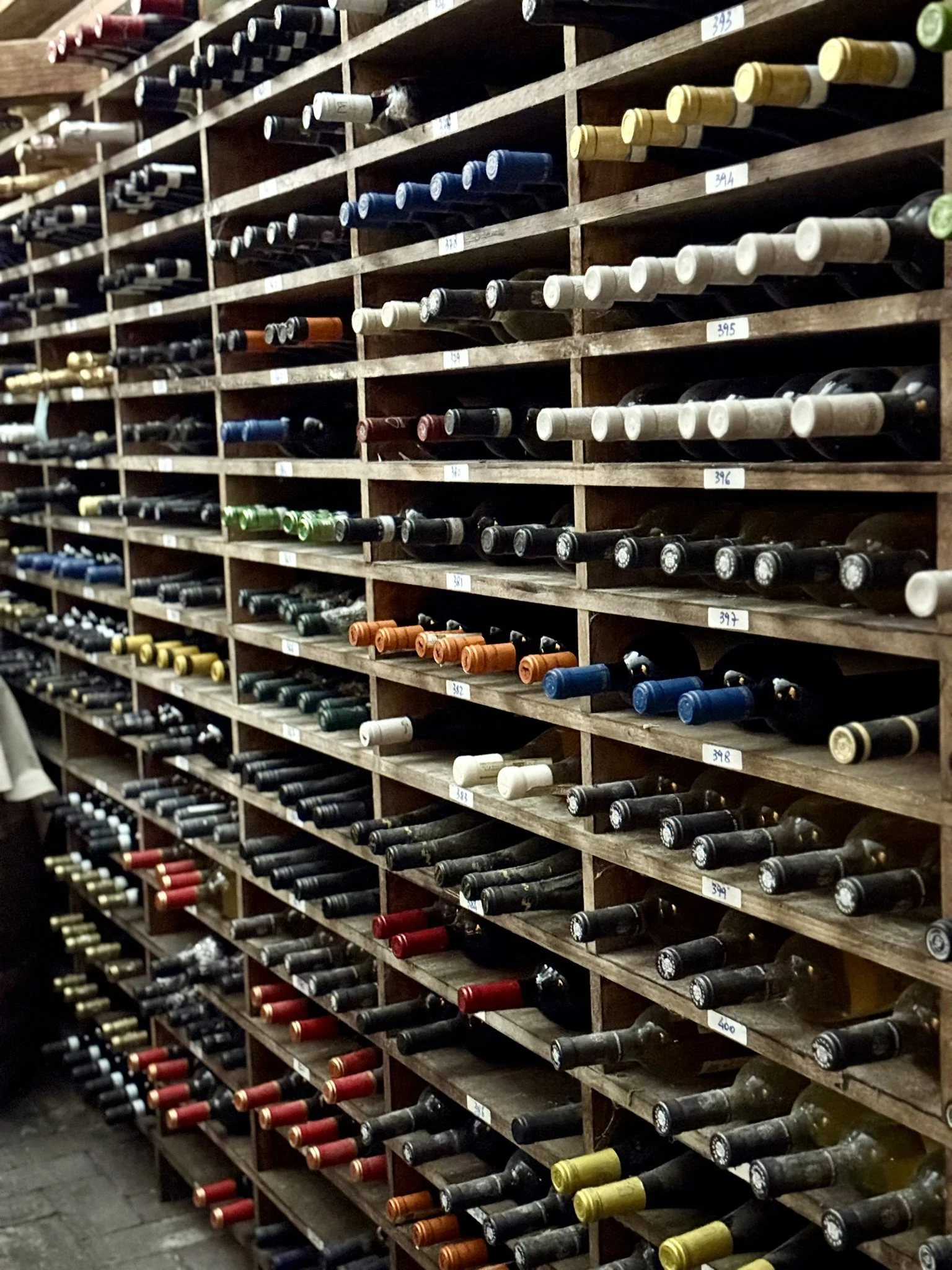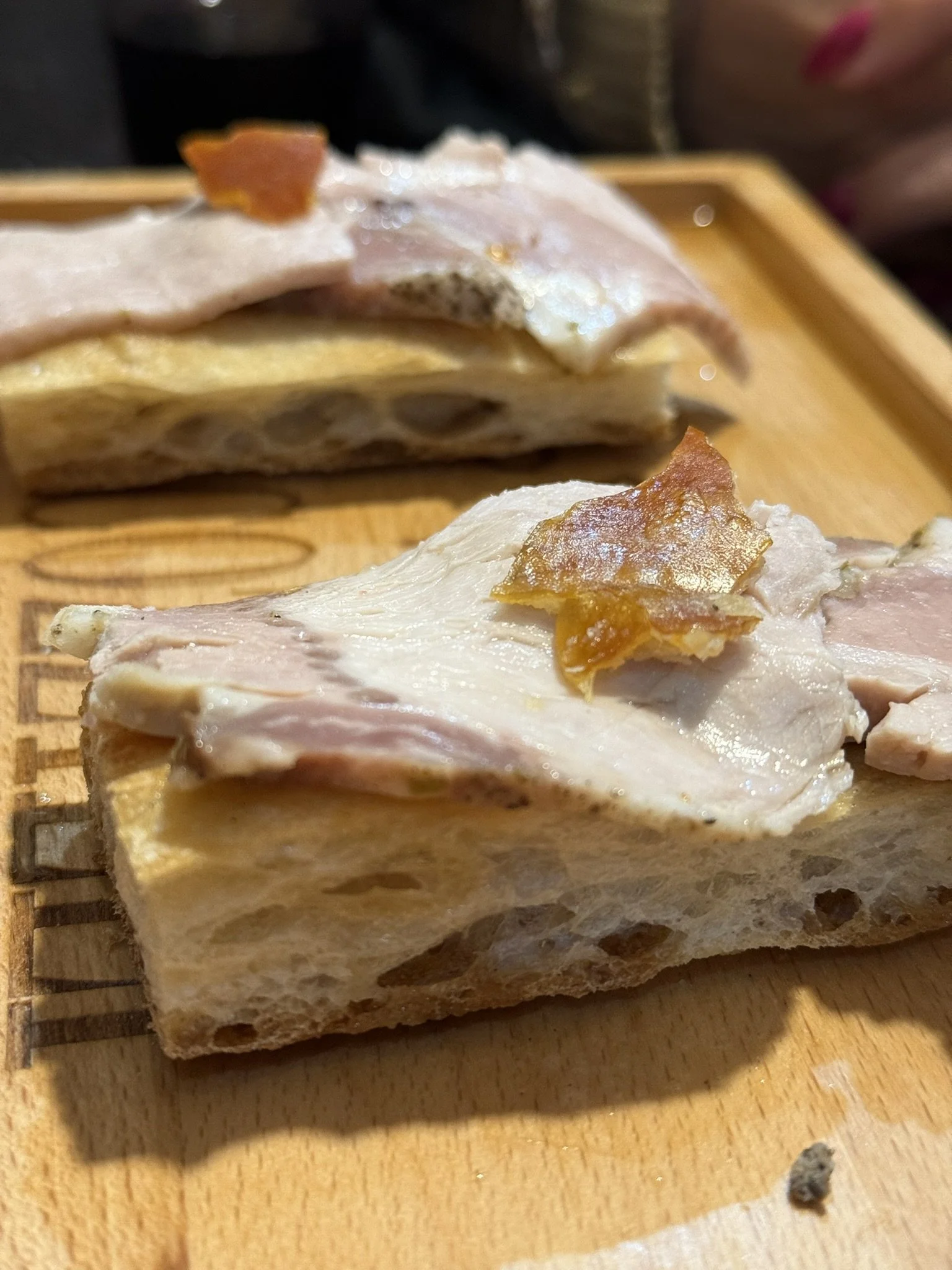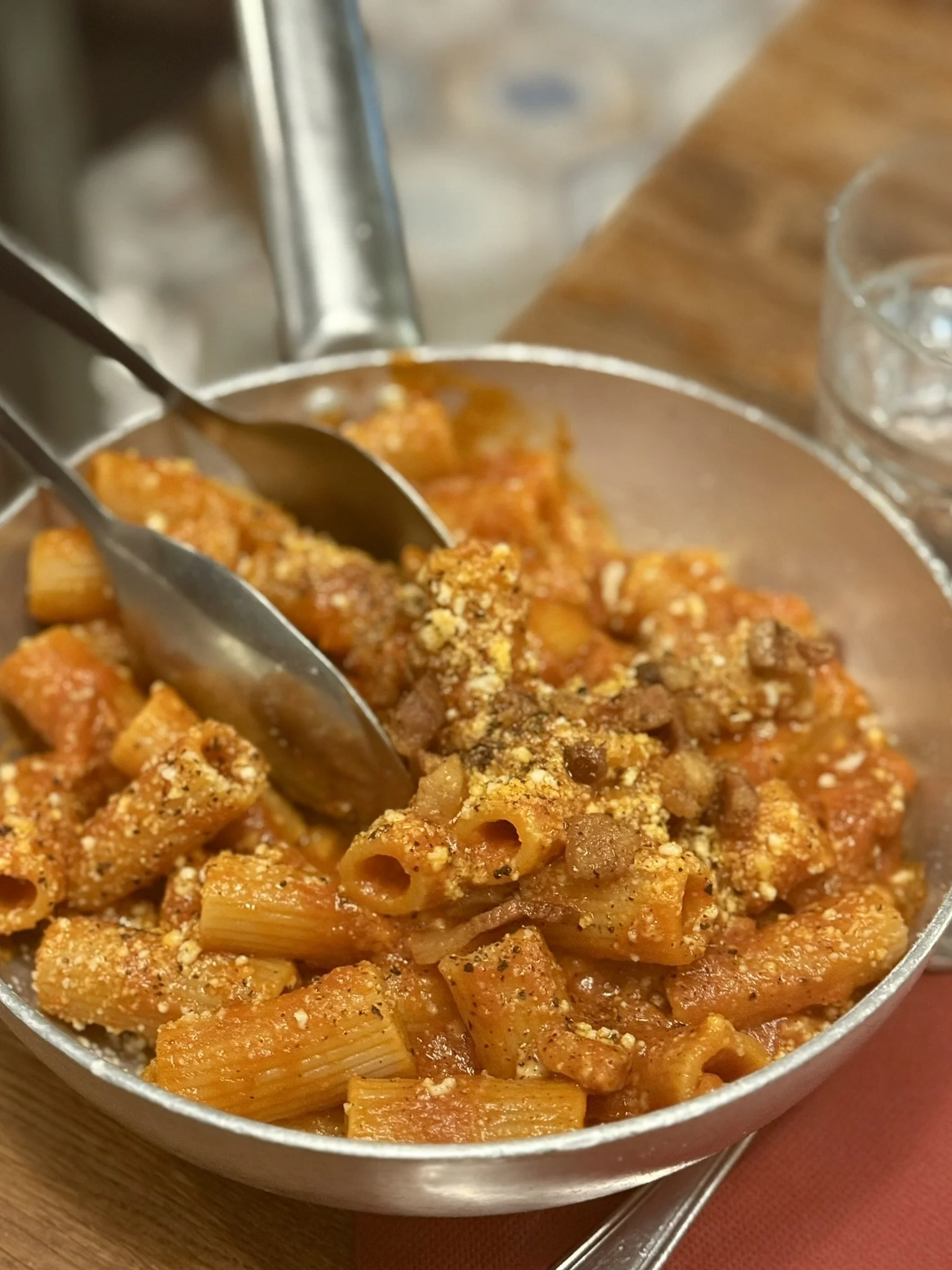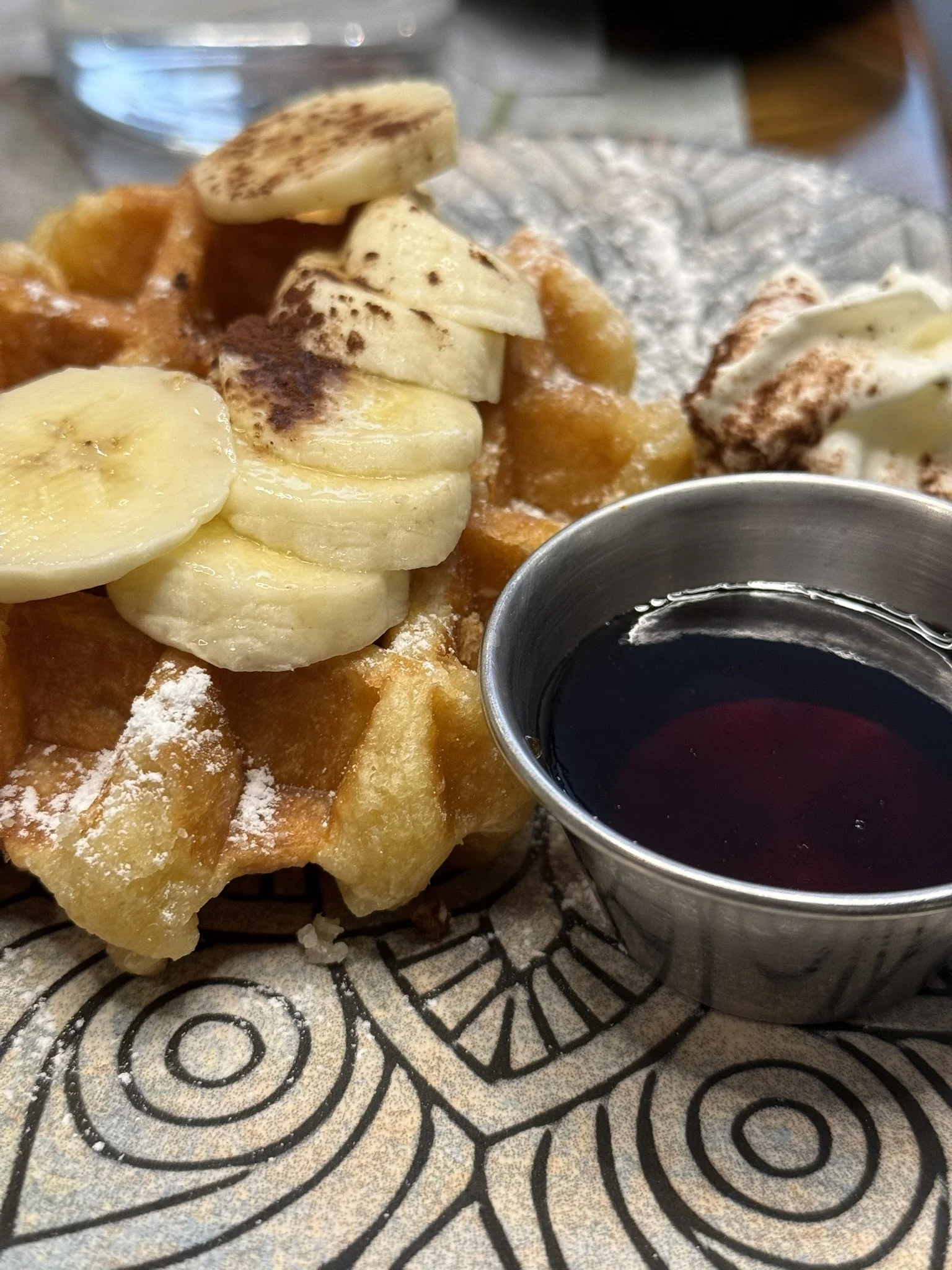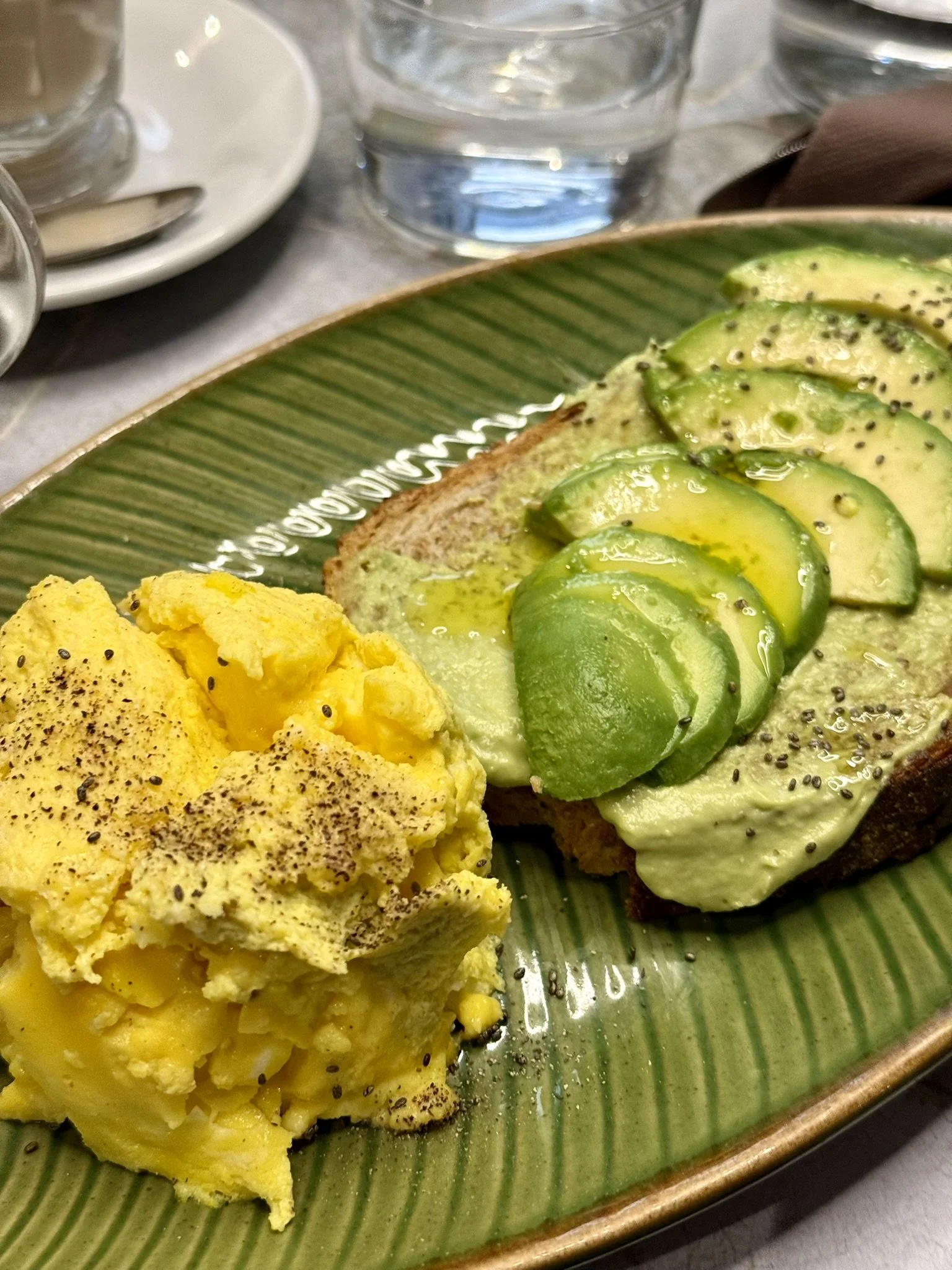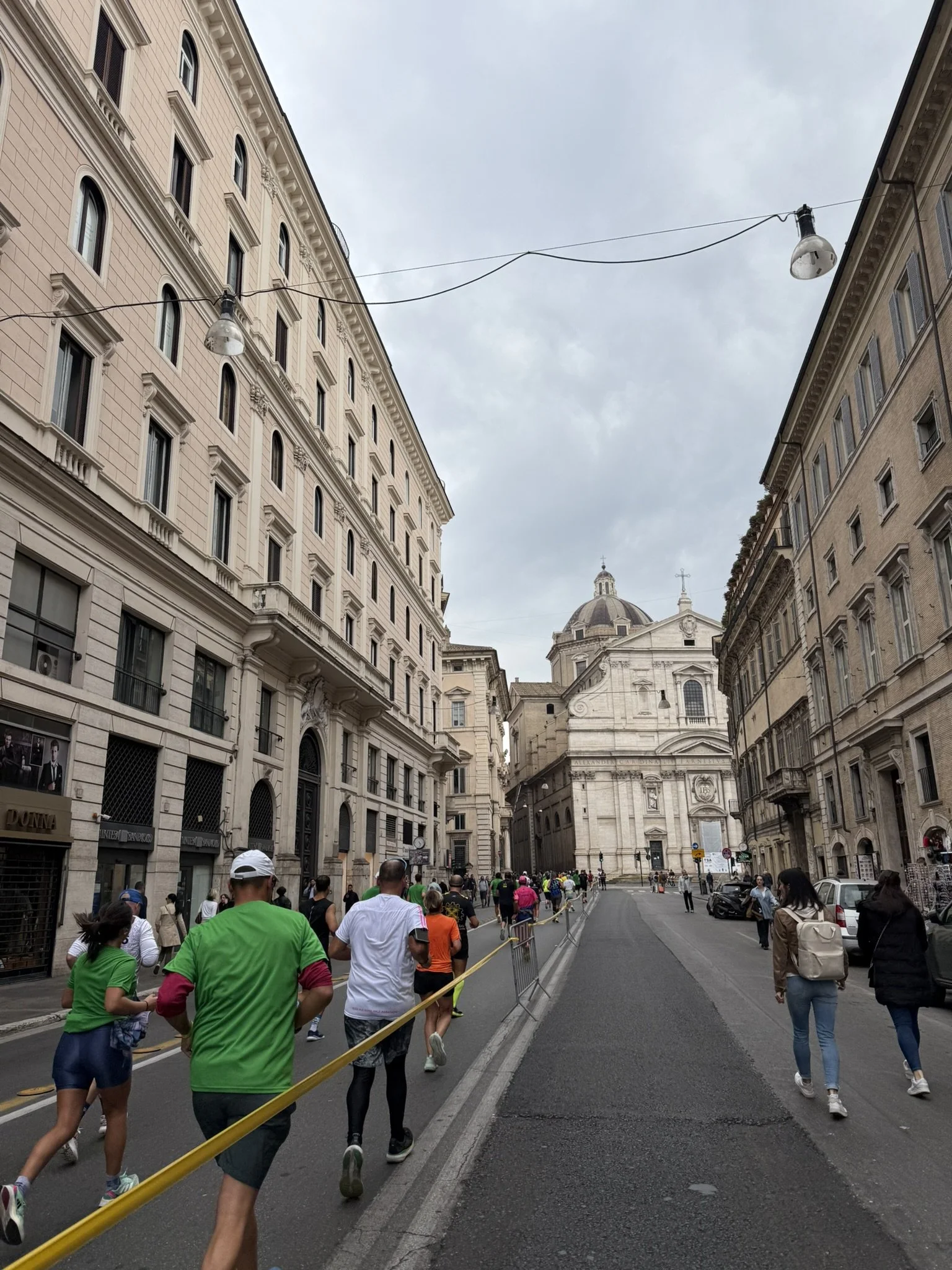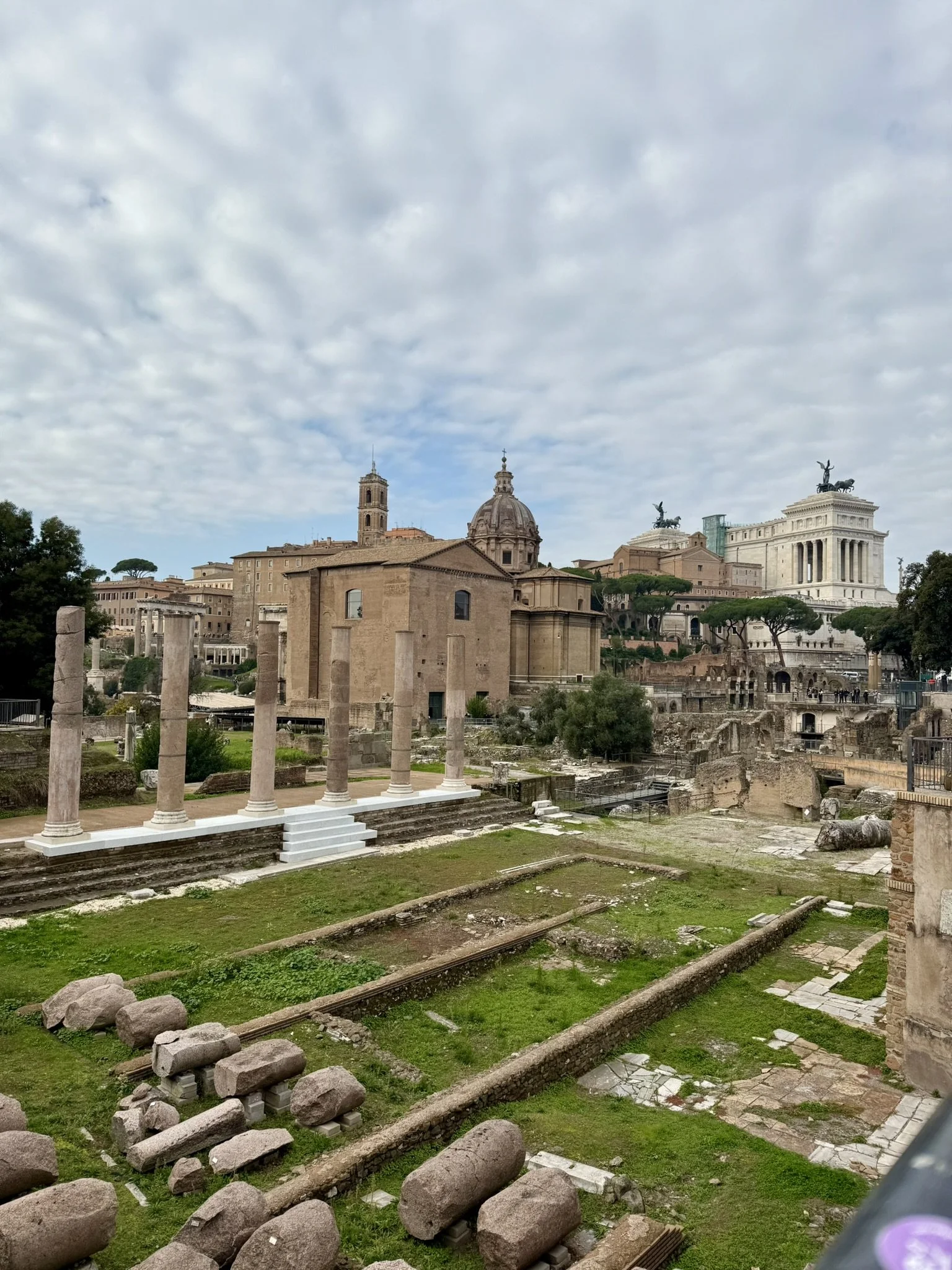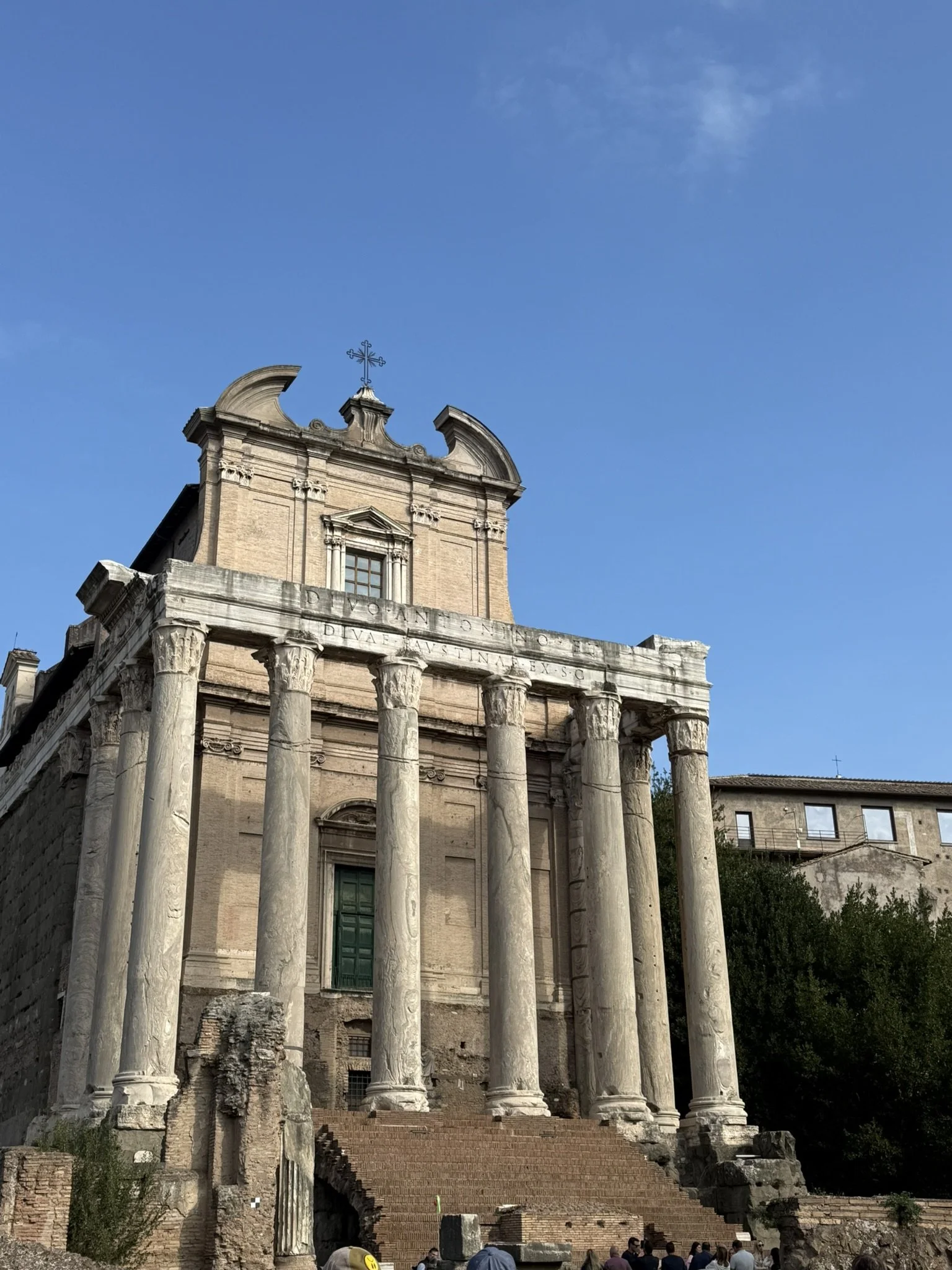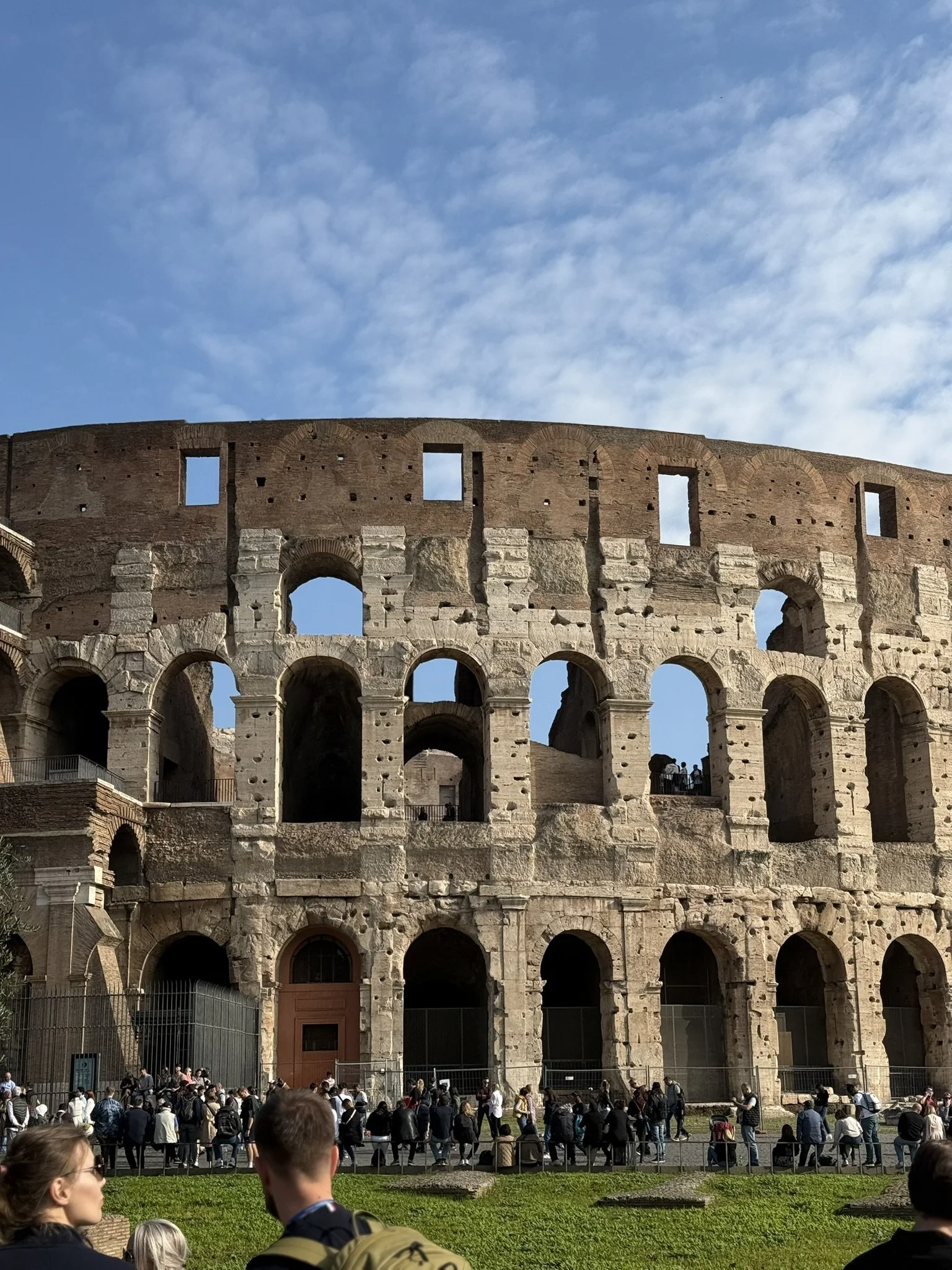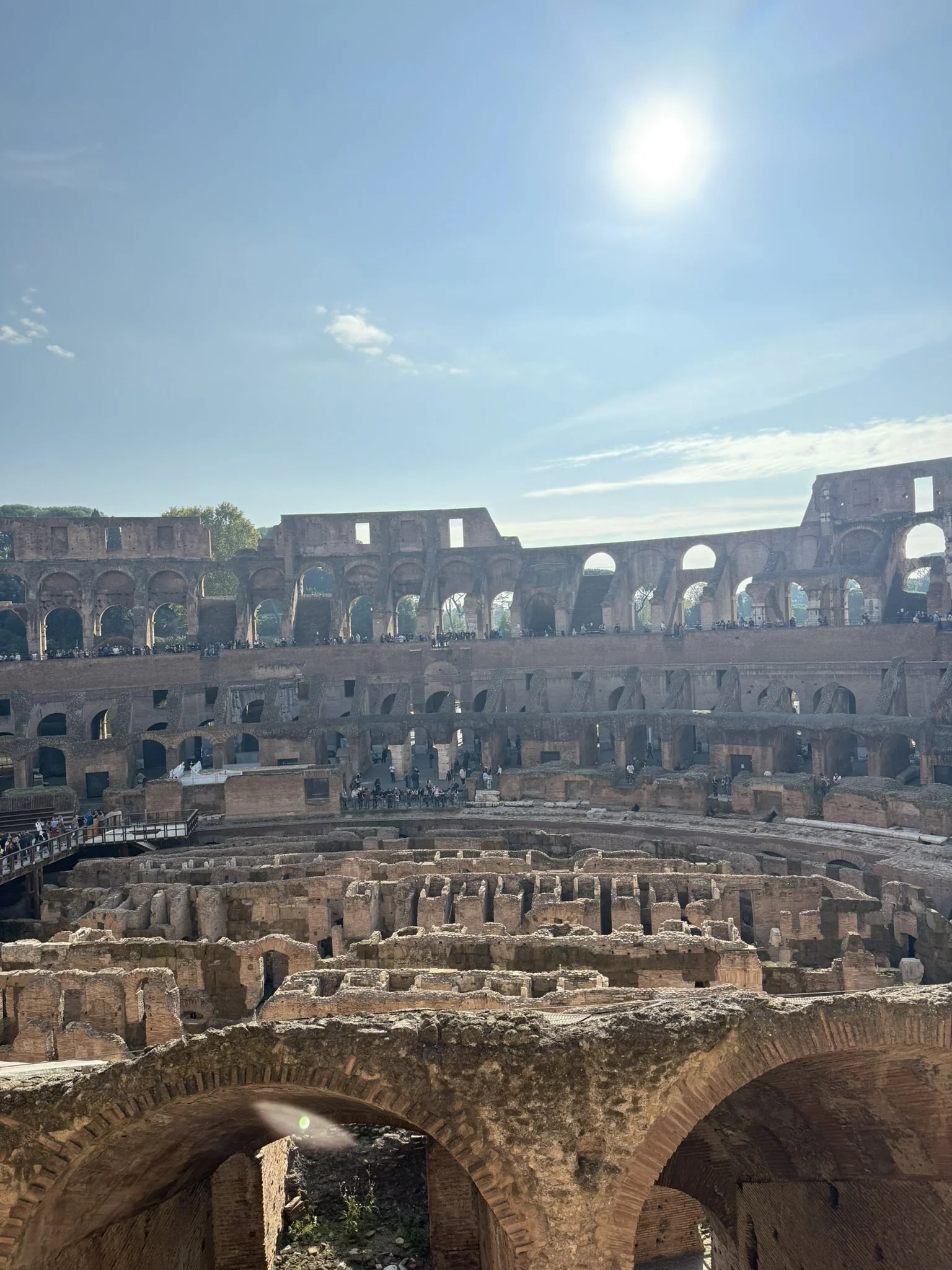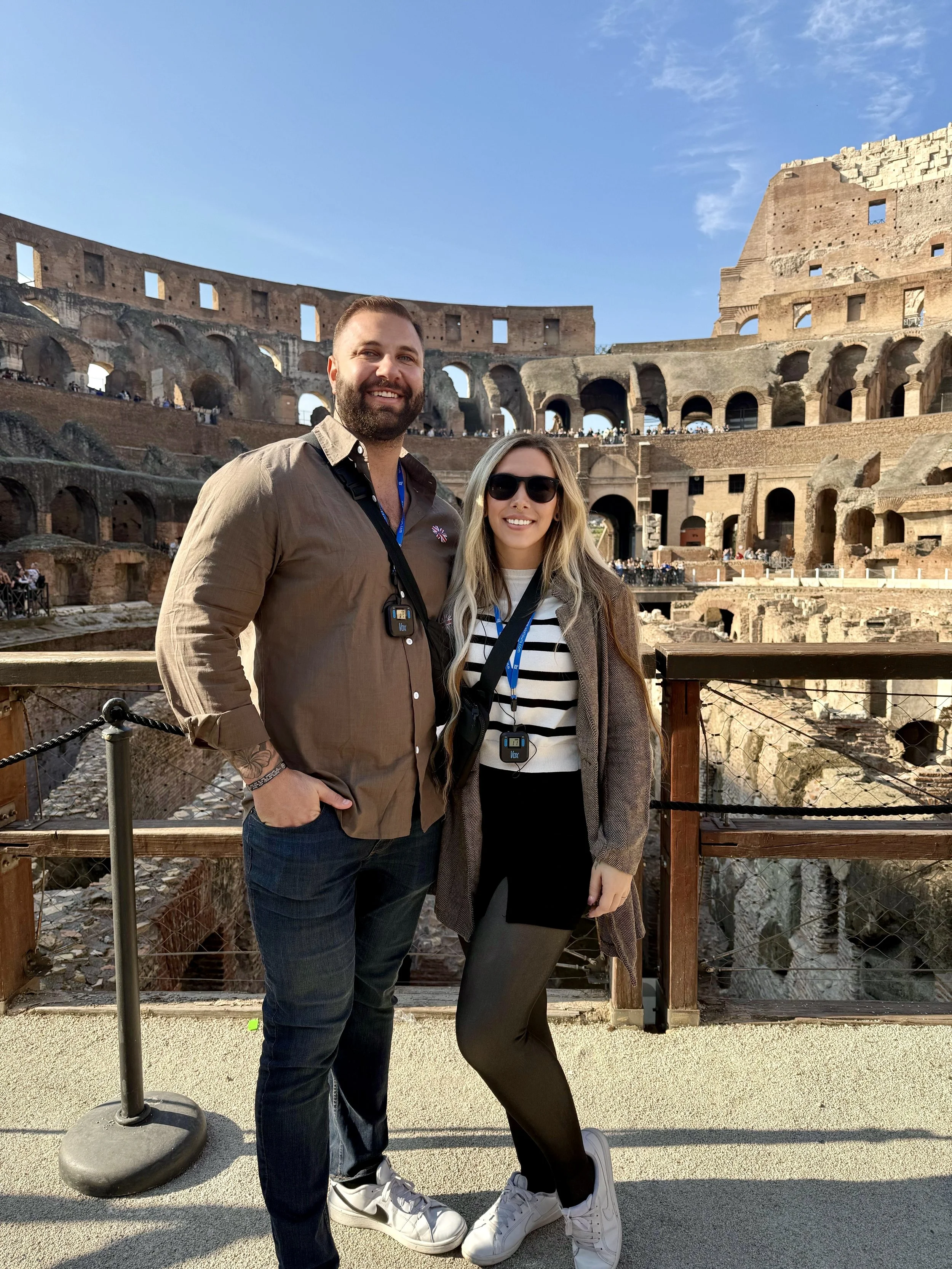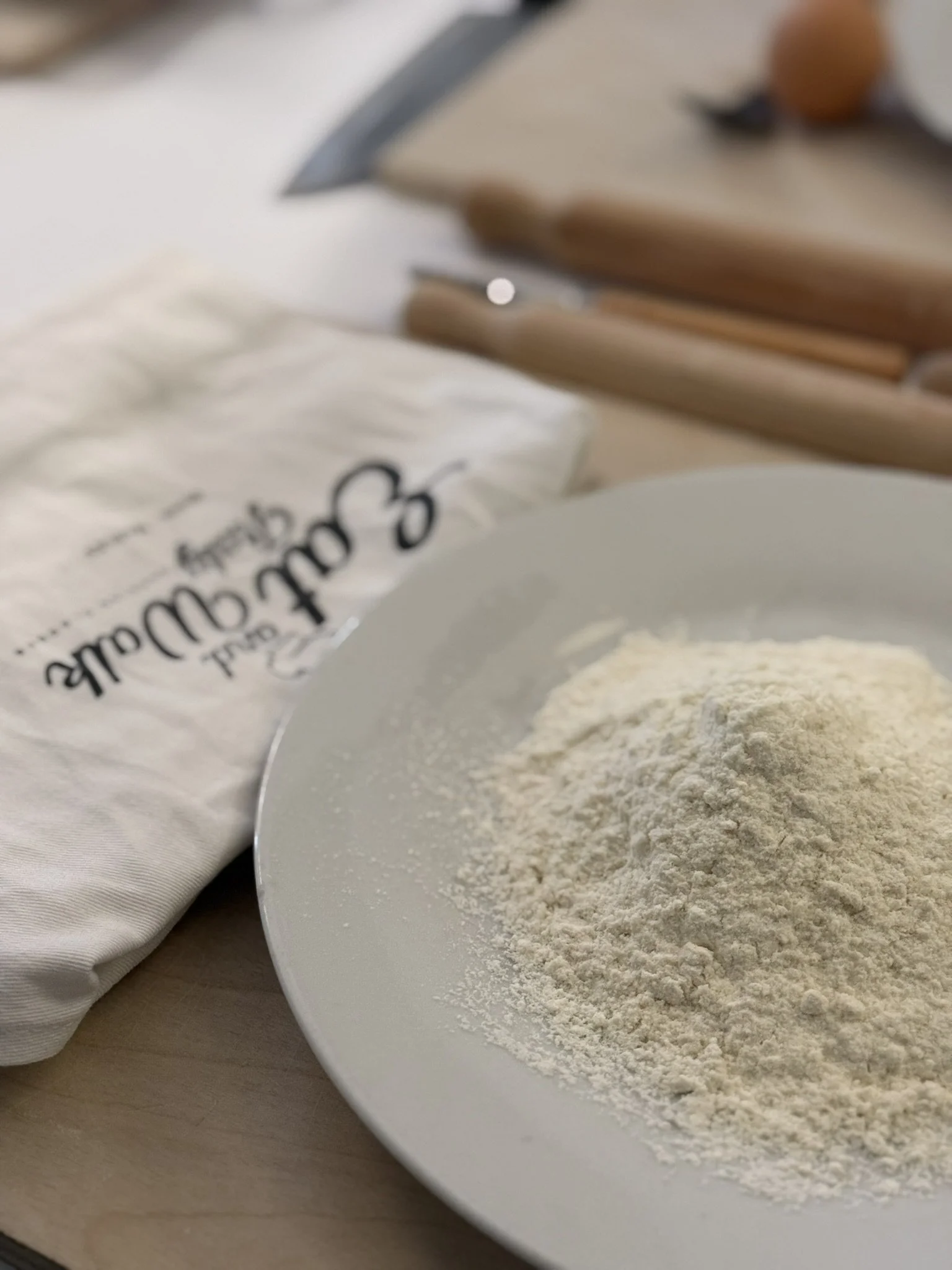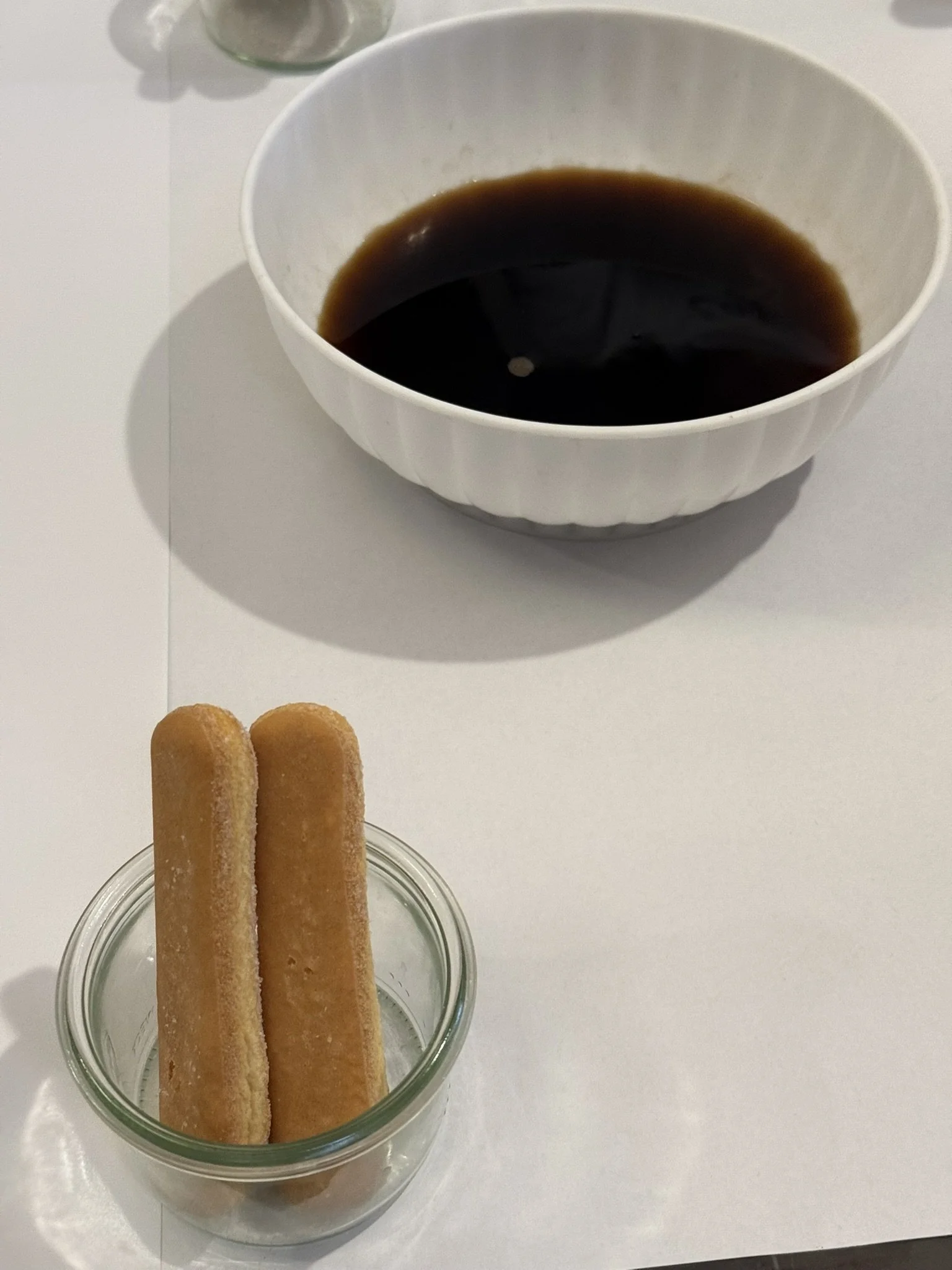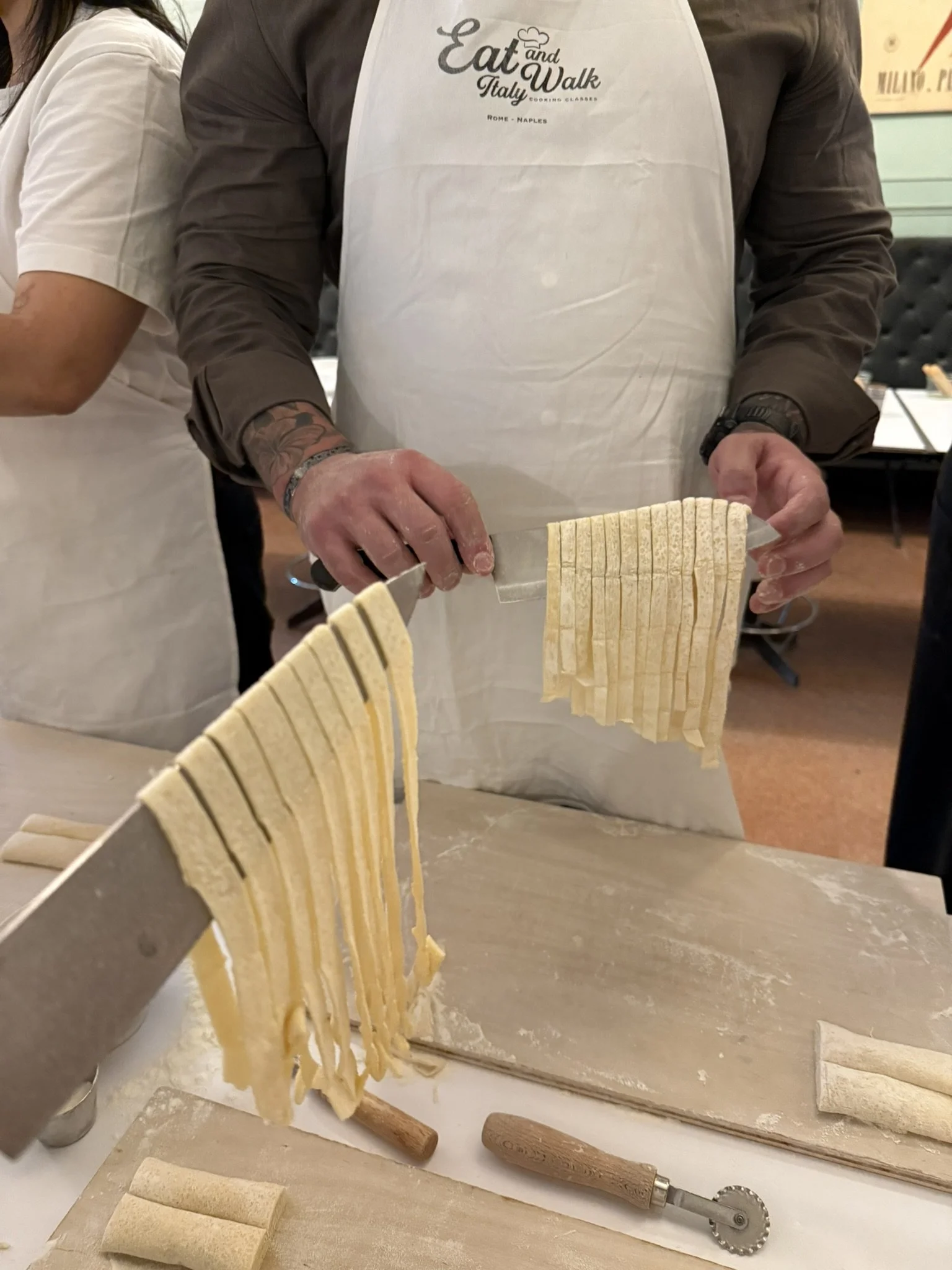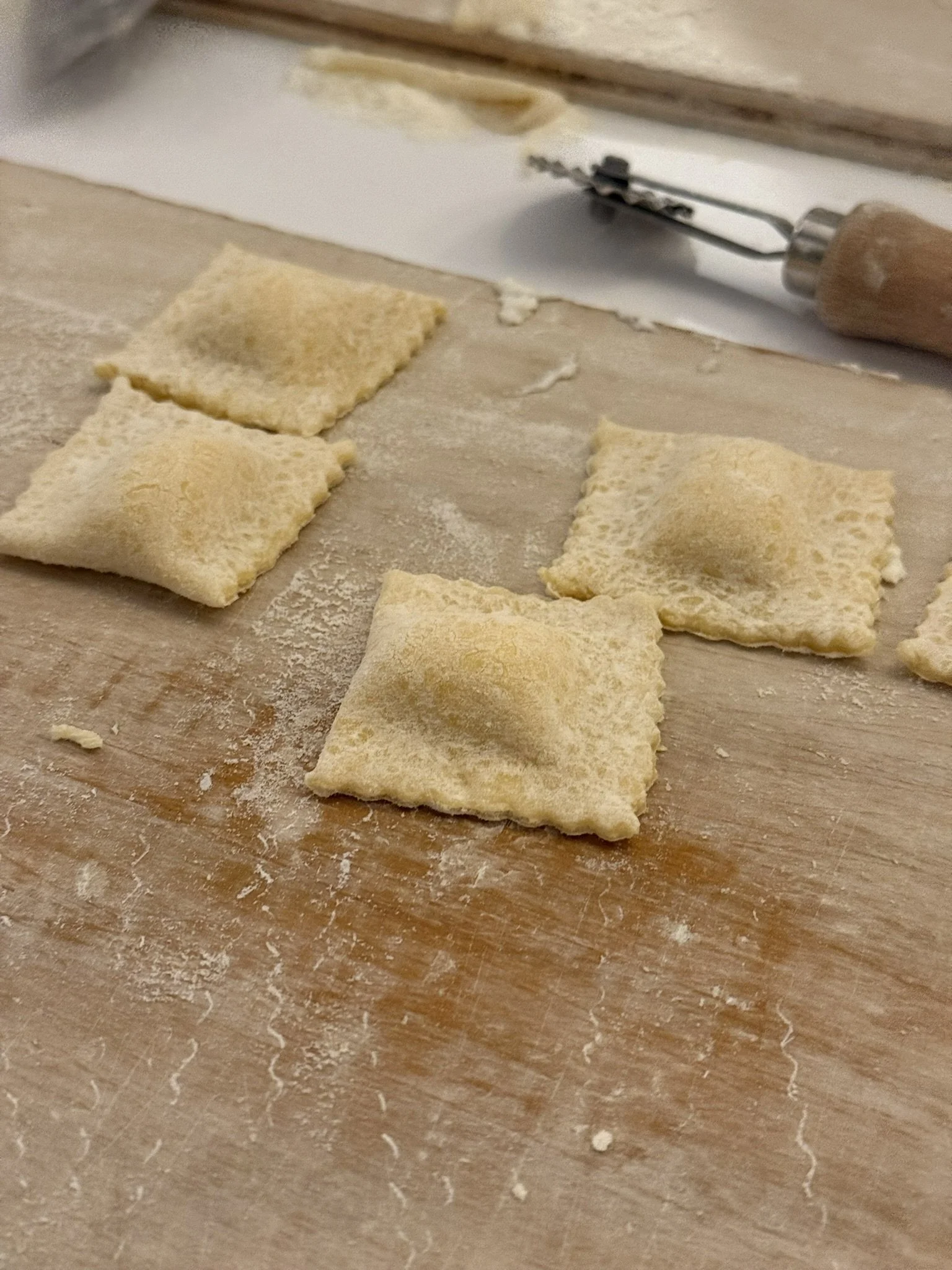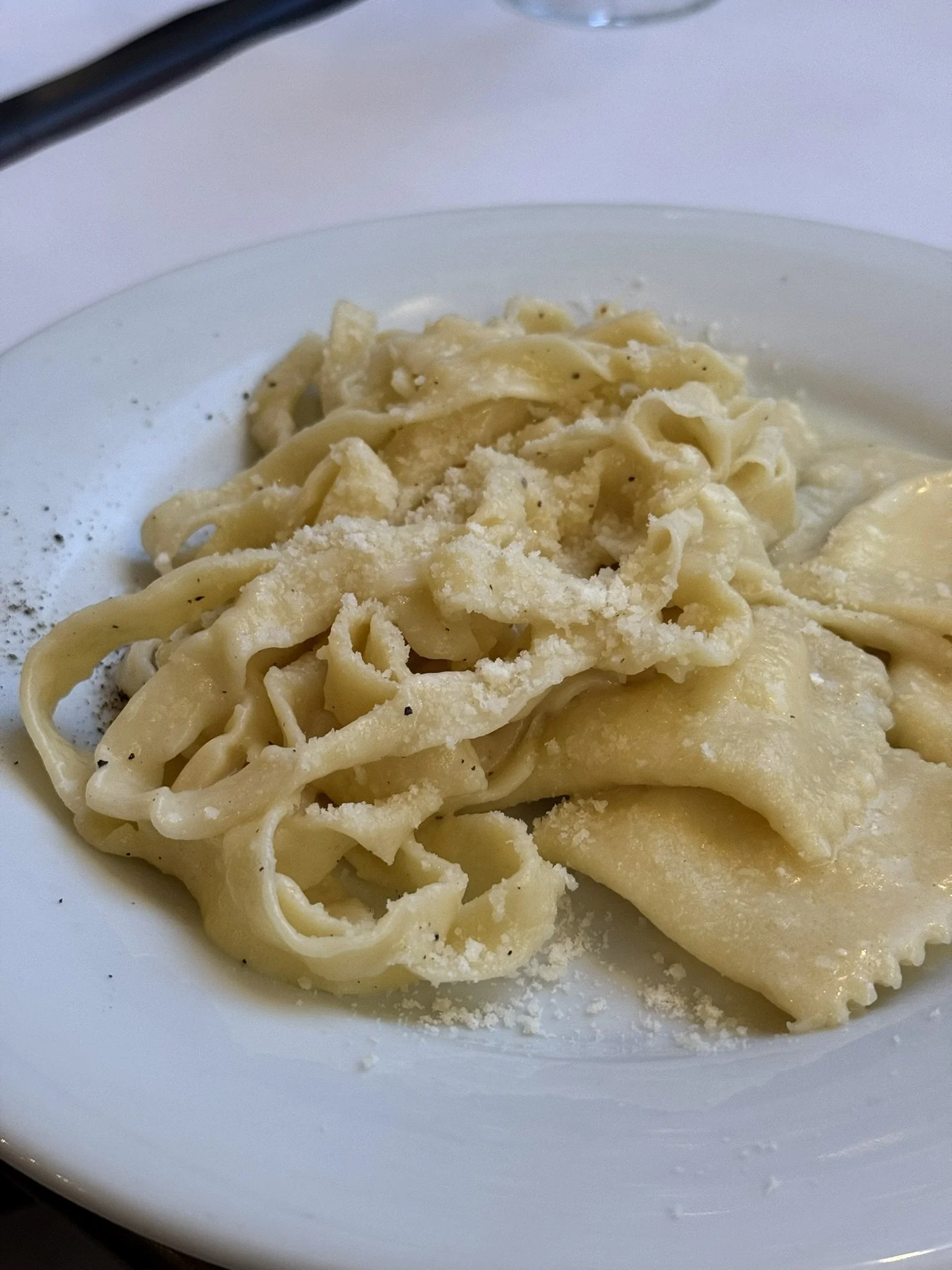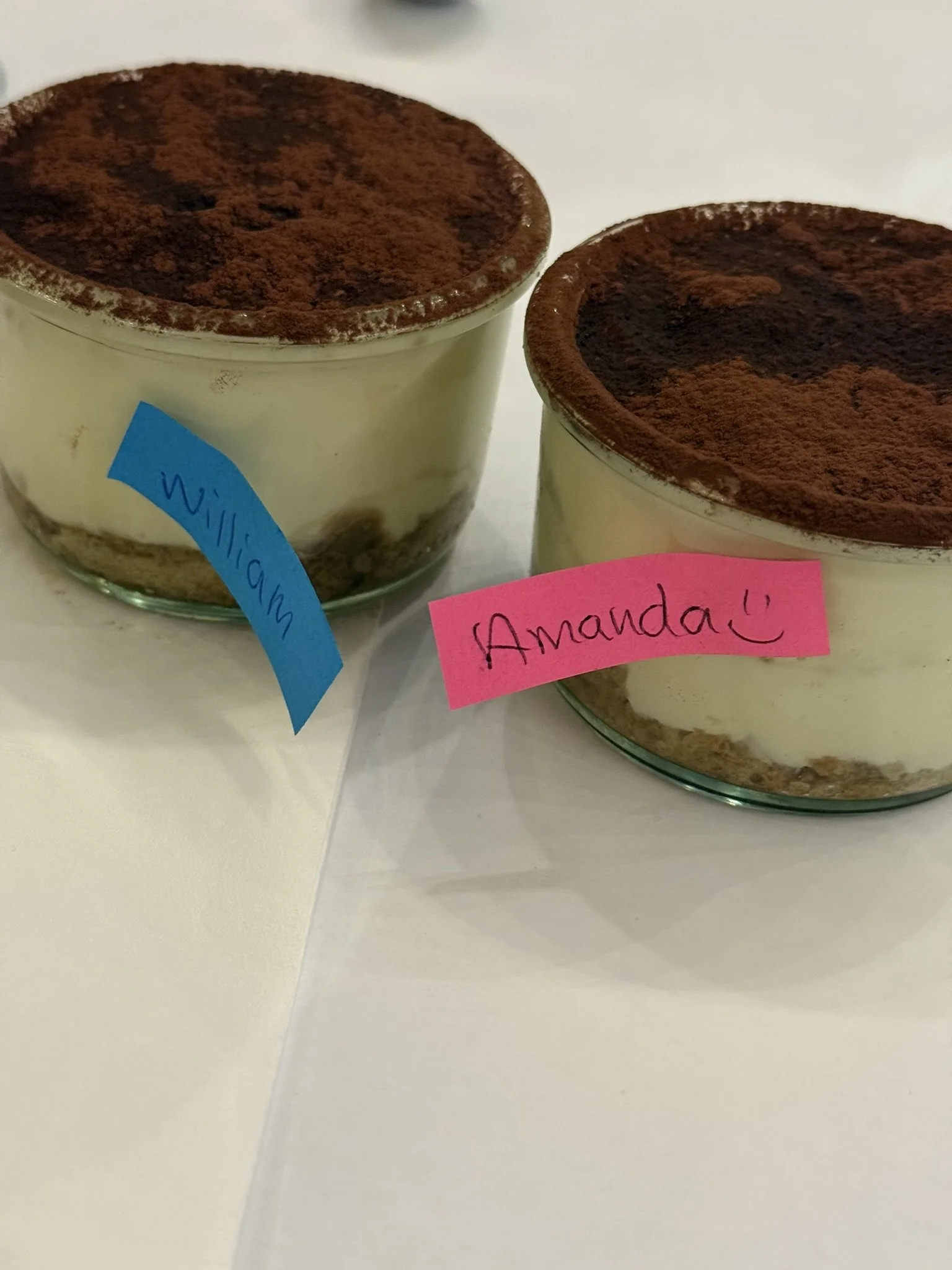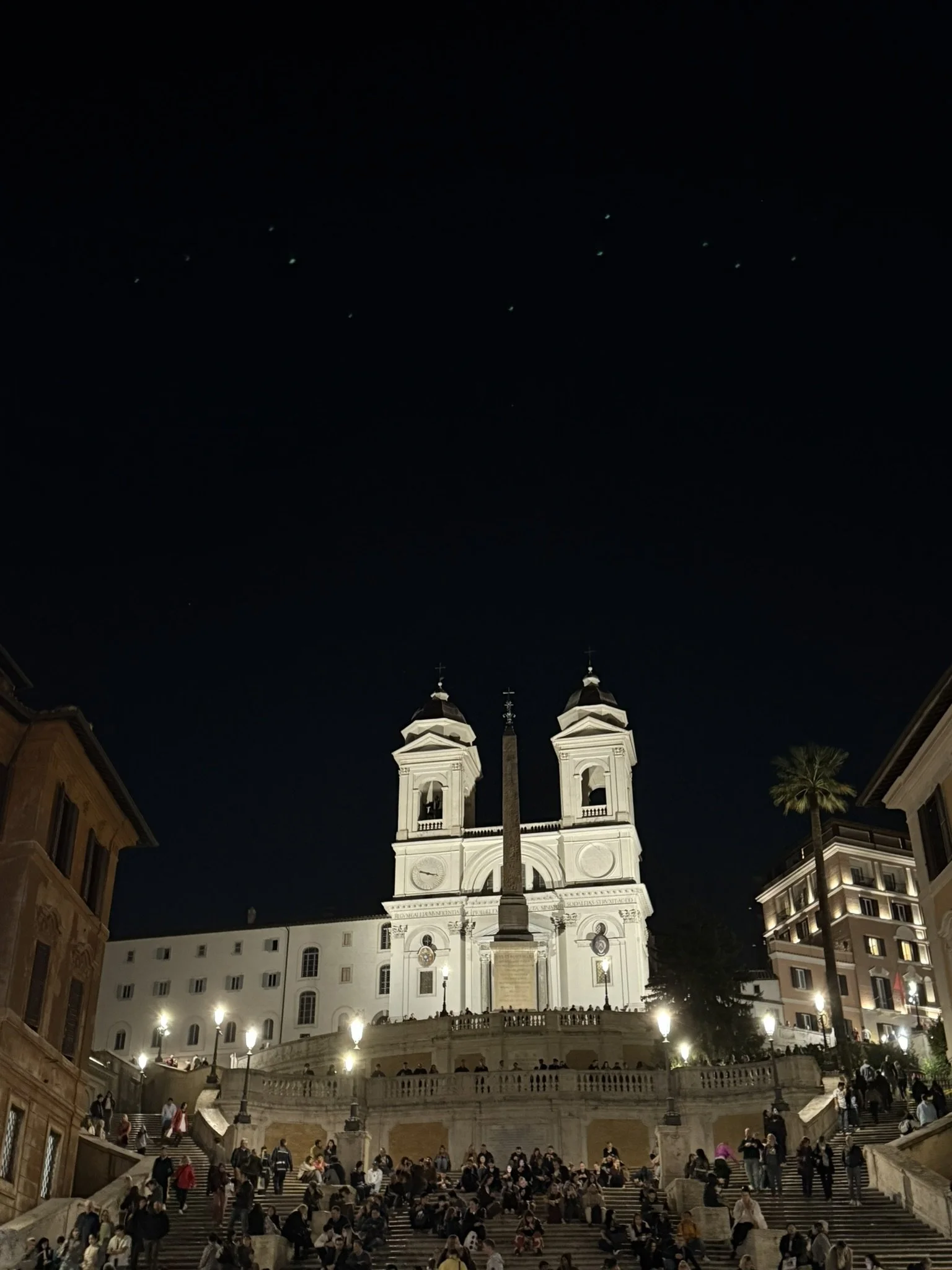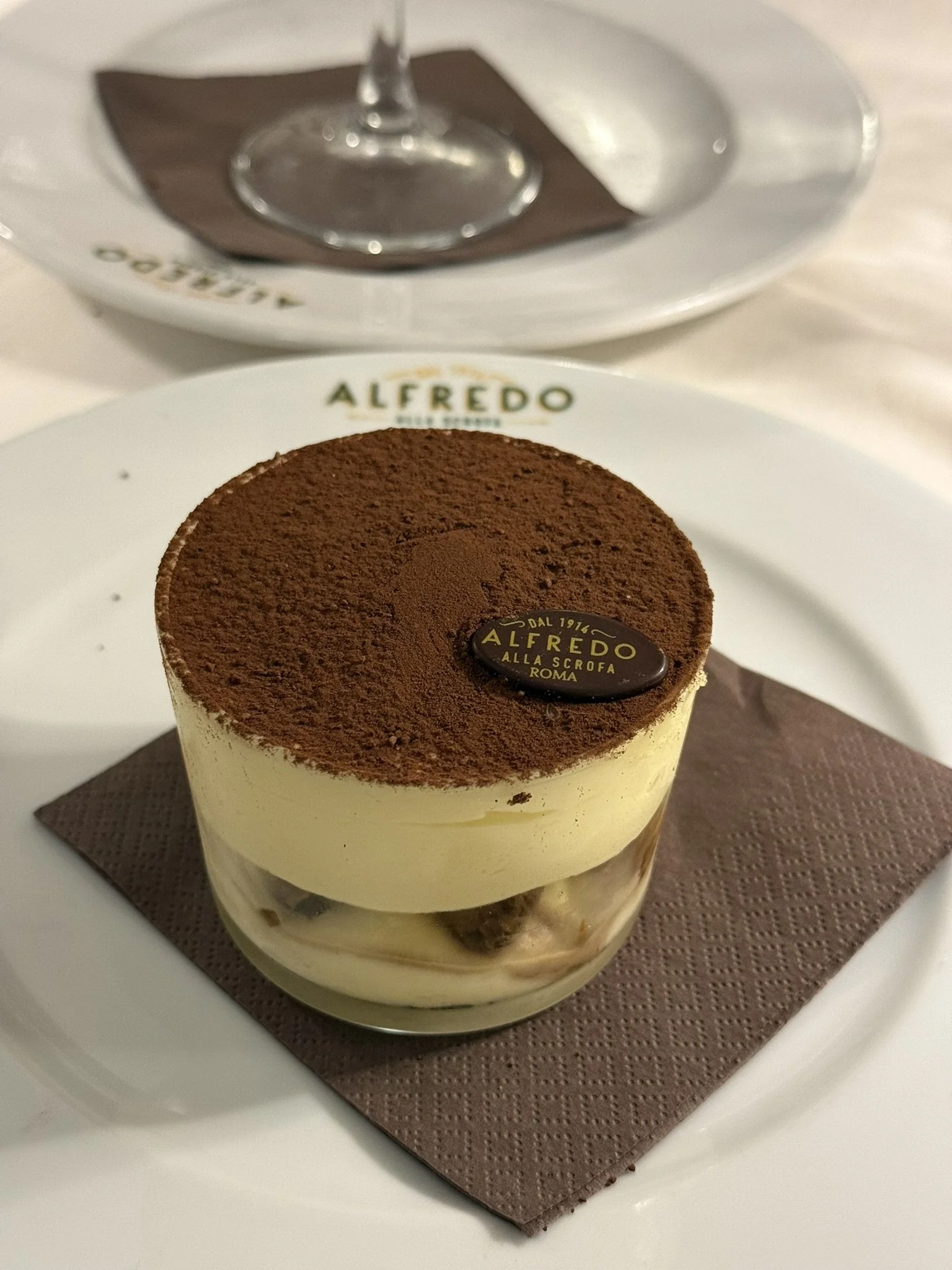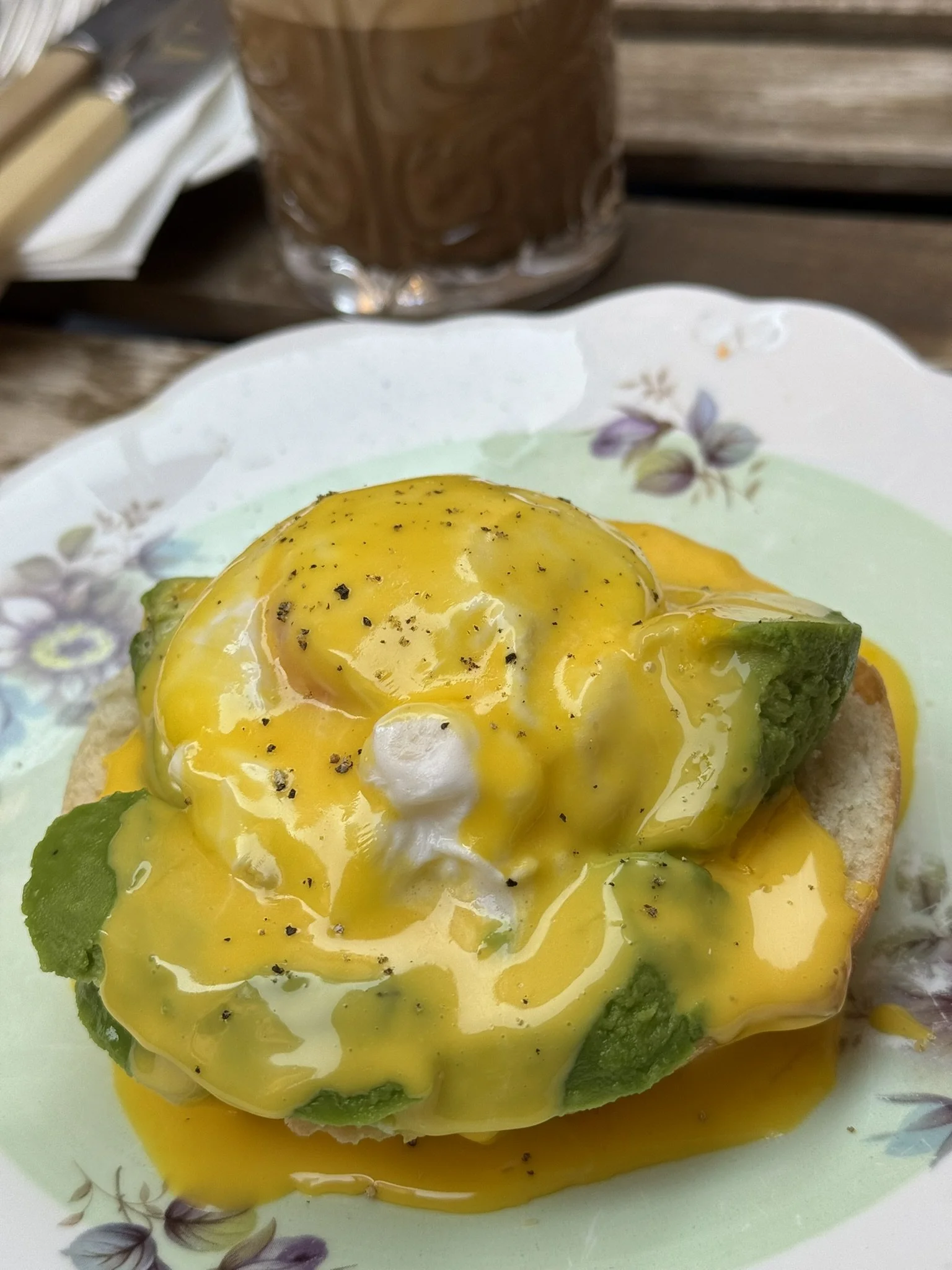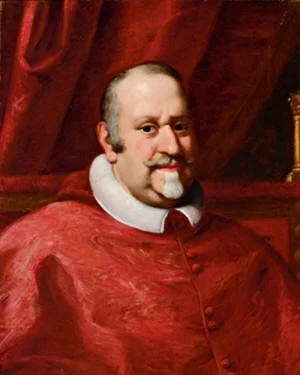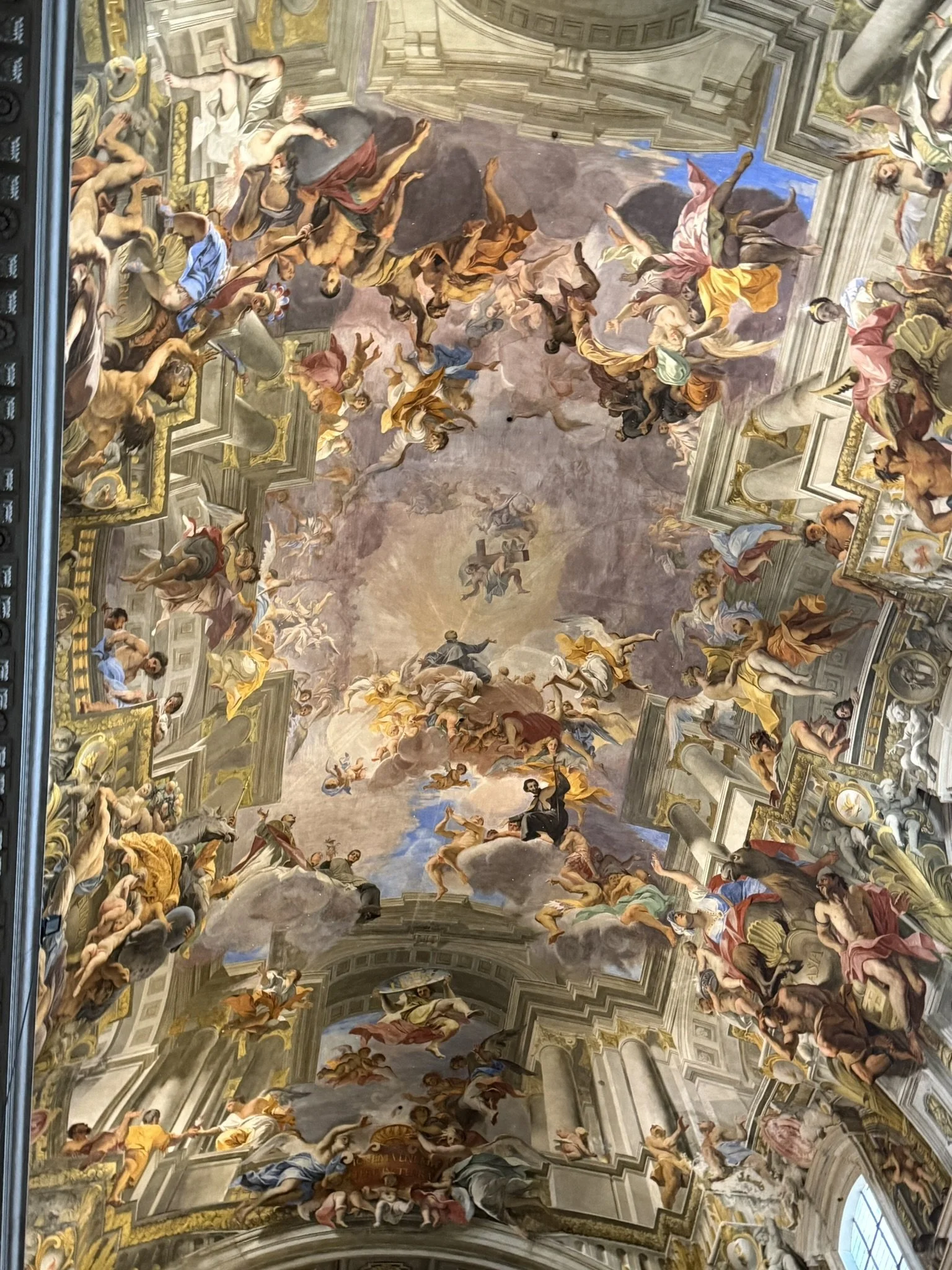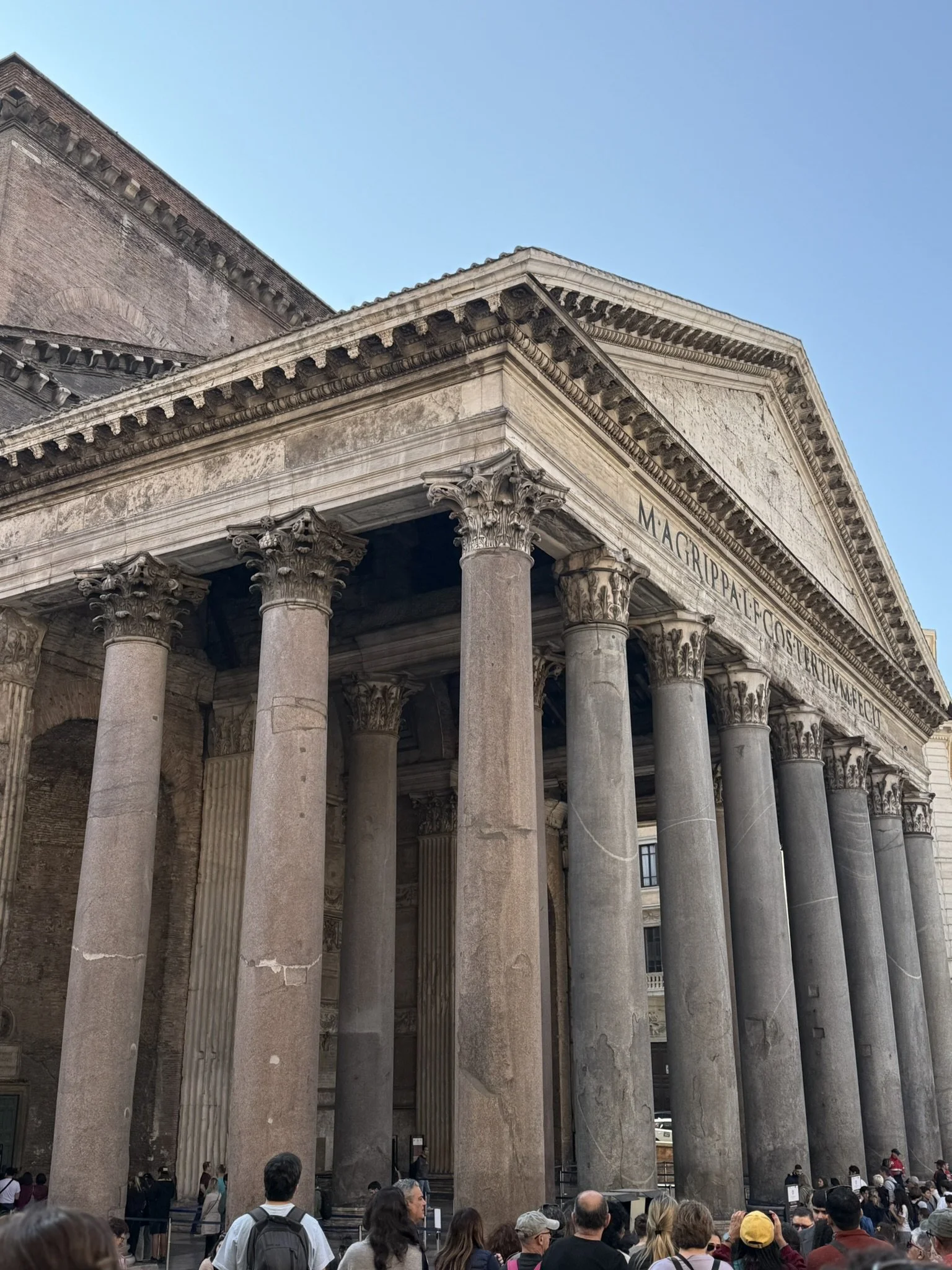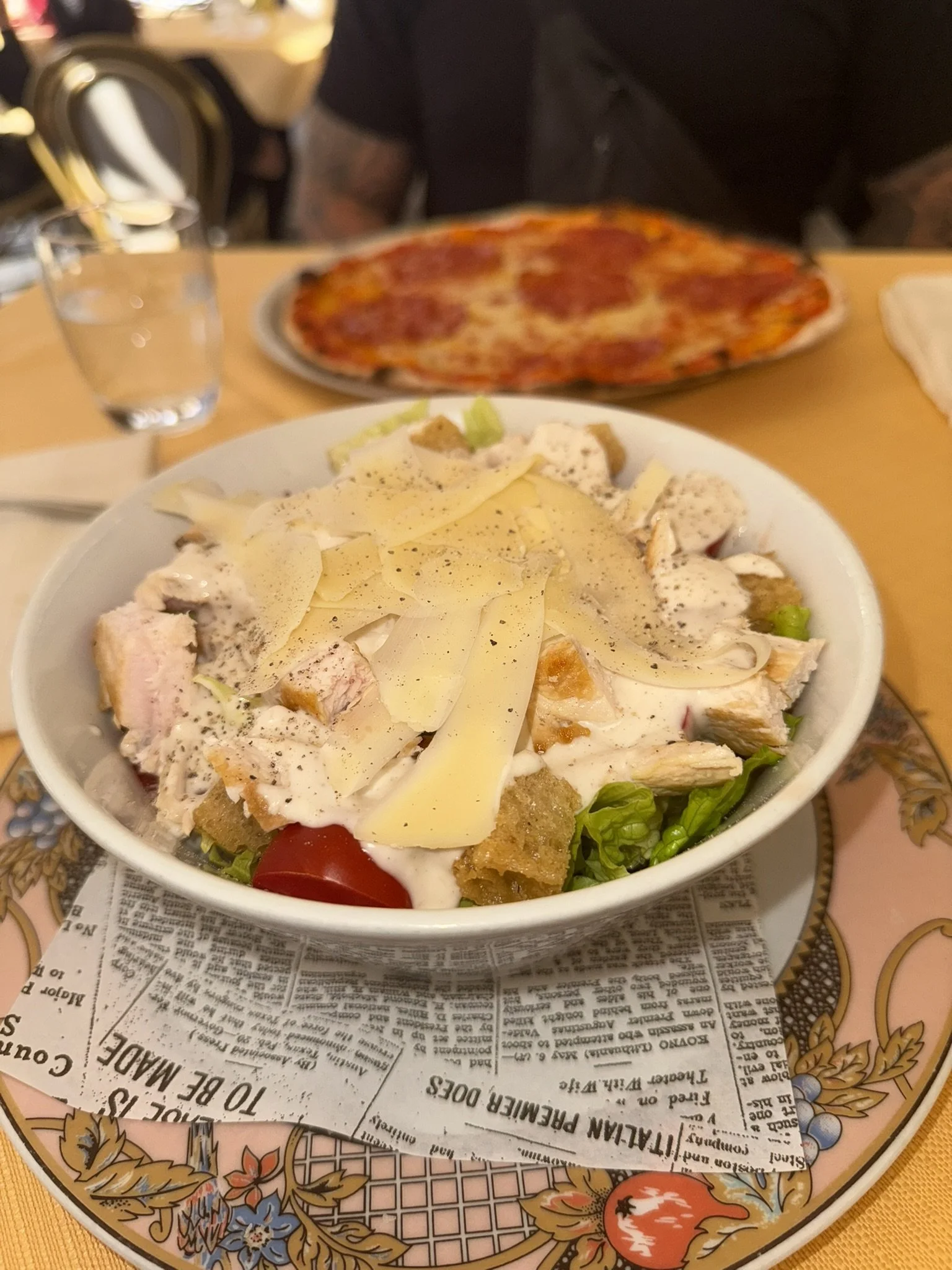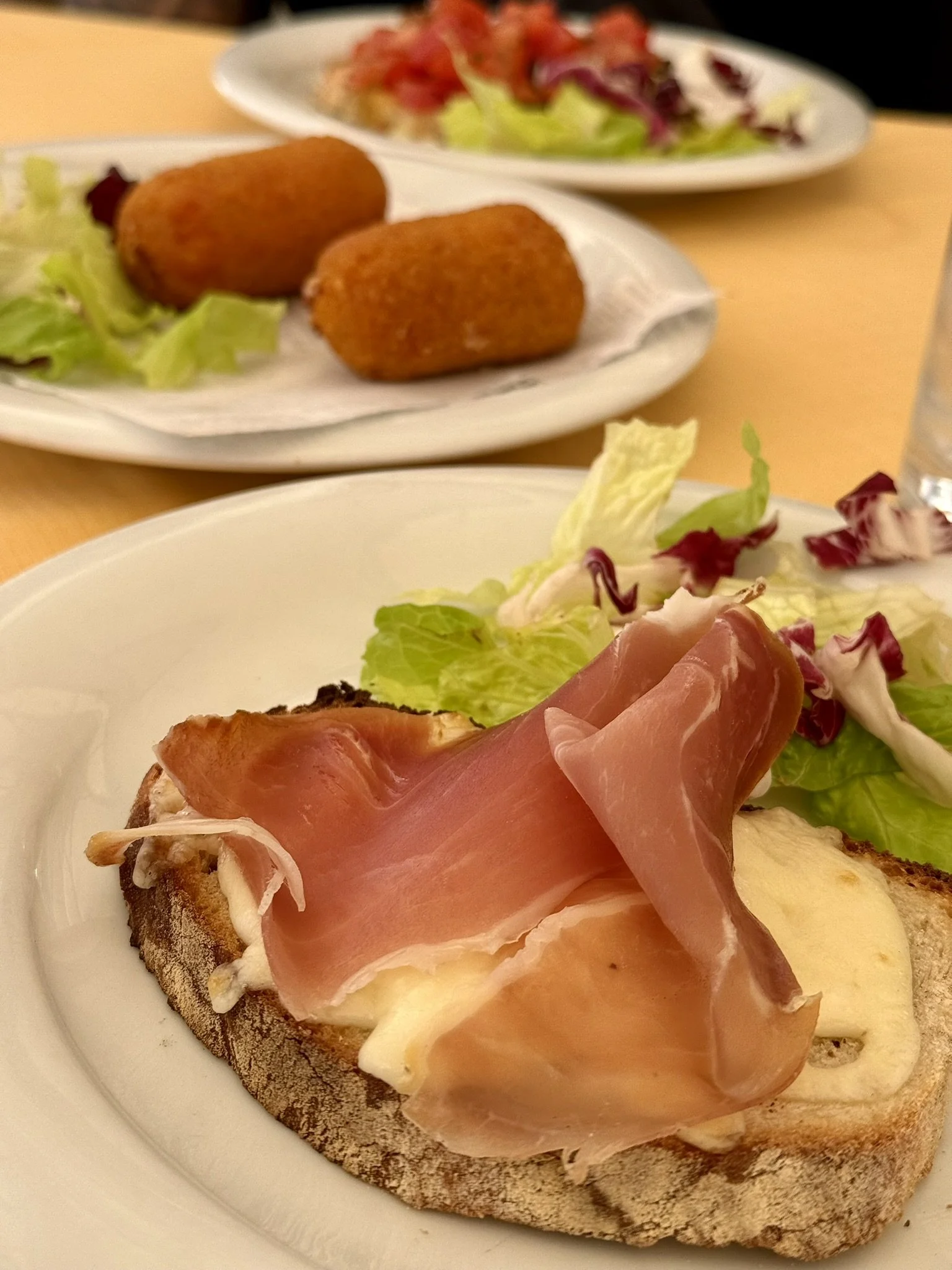Rome, Italy
Hello fellow travelers! Get ready to join us on another exciting journey, this time into the heart of the ancient world: Rome, Italy! The “Eternal City” beckons with its captivating history, world-class art, and, of course, the irresistible allure of Italian cuisine. Boasting over 2,700 years of history, Rome is a cultural treasure trove, home to iconic landmarks like the Colosseum and breathtaking masterpieces within the Vatican. We're diving headfirst into this vibrant city for just three days, and we’ve packed our itinerary to experience every possible moment.
In this post, we'll unveil all the must-see spots, share our favorite tours, reflect on each experience, and give you a taste of Italy through our culinary discoveries. We'll break down our Roman adventure day-by-day, inviting you to join us on this incredible journey.
Navona Street Hotel
Our Roman escapade began bright and early, leaving behind Germany's chill for the sunny embrace of Rome. It was like stepping into instant summer! A pre-arranged taxi, courtesy of our hotel, swept us away the moment we landed, whisking us towards the heart of the city.
If you’ve ever experienced the chaotic energy of Roman traffic, you know it’s a spectacle in itself. Our taxi ride was a vivid scene—cars and scooters weaving in and out, a seemingly orchestrated dance of honks and near misses. Yet, this chaotic symphony was strangely charming, an immediate immersion into the city’s unique pulse.
The drive through central Rome was an introduction to the city’s classic architecture and vibrant street life. We passed ancient ruins, bustling piazzas, and people enjoying espressos at quaint cafes – a constant reminder that we had arrived somewhere truly special. As we neared the city center, the streets narrowed, and each turn revealed another glimpse of history. It made the journey feel like the first chapter of an exciting adventure.
Within an hour of navigating Rome's lively streets, we arrived at the Navona Street Hotel. From the moment we entered, the warmth and professionalism of the staff were evident. Welcomed with genuine smiles, they were eager to assist and share local insights into nearby attractions and dining spots. It felt like arriving to not just a hotel, but a home-away-from-home.
Ideally situated between Piazza Navona and Castel Sant'Angelo, the hotel was perfectly positioned for exploring Rome’s historic center. Many of the city's most iconic landmarks were within a short, leisurely stroll, allowing us to seamlessly immerse ourselves in Rome’s rich history and culture.
Our room was a sanctuary amidst the city's energy. Despite its central location, it was surprisingly quiet, ensuring restful nights after our busy days. The real highlight? A private hot tub right inside the room – the perfect way to relax after a day of explorations! The room’s modern design, combined with thoughtful amenities, offered both comfort and a touch of luxury.
After settling into our cozy haven, we made our way to the hotel bistro for our first taste of Roman cuisine. The Navona Street Hotel isn't just a place to stay — it also provides a full dining experience, with breakfast, lunch, and dinner served on site. Hungry from our journey, we dove right into a delicious meal, eager to taste some Italian classics.
The Navona Street Hotel & Bistro
To begin, we ordered the Caprese Crostini, and it was exactly as fresh as we’d hoped. The tomatoes, bursting with summer ripeness, the soft and creamy mozzarella, the fragrant basil, and a light drizzle of olive oil – each bite captured the magic of Italian simplicity.
For my main course, I chose the pesto stracciatella pasta, a new culinary experience. The al dente pasta, coated in a rich, herby pesto paired beautifully with the creamy stracciatella cheese. The flavor was vibrant, yet comforting, with the pesto’s sharpness leaving me wanting more. William went for the classic Roman carbonara. It was rich and creamy, with a generous amount of black pepper, and smoky pancetta brought the entire dish together.
Finally, it was dessert time, and we couldn't resist trying two options: the tiramisu and a cheesecake. William thoroughly enjoyed the cheesecake, which was smooth, creamy, and subtly sweet with a lovely, crumbly crust – a delightful Italian twist on the dessert. The tiramisu, however, was a mixed experience. The coffee-soaked ladyfingers were perfect, but the mascarpone layer was a bit of a letdown due to an unexpectedly grainy texture, which sadly detracted from the typical smooth, creamy finish we were expecting. Overall, we’d give the bistro a 7/10; the staff was friendly, but there were minor delays in service, and sadly, the tiramisu failed to impress.
Cruising City Center by Golf Cart
The late lunch had been the perfect prelude to our evening adventure. A pleasant fifteen-minute walk from our hotel brought us to Via Monterone, where our chariot awaited: a cheerful electric golf cart, promising a relaxed and fun exploration of Rome as dusk began to paint the sky. Excitement bubbled within us as we hopped aboard, ready for an unforgettable Roman night.
Pantheon
Our first glimpse of ancient Rome came in the form of the Pantheon. Even a brief pause before its immense facade was enough to send shivers down our spines. Our guide, brimming with enthusiasm, shared the building's remarkable history – a temple to all the gods, standing defiant against time for over 1,900 years. The massive columns and the breathtaking dome above evoked a sense of awe, the weight of centuries palpable in the air.
Piazza Colonna
We cruised onward to Piazza Colonna, where the imposing Column of Marcus Aurelius commanded our attention. Our guide wove a captivating tale of Emperor Marcus Aurelius's military victories, each detail of the intricately carved column depicting scenes of battles, triumphs, and acts of mercy. The 1800-year-old structure, a testament to Rome’s artistic and architectural genius, was a breathtaking spectacle, even from our vantage point.
Trevi Fountain
Next, the world-famous Trevi Fountain beckoned, but with a twist. The fountain, unexpectedly, was undergoing renovations in preparation for the upcoming Jubilee Year – a significant Catholic event that draws pilgrims from all corners of the globe. The iconic cascades were absent; the water stilled. A small, temporary plunge pool was set up, but it couldn't replicate the magical sight of a fully flowing Trevi. We decided to forgo the traditional coin toss, saving that ritual for a future visit when the fountain would once again be in its full glory.
Spanish Steps & Piazza del Popolo
A short drive brought us to the Spanish Steps, their graceful ascent lit by the soft glow of evening. Our guide explained the historical significance of the steps, built to connect the Spanish embassy to the church of Trinità dei Monti. The 138 steps bustled with life, locals and tourists alike enjoying the vibrant and charming surroundings, the air alive with conversation and laughter.
The vast expanse of Piazza del Popolo, the traditional northern gateway to Rome, came next. Framed by majestic fountains and a towering Egyptian obelisk, the piazza radiated a sense of openness and grandeur, a striking contrast to the narrow, labyrinthine streets we had encountered earlier.
Though we didn’t stop, our guide's narration brought the Mausoleum of Augustus to life. We learned about Rome’s first emperor, Augustus, and how he transformed the city, constructing this massive tomb in 28 BC. The historical significance made us yearn for a deeper exploration during daylight hours.
Piazza Navona
Piazza Navona, usually a playground of vibrant energy, was also being prepared for the Jubilee. Bernini's Fountain of the Four Rivers and other captivating fountains were partially obscured by scaffolding. Despite the renovations, the square pulsated with life, street artists showcasing their talents, locals chatting, and tourists soaking in the atmosphere. It was amazing to learn that this space was once a stadium for athletic competitions, adding another layer to the square's captivating story.
We rolled along Via Giulia, a narrow cobblestone street, lined with historic buildings exhibiting elegant Renaissance facades. It was a sensory journey, as the ancient stones whispered tales from a bygone era. Our guide painted a picture of its historical importance, linking neighborhoods and displaying the charm of old Rome.
Sacra di Largo Argentina & Gelato
Our tour then took us to Area Sacra di Largo Argentina, where four ancient temples from the Republican era were discovered in the 1920s. We stood amidst layers of history, with ruins of temples and ancient cobblestone streets transporting us back in time.
Then, the magic of Italy was found in a small gelateria. Our guide, a true connoisseur of local flavors, led us to a shop specializing in natural, authentically Italian gelato. My coffee and tiramisu combo was a burst of rich, sublime flavor – some of the best gelato I’ve ever had. William, a self-proclaimed chocolate aficionado, declared his choice "the best he's ever tasted," citing its smooth, intensely delicious texture as the reason.
A brief stop before the Piazza del Campidoglio showcased the first modern square in Rome, designed by Michelangelo himself. The grand staircase and uniform design, our guide explained, were once home to temples dedicated to Roman gods, further enriching the experience.
Piazza Venezia
Next came the Piazza Venezia, dominated by the imposing monument to Victor Emmanuel II, aptly named the “Altar of the Fatherland.” Its sheer size and grandeur were truly awe-inspiring. We learned the name originated from the nearby Palazzo Venezia, a 15th-century palace teeming with its own unique history.
As our golf cart gently navigated the ancient streets, we entered the Monti neighborhood. This vibrant area captivated us with its unique character. Cobblestone pathways intertwined with trendy boutiques and lively cafes, creating a compelling blend of old-world charm and modern energy. Our guide highlighted Monti’s allure, earmarking it as a must-revisit destination for its distinctive shops and vibrant nightlife. It was a glimpse into another facet of Rome beyond the grand monuments.
Colosseum
The culmination of our tour was the magnificent Colosseum. Lit against the inky night sky, this ancient amphitheater seemed to breathe with history. Its towering arches cast dramatic shadows, evoking whispered tales of gladiatorial contests and Roman spectacle. Standing in its presence, we were humbled by Rome's enduring legacy and the sheer weight of time it embodies. It was a breathtaking finale that fully embraced the magic of the Eternal City.
What We Liked About the Golf Cart Tour:
Efficient Introduction to Rome: The tour covered a lot of ground, giving us a great overview of the city’s major landmarks like the Pantheon, Trevi Fountain, Spanish Steps, and Piazza Navona. It was a perfect way to start our trip and get a feel for Rome’s layout.
Seeing Rome Lit Up at Night: Experiencing Rome after dark was magical. The city’s monuments, illuminated against the night sky, had an entirely different and enchanting atmosphere.
Comfort and Convenience: Being driven around in a golf cart was both fun and relaxing. It allowed us to cover more ground than we could have on foot, especially after a long day of travel.
Local Stories and Historical Insights: The guide shared interesting stories and facts about the sites, adding depth to what we were seeing. Highlights included learning about the Pantheon’s history and the rivalry between Bernini and Borromini at Piazza Navona.
Personalized Experience: The tour felt intimate and engaging, as the small group size allowed us to ask questions and interact with the guide.
What We Disliked About the Golf Cart Tour:
Missed Photo Opportunities: While the golf cart was efficient, there were times when we passed by stunning spots, but the pace didn’t allow for a photo stop.
Limited Depth in Some Explanations: While the guide shared great stories, some explanations were relatively brief. For major landmarks like the Pantheon, we would have loved more detailed insights.
Overall, the golf cart tour was a resounding success, offering a convenient, visually breathtaking, and thoroughly engaging way to experience Rome. We would highly recommend this to anyone seeking a relaxed and scenic introduction to the city, particularly if it's at nighttime. The tour concluded with a convenient drop-off, leaving us perfectly positioned to explore the city further. The tour gave us a clear sense of Rome's layout, inspiring us to revisit several locations. Despite the presence of modern renovations, Rome's timeless beauty shone through and set a fantastic tone for our trip.
We spent a bit of time wandering around, savoring the city's evening atmosphere before heading back to our hotel. The 35-minute walk was a pleasure, with each street holding a new and interesting discovery. By the time we returned, we were ravenous!
Trattoria da Luigi
We decided to try Trattoria da Luigi, a charming restaurant conveniently located across from our hotel. The friendly staff promptly seated us, making us feel instantly welcome. We ordered a bottle of Italian wine, ready to celebrate our arrival with our first authentic Roman meal.
My choice was the classic Cacio e Pepe. The perfectly cooked pasta, coated in a creamy, peppery sauce, was a delicious demonstration of the simplicity and brilliance of Roman cuisine. The sharp, savory Pecorino cheese was the perfect foil for the black pepper, making each forkful a comforting experience. William chose the Diavola pizza, with its thin, crispy crust supporting spicy salami, tomato sauce, and fresh mozzarella. The subtle heat from the salami added an enjoyable layer of flavor, ensuring each slice was thoroughly satisfying. We agreed—this wonderful trattoria deserved an 8/10 rating for its fresh ingredients, delicious food, and welcoming atmosphere.
Completely satisfied, we returned to our hotel, eager to rest up for the adventures that tomorrow would bring. We were ready to dive deeper into Rome’s history, culture, and of course, enjoy more of its incredible cuisine. The golf cart tour had been the perfect appetizer, leaving us hungry for more.
Vatican Museums, Sistine Chapel, and St. Peter's Basilica
The Roman sun hadn't fully risen when our day began, fueled by anticipation for our exploration of Vatican City. After a quick but satisfying breakfast of eggs, yogurt, and pancakes at our hotel, we set off to meet our tour group at the Vatican Museums. The walk, about thirty minutes, offered a glimpse of Rome waking, despite the ongoing renovations hinting at the upcoming Jubilee celebrations. We arrived at the designated meeting point right on time and easily located our guide, joining the group eager to begin our journey. We were equipped with headsets, a welcome tool for navigating the day, promising to keep us connected to our guide's insights amidst the bustling crowds.
As we surveyed the long queues snaking outside, we felt a surge of relief that we had opted for a guided tour. The thought of navigating the complex entrances and selecting the correct line on our own was truly daunting. Our guide expertly led us to the dedicated tour entrance and within moments, we stepped inside, ready to uncover the vast treasures within.
Vatican Museums
The initial steps inside the Vatican Museums were nothing short of awe-inspiring. We found ourselves enveloped by one of the most impressive art collections on Earth, a treasure trove accumulated over centuries by generations of popes. Each room felt like a portal into history, overflowing with artistry and culture. From ancient sculptures to intricate frescoes, it was almost too much to absorb. Our guide expertly navigated the highlights, weaving narratives around each piece, illuminating the historical significance and artistic mastery. It was a compelling fusion of art, faith, and culture, making us deeply appreciate the Vatican's dual role as a spiritual and artistic bastion.
Our journey continued to the serene Pinecone Courtyard (Cortile della Pigna), a tranquil contrast to the opulent museum interiors. Designed by Renaissance architect Donato Bramante, the courtyard seamlessly blends classical architecture with calming greenery. The centerpiece, the enormous bronze pinecone statue (Pigna), once a Roman fountain, has stood for centuries as a symbol of fertility and renewal. As we paused to reflect, we also admired Arnaldo Pomodoro’s modern "Sphere within a Sphere" sculpture – a striking juxtaposition of old and new.
While in the courtyard, our guide began to prepare us for the next grand experience: the Sistine Chapel. We learned about Michelangelo's legendary ceiling frescoes, from the iconic "Creation of Adam" to the dramatic "Last Judgment," and the intricate symbolic meanings behind each element. The sheer level of detail, combined with the compelling narrative found within the frescoes, heightened our anticipation immensely.
The Sistine Chapel
Moving through the Gallery of Maps (Galleria delle Carte Geografiche), a long hall adorned with exquisitely detailed 16th-century maps of Italy, we finally arrived at the entrance to the Sistine Chapel. Stepping inside elicited an immediate and profound sense of grandeur. This is the space where cardinals gather to elect a new pope, a deeply revered and silent space. The frescoes dominating the ceiling and walls are truly breathtaking, each segment narrating stories from the Bible. Our guide recounted how Michelangelo, considering himself a sculptor, was initially reluctant to undertake the project. Yet, he poured years of effort into his work. Standing beneath his "Creation of Adam," watching the outstretched hands of God and Adam reaching towards each other, was a moment of profound connection, a testament to the artist’s genius.
The Chapel's potent silence, given the prohibition of talking or taking photos, amplified the experience. We stood in awe, absorbing both the artistic brilliance and the centuries of history that had unfolded in this sacred space.
St. Peter's Basilica
Following our guide out of the Chapel, we then proceeded to the awe-inspiring St. Peter's Basilica. Our guide explained that the Basilica is not only among the largest churches globally but also one of Christianity's holiest sites, reputedly built upon the tomb of St. Peter, the first pope. The Basilica which we see today is the culmination of over a century of work, shaped by renowned artists and architects like Michelangelo, Bernini, and Raphael.
The sheer scale of the Basilica was immediately palpable, upon approaching the entrance. Inside, the vastness of the nave, soaring towards Michelangelo's grand dome, left us speechless. Our guide explained that, late in his life, Michelangelo took on the dome project, crafting an architectural masterpiece that has become iconic. Standing beneath it, we could only feel amazement and reverence.
Every corner of the basilica overflows with intricate details and exquisite art. Close to the entrance, we encountered Michelangelo’s “La Pietà,” his sculpture of Mary cradling the body of Christ. The guide shared Michelangelo created this masterpiece when he was only in his twenties, capturing a delicate sorrow and grace on Mary's face. Witnessing up close was deeply moving, the marble seemingly alive.
As we continued through the basilica, our guide pointed out the ornate altar at the very center, crafted by Bernini and crowned by the majestic Baldachin, a towering bronze canopy adorned with intricate carvings. The grandeur of St. Peter's Basilica was truly overwhelming. It was a profound experience to find ourselves in a place visited by millions of pilgrims for centuries, feeling both the spiritual depth and the artistic beauty. As we took one final glance around, we were immeasurably grateful for the opportunity to see one of the world's true wonders.
What We Loved About the Tour:
Guided Insight and Navigation: Having a knowledgeable guide was invaluable. The Vatican Museums can be overwhelming with so much to see and understand, and our guide expertly navigated us through the highlights. Each stop had its own story, and without the guide, we would have missed many details and historical contexts that made the experience richer. The headset was also a nice touch, allowing us to hear the guide clearly without straining over the noise of the crowds.
Efficient Entry: One of the best parts was skipping the long entry lines. The Vatican can get incredibly busy, and the guided tour allowed us to breeze past the general admission line, saving time and energy. For a site as popular as this, those few extra minutes were well worth it.
Art and History Highlights: The guide’s explanations of each artwork’s symbolism, particularly in the Sistine Chapel and St. Peter’s Basilica, added depth to what we were seeing. Learning about Michelangelo’s work in the Sistine Chapel and seeing his Pietà sculpture up close in St. Peter’s Basilica were unforgettable highlights.
Exclusive Spots Like the Pineyard Courtyard: The stops in areas like the serene Pineyard Courtyard offered a peaceful moment to absorb all the beauty and history surrounding us. The Sphere within a Sphere sculpture provided a fascinating contrast to the ancient art, and the courtyard was a welcome break in our otherwise packed visit.
What We Didn’t Love About the Tour:
Crowds: Although expected, the crowds in the Vatican Museums were intense, making it a bit challenging to fully immerse ourselves at times.
Limited Time in Key Areas: With so much to see, we felt slightly rushed in some areas. For example, we wished for a little more time to admire the maps in the Galleria delle Carte Geografiche and to fully take in the grandeur of the Sistine Chapel before moving on. The guided tours are efficient, but a bit more time to pause and appreciate would have been ideal.
No Photos in the Sistine Chapel: While we respected the rule, not being able to capture even a small memory of the Sistine Chapel was a little disappointing. We’d have loved to take a photo as a reminder of Michelangelo’s breathtaking ceiling, though we understand that the rules are in place to preserve the artwork.
Silence in Sacred Spaces: Again, while we understand the need for reverence, the strict silence rule in the Sistine Chapel made it hard to ask any questions or share reactions with each other. We felt a bit restricted, though the quietness did add to the reverence and solemnity of the space.
Our five-hour tour left us eager for lunch, so we headed to a nearby café in Vatican City. Unfortunately, our dining experience was far from satisfactory. Despite our requests for menus, the staff largely ignored us, even serving other tables before us, so we decided to leave and find lunch elsewhere in Trastevere and move onto the next part of our day.
Trastevere
Our exploration of Trastevere began with a short 20-minute walk leading us to Caramella, a cozy corner spot. The atmosphere was immediately inviting, and the staff were incredibly friendly, greeting us warmly and promptly providing menus. Seeking a lighter meal after a busy morning, we shared a chicken spring roll and each ordered a chicken sandwich, along with drinks. The beverages were refreshing, and the spring roll offered a delightful crunch and flavor. However, the sandwiches were disappointing; the bread was over-toasted and tough, and the chicken was overcooked and dry. Ultimately, Caramella earned a 6/10. While the service was great, and we enjoyed the drinks and spring roll, the poorly executed sandwiches let down our overall experience. It’s a decent place for a quick drink or snack, but our meal fell short.
With an hour and a half before our food tour, we relaxed at Meccanismos with a quick coffee break, then headed to Tiber Island, the tour's meeting point. The small island was charming, peaceful, and offered lovely river views. Before the tour, we decided to grab a pre-tour drink at Tiberino, a nearby cafe. The staff were welcoming, and we secured a perfect outdoor table to enjoy the afternoon. Sharing a crisp white wine and a Caprese salad, we savored the fresh flavors while people-watching. It was the ideal relaxing interlude before our evening tour. Tiberino earned an 8/10; the friendly service, delicious offerings, and charming location near Tiber Island combined perfectly. The crisp wine and flavorful Caprese salad made it a perfect light bite, creating a delightful sensory experience. Thirty minutes before the food tour, we arrived at the meeting point in Piazza di San Bartolomeo, excited to finally immerse ourselves in the flavors of Rome.
Trastevere Food Tour at Twilight
Our Trastevere food tour began with a delightful surprise – a private experience with our guide, Toni, in Piazza di San Bartolomeo. Toni's warm and engaging personality immediately put us at ease. We learned about her fascinating background: a former nurse from Australia, she transitioned to baking and food photography, even documenting her culinary adventures on her blog. This diverse experience provided her a unique perspective, blending her love for food with an extensive knowledge of history and culture.
Before our first food stop, Toni shared the captivating history of Tiber Island, or Isola Tiberina, explaining its ancient connections to the mainland and its dedication to Aesculapius, the god of healing. She described its strategic importance throughout Roman history, noting its unique ship-like shape and its role as both a place of worship and a vital bridge. This rich historical context set the stage for our culinary adventure.
Trattoria Da Enzo al 29
Our first stop was the popular Trattoria Da Enzo al 29. Toni, warmly greeting the staff as friends, explained that this unassuming place is a local favorite with a famously long queue. We were treated to Carciofi alla giudia, or “Jewish-style artichokes,” a traditional Roman-Jewish dish
prepared by frying them until crispy. Paired with creamy stracciatella cheese and champagne, the surprisingly delightful artichokes were light and nutty, their flavors amplified by the rich cheese and bubbly wine and a perfect start to the tour.
Spirito di Vino
Next, we ventured to Spirito di Vino, a restaurant rich in character and Roman history. Located in a building with a 2,000-year-old wine cellar, once part of a Roman synagogue, it felt like stepping back in time. This establishment embraces the Slow Food movement, emphasizing fresh,
local ingredients and Chef Eliana Catalani's dishes inspired by ancient recipes. Visiting the ancient cellar was a highlight. We enjoyed a rustic yet exquisitely crafted pork dish paired with a rich red wine. The succulent pork with earthy notes perfectly complemented the wine, making for an unforgettable dining experience.
La Figlia della Biscottara
Our culinary adventure continued at La Figlia della Biscottara, a cherished family bakery also known as Biscottificio Innocenti. Founded in 1940 by Sesto Innocenti to supply wartime gallette, the bakery is now run by his granddaughter, Stefania, who upholds its traditions. The heart of the bakery is its original 16-meter yellow oven, which imparts a unique, time-honored flavor to each batch of cookies. We were immediately enveloped by the aroma of fresh baking and a nostalgic atmosphere, with a colorful display of cookies, from classic biscotti to the curiously named "brutti ma buoni" ("ugly but good"). We sampled a selection, particularly enjoying the nutty, sweet flavor of the "brutti ma buoni". This wasn't just a tasting; it was a journey into Roman culinary heritage.
La Norcineria di Iacozzilli
Our next stop was La Norcineria di Iacozzilli, justly nicknamed the "Porchetta King of Trastevere." Entering this family-run deli, the scent of roasted pork was irresistible. The Iacozzilli family, masters of their craft, warmly welcomed us. Toni arranged for us to try their signature porchetta. The first bite was a revelation – crispy skin and succulent, herb-flavored meat, a perfect balance of textures and tastes.
Our exploration continued at Supplì, a Trastevere staple since 1979. Their specialty, supplì al telefono—deep-fried rice balls with a melting mozzarella center—is famous for its stretchy "telephone cord" effect. I chose a cheese-filled supplì, while William opted for tomato and meat. Enjoying them on the street, we were immersed in the authentic flavors of Roman street food. William even conceded my all-cheese supplì was the better choice.
Rione 13
By this point we were getting full but our tour continued to Rione 13. This cozy neighborhood spot offered a quintessential Roman dinner experience. We were served classic amatriciana and cacio e pepe pasta dishes. The amatriciana's rich tomato and guanciale sauce had a satisfying touch of heat, while the simple cacio e pepe was creamy, flavorful and indulgent. Even though we were full, the deliciousness was irresistible.
Fatamorgana
Our final stop was Fatamorgana, a renowned gelateria where Toni explained that true gelato, made with natural ingredients and less air, is denser and richer. I chose coffee and cinnamon, a bold and warm pairing, while William opted for milk chocolate and a unique tobacco flavor. After savoring our gelato, we walked to the Basilica di Santa Maria where we said goodbye to Toni. Her knowledge and passion for both food and history had made the entire tour truly special, turning each dish into an experience and connecting us with the deep traditions behind the food.
What We Loved About the Tour:
Toni’s Expertise and Personality: Toni was engaging, knowledgeable, and made every moment interesting. She shared fascinating details about each dish and spot, from historical insights to insider tips.
Variety of Food Stops: The tour’s selection of stops offered a great sampling of Roman cuisine—from street food like supplì to classic pasta dishes and gelato. It allowed us to experience a true taste of Rome’s culinary diversity.
Small Group Feel: With just the two of us, the tour felt private and personal. It was like exploring the city with a friend who also happened to be an expert in Roman cuisine.
What Could Have Been Better:
Nothing: Every part of the tour was thoughtfully planned and beautifully executed. From Toni’s expertise and warmth to the perfectly curated food stops, it was an unforgettable experience. Each moment felt authentic and special, and we couldn’t have asked for a better introduction to Roman cuisine and culture. The entire tour was simply amazing!
The Roman food tour was simply phenomenal, becoming a defining experience of our trip. It ignited our senses, not only with the incredible flavors but also the rich history and captivating stories woven into each dish. We couldn't have envisioned a more perfect way to truly experience Rome.
By the end, we were happily exhausted; our feet ached from the day's adventures, and our bellies were full of deliciousness. Back at the hotel, we melted into the jacuzzi's warmth, letting the water soothe our tired muscles and allowing us to fully appreciate the sensory feast we'd just experienced. The relaxation was blissful, and soon we drifted into a peaceful sleep, excited for what the next day held.
Exploring Rome’s Historic Sites
On our final full day in Rome, we opted for breakfast at a local establishment named Molly's Garden Cafe. We were immediately seated, and the staff was both prompt and cordial, setting a positive tone for the morning. We chose to order the mixed breakfast, which included avocado toast, scrambled eggs, a petite waffle with banana, and yogurt accompanied by fresh fruit.
The food arrived in a timely manner, and each dish boasted its own distinct flavor profile. The waffle, in particular, stood out as a delightful delight - pleasantly sweet without being overpowering. Regrettably, the scrambled eggs were served cold, which was somewhat disappointing. The avocado toast, however, was fresh and delectable, striking a perfect balance of flavors. The yogurt and fruit provided a refreshing conclusion to the meal, serving as a light and suitably sweet denouement.
In summary, Molly's Garden Cafe offered a diverse menu, a convivial ambiance, and commendable service that made us feel welcome. While we appreciated the variety in the mixed breakfast, notably the waffle and yogurt, the cold scrambled eggs were a minor letdown. We awarded Molly's Garden Cafe a score of 6.5/10 for its decent food and amiable service, with room for improvement in terms of consistency.
Colosseum, Forum, and Palatine Hill
Our Roman adventure continued with a journey to three of the city’s most evocative ancient sites: the Colosseum, Roman Forum, and Palatine Hill. The day began with an unexpected treat - a city marathon! As our 35-minute walk from the hotel unfolded, we were swept up in the buzz of the race, watching runners surge past, cheered on by enthusiastic locals. It was a vibrant prelude to a morning steeped in history.
Palatine Hill
Our tour commenced at Palatine Hill, one of Rome’s legendary “seven hills.” Our guide explained that this very spot was, according to tradition, the birthplace of Rome itself. Legend whispers that Romulus and Remus, the city's mythical founders, were discovered here, nurtured by a she-wolf. Later, it became the prestigious address for Rome's elite – emperors, senators, and nobles – their opulent palaces, temples, and gardens leaving a palpable echo across the hillside. Walking through these ancient ruins, we felt the weight of centuries compress into a single moment.
Roman Forum
Next, we descended into the heart of the Roman Forum, the once-thriving epicenter of Roman public life. Our guide led us through the remains of what had been the city’s political, religious, and economic center, pointing out crumbling foundations that once held bustling marketplaces and grand assembly halls. The Arch of Titus, a magnificent testament to Emperor Titus’s victory in the Siege of Jerusalem, stood out, its intricately carved reliefs still showcasing scenes from the military campaign. However, the tour itself began to falter here. Our guide’s delivery felt flat, her explanations rote and lacking in the spark that these incredible locations deserved. Rather than engaging with the complex stories woven into the very stones around us, we were offered a surface-level description, a lamentable missed opportunity, leaving me feeling detached from the layers of history.
Despite the underwhelming narration, the sheer scale and atmosphere of both Palatine Hill and the Roman Forum were truly awe-inspiring. Surrounded by ruins, it was easy to imagine the vibrant life that once flowed through these spaces. We found ourselves humbled by the experience, walking in the literal footsteps of the Romans and catching a glimpse into the heart of a civilization past.
Colosseum Arena-Level Access
Our final destination, the magnificent Colosseum, was undoubtedly the day’s highlight. This legendary amphitheater, originally known as the Flavian Amphitheatre, has stood for nearly two millennia as a powerful symbol of Rome. Built in the 1st century AD under Emperors Vespasian and Titus, this engineering marvel once held up to 50,000 spectators and was a vibrant stage for gladiatorial games, wild animal hunts, and even mock naval battles.
The arena-level tickets proved to be a revelation, allowing us to experience the Colosseum as the gladiators themselves would have. As we stepped into the arena, the sheer scale of the space was breathtaking. It was electrifying to stand on the same ground where gladiators had once battled, feeling the resonance of their bravery and the brutality of their reality.
Our guide, thankfully, shone here. She delivered detailed explanations of the events that had unfolded within the Colosseum, describing the varied spectacles and the complex machinery, including trapdoors and elevators, used to create the dramatic reveals that had thrilled the Roman crowds. Visual aids further enhanced her explanations, bringing the Colosseum’s former glory into sharper focus.
After an engaging 20 minutes, our tour concluded. While the arena access was a phenomenal perk, there was still a lingering sense that we could have gleaned more from the experience. I would have appreciated a deeper dive into the historical significance of both the Roman Forum and the Colosseum, extending beyond their function as venues for entertainment and into the sociopolitical and cultural impact these spaces had on Roman society. In retrospect, I suspect there are more immersive tours available, ones that would unravel the rich history and the human stories of this great civilization.
Before we departed, we ascended to the Colosseum’s uppermost level, a breathtaking vantage point from which we took in a panoramic view of the arena and the city beyond. From this perspective, the sheer grandeur of the structure became even more apparent, and it offered a perfect moment to ponder the architectural ingenuity and rich history surrounding us.
What We Liked About The Tour:
Skip-the-Line Access: The biggest benefit of this tour was skipping the long lines. Especially at popular sites like the Colosseum, it was a relief to avoid waiting and go straight in, saving us time and energy.
Arena-Level Access at the Colosseum: Being able to stand on the arena floor where the gladiators once fought was a highlight. Seeing the Colosseum from this unique angle added a special, immersive layer to the experience and brought the history to life in a way that we wouldn’t have experienced otherwise.
Spectacular Views from the Top Level: Ending our visit with a trip to the top level of the Colosseum provided an amazing bird’s-eye view of the arena and the surrounding landscape, giving us a new perspective on the ancient structure and a stunning view of the city.
What We Didn’t Like:
Lack of Engaging Commentary from the Guide: Unfortunately, the guide’s delivery was less than inspiring. The explanations felt overly rehearsed and lacked the energy and depth we had hoped for, especially given the rich history of these sites. Instead of making each location come alive, the commentary was mostly surface-level.
Missed Opportunities for In-Depth History: Although the tour covered the basics, we would have liked a deeper dive into the history, particularly of the Roman Forum. The guide’s focus on a few spots rather than covering more of the forum’s significance left us feeling like we missed out on learning more about this important part of ancient Rome.
Standing in One Spot Too Long: Instead of exploring multiple points of interest within each area, the guide would stand in one location for extended periods, which made the tour feel a bit stagnant. With so much to see and learn about, we felt there were more dynamic ways to experience the sites.
Overall, while the tour provided convenient access and some memorable moments, it didn’t fully capture the depth of the history we were hoping for. Next time, we’d likely seek out a more engaging tour that dives deeper into the fascinating stories of these ancient landmarks.
Following the tour, we visited a local establishment to enjoy a light meal. We ordered a glass of wine and a Caprese salad, relishing the fresh, vibrant flavors while giving our feet a well-deserved rest. This interlude proved to be an ideal prelude to our upcoming experience: a tiramisu and pasta-making class.
Mastering Pasta and Tiramisu
Our culinary adventure began at Ristorante Gusto, where we eagerly checked in for our pasta and tiramisu making class. The warm welcome from our instructor immediately set a convivial tone. Donning aprons and washing our hands, we felt a sense of anticipation, ready to immerse ourselves in the art of Italian cooking, starting with the beloved dessert, tiramisu. Our instructor patiently guided us through each step of creating the mascarpone cream, emphasizing the importance of achieving that perfectly rich and velvety texture.
Next, we carefully dipped delicate ladyfingers into freshly brewed coffee, learning the delicate balance between moistening them just enough without letting them become soggy. Then came the satisfying process of layering our tiramisu. Each coffee-soaked ladyfinger layer was lovingly blanketed with a generous spread of mascarpone cream. Once our desserts were assembled, a final flourish of cocoa powder completed the masterpiece. A swell of pride washed over us as we gazed at our hand-crafted tiramisu, already imagining the delicious reward that awaited.
With our tiramisu chilling and setting, it was time to roll up our sleeves for the main event: homemade pasta. Our instructor walked us through the process of making the dough, demonstrating the artful combination of flour and eggs. We kneaded, feeling the dough transform beneath our hands, gradually achieving that smooth, elastic consistency that signaled it was ready. After a necessary rest, we rolled out the dough to the desired thinness, then carefully cut and unfolded it, marveling as the simple dough transformed into long, graceful strands of fettuccine. This hands-on process of creating pasta from scratch was immensely satisfying.
Our pasta-making journey continued with ravioli. Presented with a bowl of creamy ricotta, we learned how to shape and seal the pasta into perfect little pillows of goodness. Carefully placing the ricotta at intervals on one of the rolled-out sheets of dough, we then lightly brushed the edges with water, creating a natural "glue". The second sheet of dough was laid on top, and we meticulously pressed around each filling to remove air, ensuring a tight seal. With a flourish, we used a special cutter to create neat, perfectly sealed ravioli squares. Watching these little parcels take shape was a testament to the delicate balance of filling and technique required to create this classic Italian treat.
Having finished the pasta, our chef took over the cooking. We chose our sauces – a classic cacio e pepe for the fettuccine and a simple butter and sage for the ravioli. As our culinary creations were being brought to life, we enjoyed a glass of wine and engaging conversation with our classmates, sharing our experiences of the class.
The arrival of the pasta was a feast for the eyes. The ravioli possessed a charming, homemade look, and while I quickly realized that I was actually enjoying someone else's small ravioli (mine were extra-small), the taste was absolutely superb. Though the portions were a bit modest, the experience was delightful. Making pasta turned out to be much easier than I had ever imagined, filling me with the desire to try it again at home.
Finally, the moment we had been waiting for arrived: our tiramisu. I couldn't believe that I had created something so beautiful and delicious! Each layer was just as it should be, the flavors perfectly balanced with the right touch of coffee and cocoa. The result was a fresh and creamy tiramisu, a testament to the skills we had acquired.
What We Liked About the Class:
Hands-On Experience: It was so rewarding to get hands-on with every step, from rolling out dough to shaping the pasta and layering the tiramisu. We really felt like we were learning authentic skills we could use at home.
Instructor’s Guidance: The instructor was clear, supportive, and made the entire process easy to follow. We never felt lost, and they made sure everyone in the class understood each step.
Relaxed Atmosphere with Fellow Classmates: Sitting down with our classmates and enjoying the fruits of our labor together made the experience feel communal and fun. It was lovely to connect with others over a shared interest in Italian cuisine.
Wine Pairing: The glass of wine provided was a thoughtful touch that added to the Italian dining experience. It was a great way to unwind after the cooking and savor each dish.
What We Didn’t Like:
Small Portion Sizes: While everything tasted delicious, the portions were quite small, especially for the pasta we made. After putting in the work, we’d have loved slightly larger servings to fully enjoy our efforts.
Mix-Up with Ravioli: The mix-up with our ravioli sizes was a minor inconvenience. It would have been nice to taste our exact creations, especially given the effort we put into making them unique.
Via Condotti & Piazza del Popolo
Overall, the pasta and tiramisu making class was a truly fantastic experience. We left feeling accomplished, inspired, and eager to replicate these delicious recipes in our own kitchens. The class had not just taught us how to make these delicious Italian dishes but had also instilled in us a deeper appreciation for Italian cuisine and the joy of creating from scratch.
Our afternoon, still buzzing with the joy of our pasta-making escapade, led us to the illustrious Via Condotti, the famed artery emanating from the Spanish Steps. A veritable runway of elegance, Via Condotti is synonymous with Roman luxury, a haven for designer boutiques and high-end stores. Names like Gucci, Prada, and Valentino glittered from the windows, creating a shopper's paradise, even for those who, like us, were content with window browsing. The festive twinkle of the streetlights added a touch of magic, transforming the entire area into a vibrant, chic spectacle. It was a delightful experience, simply to stroll along, absorbing the Roman atmosphere.
We drifted through the charming side streets, captivated by the artistic window displays, eventually finding ourselves in the grandeur of Piazza del Popolo. The "People's Square," as its name translates, once served as the northern gateway to the city. Dominating one end is the Porta del Popolo, an impressive Renaissance gate, a work of Bernini’s genius, which once welcomed travelers arriving along the ancient Via Flaminia. The square itself is a symphony of symmetry, anchored by an Egyptian obelisk at its center and flanked by identical, elegant churches and fountains.
Taking respite on the steps of Santa Maria in Montesanto, one of the square's iconic twin churches, we watched street performers entertain the crowd. The relaxed ambiance was a perfect interlude, a moment to savor before our dinner reservation at a very special place.
Alfredo Alla Scrofa
Our evening's destination was steeped in culinary history: Alfredo Alla Scrofa, the very birthplace of the legendary Alfredo pasta. Though online reviews offered a mix of opinions (a 3.9-star rating, to be exact), our golf cart tour guide's recommendation, coupled with the restaurant's historical significance, made it an irresistible choice. Founded in 1907 by Alfredo di Lelio, the restaurant rose to fame thanks to his iconic, creamy Alfredo sauce. This dish garnered international recognition when American actors Mary Pickford and Douglas Fairbanks, enchanted by its flavors, brought the recipe back to Hollywood in the 1920s.
Upon arriving, we were met with two lines – one for walk-ins and one for reservations. Thankfully, our wait was brief, just a few minutes before being shown to our table. The interior was a captivating blend of upscale and welcoming, lined with photos of celebrities and historical figures who had graced its tables, creating an ambiance both glamorous and approachable.
We began our culinary journey with Carciofi alla Giudia, Jewish-style artichokes, a delectable starter that perfectly set the stage for the meal to come. For our main courses, I opted for the black truffle Alfredo pasta, while William chose the classic carbonara.
My Alfredo arrived with a flourish, a true culinary performance. The waiter artfully transported the pasta on a cart, combining the noodles with the rich, cheesy sauce in a large bowl before shaving fresh black truffle generously over the top. It was a magnificent creation, almost too beautiful to eat! The creamy, luxurious sauce, infused with the aromatic truffle, was pure indulgence with every forkful. While William enjoyed his carbonara, he admitted it wasn’t his favorite he had experienced in Rome.
To conclude our meal, I savored a perfectly layered tiramisu, fresh and creamy, while William chose a simple yet satisfying ice cream with fresh fruit. The service was warm and attentive, the food exquisitely prepared, and the historical significance of Alfredo Alla Scrofa added a unique layer of charm. Overall, it was an exceptional dining experience, easily earning a 9/10 in our book.
Following dinner, we retreated to our hotel, the jacuzzi providing a welcome respite as we reflected on our magical day and readied ourselves for our final morning in Rome.
Coromandel
Our final morning began with the familiar routine of packing our bags and checking out. The hotel, a haven of comfort and impeccable service throughout our stay, graciously offered to store our luggage, freeing us to squeeze in one last adventure before our afternoon flight. A pre-arranged shuttle ensured our departure would be seamless, a continuation of the thoughtful touches that had defined our time there. The in-room jacuzzi, in particular, had become our nightly ritual, a perfect antidote to long days exploring the city.
Leaving our beloved hotel, we set our sights on a highly-recommended café, Barnum Roma. The queue, however, snaked down the block, forcing us to pivot to our second choice: Coromandel, just a short stroll away. We were promptly seated at an outdoor table, basking in the morning sun, and presented with menus brimming with breakfast temptations.
The aroma of freshly brewed coffee filled the air as William and I placed our orders. I opted for the avocado eggs Benedict, a classic I was eager to try, while William chose a more straightforward egg and bacon bagel. When our meals arrived, they were nothing short of visually stunning – artfully plated and undeniably appetizing. Sadly, the initial visual delight was quickly tempered by the reality of the temperature. Both dishes were tepid, at best. My avocado eggs Benedict, though boasting a pleasant flavor, felt like a missed opportunity. William, equally disappointed, declared his bagel bland and uninspired.
While the ambiance of Coromandel was charming, and the service attentive, the culinary experience was ultimately underwhelming. The food, the heart of any breakfast outing, failed to live up to its initial promise. With a genuine desire to love it, we left with a somewhat lackluster taste in our mouths, and an experience I’d rate a modest 5/10.
A Walking Tour Beyond the Tourist Trail
Our adventure began at the Chiesa del Santissimo Nome di Maria al Foro Traiano, the designated meeting point for an "Alternative Walking Tour of Rome’s City Center & Hidden Gems." This tour, booked through GetYourGuide (a new platform for me, usually I use Viator), promised an exploration beyond the typical tourist spots. I was particularly drawn to the "pay-what-you-want" model, where the final cost is determined by the perceived value of the experience.
Arriving at the church, however, we were immediately met with a challenge. The entire area was under construction, obscuring the meeting point. We waited near the steps, a little uncertain. Eventually, a person appeared holding a sign for "Hidden Rome Family Tour," which didn’t match the tour I had booked. William, decided to investigate, and we were surprised to learn that this was our tour, the GetYourGuide one. This initial disconnect between the signage and the booking information was frustrating and not the most auspicious start. Clearer instructions would have made finding our group much easier.
Colonna Family Scandals and Power
Once we were all together, our guide launched into a captivating tale of corruption and power among Rome's royal families, specifically focusing on the Colonna family. This clan has been a significant presence in Roman politics and society since the 12th century, amassing influence through shrewd alliances, strategic marriages, and control of vast territories.
The guide described the Colonna family’s frequent clashes with the papacy, a constant struggle for power. He highlighted Giacomo Colonna, whose refusal to bend to the pope's will led to his excommunication in the late 13th century. Over time, the family navigated the complexities of Roman society, acting as patrons of the arts while simultaneously engaging in political maneuvering to maintain their position.
A particularly fascinating anecdote centered on the Palazzo Colonna, the family's grand estate, which is still owned by the family today. It's whispered that their incredible wealth and power stemmed not just from noble lineage but also from dubious dealings, including alliances cemented through bribery and manipulation. Their legacy is a complex tapestry of scandal, resilience, and cultural contributions, an embodiment of Rome’s complicated history of the city’s elite.
Hearing these stories while surrounded by Rome's ancient streets added a new dimension to the experience. It wasn’t just about the ruins and monuments, but also the lives of the people who, through their actions, had shaped Rome's political and cultural identity through centuries of intrigue and power struggles.
Basilica dei Santi Apostoli
Our next stop, the Basilica dei Santi Apostoli, was a breathtaking example of Roman history and architecture. Originally built in the 6th century by Pope Pelagius I and dedicated to the apostles Philip and James (whose relics are enshrined within), the basilica has undergone several transformations over the centuries, including a Renaissance redesign in the 15th century and a Baroque refresh in the 17th.
Upon entering, we were immediately struck by the basilica’s grandeur. The soaring ceiling was adorned with vibrant frescoes by Giovanni Battista Gaulli, known as Il Baciccio, depicting the apostles ascending into Glory. Rows of ornate marble columns lined the nave, lending a sense of symmetry and elegance. The altar was a masterpiece of gilded detail, framed by sculptures and bathed in the soft, golden light filtering through the windows.
Our guide further illuminated the Basilica's history with a connection to the Colonna family: it had long served as their parish church, a testament to their deep roots in the city. The Colonnas even contributed to the church’s restoration efforts, a clear display of their influence and patronage. One of the side chapels is dedicated to the family, showcasing intricate details highlighting their wealth and prestige. We also glimpsed, through a side opening, the crypt below the basilica which houses the relics of Philip and James, adding to the sacredness of this historical site.
After exploring the Basilica dei Santi Apostoli's interior, our guide transitioned to a captivating tale, outside, involving Michelangelo’s remains– a story of art, loyalty and even a touch of theft.
Following Michelangelo’s death in 1564, his body was initially interred in Santi Apostoli. Rome, where he had spent much of his life creating his most iconic works, seemed like a fitting place for his final rest. However, Florence, his birthplace, was determined to honor him as their own. They wanted to claim his genius and legacy as part of their city's rich cultural history.
According to our guide, Michelangelo’s remains were secretly smuggled out of Rome by his nephew, Lionardo Buonarroti. In a bold move, Lionardo arranged the "theft" of Michelangelo’s remains and transported them back to Florence. Michelangelo was then reinterred in the Basilica of Santa Croce, where he rests today.
This unusual journey, our guide explained, was reflective of the artistic rivalry and deep-seated pride between Florence and Rome . Both cities sought to embrace Michelangelo as their own, symbolizing the unparalleled contributions he had made to the fields of art, architecture, and sculpture.
Church of Sant’Ignazio di Loyola
Leaving the basilica, our journey led us to the resplendent Church of Sant’Ignazio di Loyola. The long queue snaking up the steps seemed peculiar for a church – until we uncovered the reason: a strategically placed mirror inside has transformed it into an Instagram hotspot, allowing visitors to capture the illusionary ceiling in a perfect selfie. A bit jarring, perhaps, but even Rome's holiest places seem vulnerable to the allure of social media.
Yet, beneath the surface of modern hype, Sant'Ignazio boasts a rich and compelling story. Built in the 17th century and dedicated to the founder of the Jesuit order, Saint Ignatius, it stands as a breathtaking testament to Baroque artistry. A collaborative effort between architect Carlo Maderno and Jesuit artist Andrea Pozzo, the church is a masterpiece of design, culminating in Pozzo’s stunning ceiling fresco. "The Triumph of Saint Ignatius" creates a convincing illusion of a celestial opening, with heavenly figures ascending into glory. Pozzo's mastery of trompe-l'œil techniques is so profound, the ceiling seems to dissolve into an infinite expanse, a breathtaking example of Baroque optical illusion. Adding to its unique charm, the church features a painted flat canvas that cleverly mimics a dome, a cost-effective solution that sacrifices nothing in terms of grandeur. Despite its more recent "fame," the church's inherent artistry and history serve as a powerful reminder of the skill and imagination of the Jesuits. It’s a place where faith and art are inextricably intertwined, even if some seek only the perfect selfie.
The Pantheon
Our next stop, the Pantheon, presented a stark contrast, an embodiment of ancient Rome’s enduring power. While we didn't venture inside, our guide painted a vibrant picture of its remarkable past. Originally built by Marcus Agrippa in 27 BC, the Pantheon was later reconstructed by Emperor Hadrian around 126 AD. This magnificent structure has witnessed the ebb and flow of centuries, serving as a Roman temple and later, a Christian church, dedicated to St. Mary and the Martyrs. This continuity ensured its preservation and cemented its place in history.
The Pantheon’s dome remains an engineering marvel, the largest unreinforced concrete dome in the world. The oculus at its center, a nearly 30-foot wide opening, allows natural light to wash the interior, a design both simple and profound. Even from the outside, the sheer scale and perfect symmetry of the Pantheon were awe-inspiring. Our guide recounted that Michelangelo himself called the Pantheon's design "angelic and not human," a testament to its timeless elegance. This architectural masterpiece has clearly inspired countless architects and visitors, and standing in its shadow, we felt humbled by its enduring legacy.
Piazza Navona
Finally, we arrived at the vibrant Piazza Navona, animated by street performers and the buzz of café life and dominated by the stunning Sant'Agnese in Agone. The church, dedicated to the martyr Saint Agnes, is a Baroque masterpiece of elegant façade and dome. The name "in Agone" harks back to the piazza’s origins as the Stadium of Domitian, where ancient Roman games, or “agones,” were held – a stark contrast to the solemnity of its current purpose. It is said that Saint Agnes was paraded naked through the stadium for her faith, yet miraculously her hair shielded her modesty.
Built in the 17th century, Sant’Agnese is the work of some of the greatest Baroque architects, including the meticulous Francesco Borromini. He skillfully created a harmonious balance between the church’s façade and interior, a striking demonstration of Baroque principles. The interior teems with intricate frescoes and marble sculptures, conveying both grandeur and religious significance. Adding to the piazza's captivating narrative, our guide recounted a playful artistic rivalry between Borromini and Gian Lorenzo Bernini, who sculpted the nearby Fountain of the Four Rivers. According to a popular, though likely apocryphal story, Bernini intentionally positioned one of his fountain’s figures as if shielding its face from Borromini's church in disdain, adding a layer of intrigue and humor to the artistic tensions of the time.
As we stood under the Roman sun amidst the lively atmosphere of Piazza Navona, the church and fountain added a layer of historical depth to the vibrant scene. It was a fitting finale to a tour that offered both a window into the soul of Rome and a testament to its enduring beauty. The tour, with its carefully selected mix of iconic landmarks and hidden gems, along with our guide’s engaging storytelling, delivered an unforgettable glimpse into Rome's magnificent past. Despite some minor logistical issues, the historical insights and breathtaking locations left us with a profound sense of appreciation for this timeless city.
What We Liked About The Tour:
Historical Insights: The tour provided fascinating stories and historical details, especially about landmarks like the Pantheon and Sant’Agnese in Agone. Learning about ancient engineering, Roman traditions, and the interplay between art and history brought these places to life.
Iconic Stops: Visiting some of Rome’s most famous sites, including the Pantheon, Piazza Navona, and Basilica dei Santi Apostoli, made the tour feel well-rounded and rich in history. Each location offered a unique perspective on the city’s past.
Hidden Gems: The connection to Michelangelo’s remains at Santi Apostoli and stories about the Colonna family gave us a deeper appreciation for the lesser-known but equally important aspects of Roman history.
Sant’Agnese in Agone and the Piazza Navona Vibe: Ending the tour at Piazza Navona was a highlight. The vibrant atmosphere, coupled with the stunning architecture of Sant’Agnese, left a lasting impression.
Engaging Guide: The guide was energetic, funny, and brought a lot of enthusiasm to the tour, which made the stories even more enjoyable and memorable.
What We Didn’t Like:
Difficulty Hearing the Guide: At times, it was hard to hear the guide, especially when we were walking between stops or in noisy areas. This occasionally made it challenging to follow along with the details.
Confusion at the Start: The mismatched tour name and unclear signage made it tricky to find the group initially. Clearer instructions would have helped streamline the experience.
The vibrant energy of Piazza Navona drew us in after our morning tour, and with rumbling stomachs, we decided to brave the restaurants that lined its perimeter. We chose Ristorante Tucci, its tables spilling onto the square, hoping for a decent meal and a great view. We were pleasantly surprised. The welcoming smile of our waitress immediately set the stage for a positive experience. Our bruschetta was vibrant with the taste of fresh tomatoes, my Caesar salad was a light and refreshing counterpoint, and William's Diavola pizza, with its perfectly thin crust and flavorful toppings, was a clear favorite. While online reviews mentioned price concerns, we felt it was a fair value for the location and ambiance. Ristorante Tucci wasn’t a culinary masterpiece, but it was a satisfying and enjoyable experience. A 7/10 feels right - a practical and tasty meal in a magnificent setting. It was the perfect last taste of Rome before we returned to the hotel and then the airport, our minds already filled with treasured memories of the Eternal City.
Final Reflections on Rome
Rome was a vibrant mix of history, culture, and unforgettable flavors. Wandering through Trastevere on a food tour, each dish felt like a discovery, thanks to our guide Toni. The Vatican’s grandeur left us in awe, especially standing beneath Michelangelo’s frescoes in the Sistine Chapel. A hands-on cooking class at Ristorante Gusto turned pasta-making into a joyful experience, while getting lost in Rome’s winding streets led to some of the best spontaneous moments—often with a gelato in hand. Indulging in the legendary black truffle Alfredo at Alfredo Alla Scrofa was a fitting finale. Overall, Rome was more than just a destination; it was an experience—rich, immersive, and impossible to forget.
Table of Contents
- Navona Street Hotel
- The Navona Street Hotel & Bistro
- Cruising City Center by Golf Cart
- Pantheon
- Piazza Colonna
- Trevi Fountain
- Spanish Steps & Piazza del Popolo
- Piazza Navona
- Sacra di Largo Argentina & Gelato
- Piazza Venezia
- Colosseum
- Trattoria da Luigi
- Vatican Museums, Sistine Chapel, and St. Peter's Basilica
- Vatican Museums
- The Sistine Chapel
- St. Peter's Basilica
- Trastevere
- Trastevere Food Tour at Twilight
- Trattoria Da Enzo al 29
- Spirito di Vino
- La Figlia della Biscottara
- La Norcineria di Iacozzilli
- Rione 13
- Fatamorgana
- Exploring Rome’s Historic Sites
- Colosseum, Forum, and Palatine Hill
- Palatine Hill
- Roman Forum
- Colosseum Arena-Level Access
- Mastering Pasta and Tiramisu
- Via Condotti & Piazza del Popolo
- Alfredo Alla Scrofa
- Coromandel
- A Walking Tour Beyond the Tourist Trail
- Colonna Family Scandals and Power
- Basilica dei Santi Apostoli
- Church of Sant’Ignazio di Loyola
- The Pantheon
- Piazza Navona
- Final Reflections on Rome
At The Tattooed Travelers, our travel diary offers a personal and immersive look into our adventures around the world. It’s a vibrant collection of stories, reflections, history, sights, and even the smells that make each journey unforgettable. From breathtaking destinations and mouthwatering meals to behind-the-scenes moments and valuable lessons learned, our travel diary captures the magic of exploring the world, one memory at a time. Whether you’re seeking inspiration, practical advice, or a spark of wanderlust, our diary invites you to wander with us and feel the thrill of discovery.
Looking for something more to the point? Our blog is here for you! Packed with concise itineraries, practical tips, and easy-to-follow guides, it’s the ultimate resource for planning your next adventure effortlessly. Skip the storytelling and dive straight into the essentials—your next destination is just a click away!
Recent Posts


